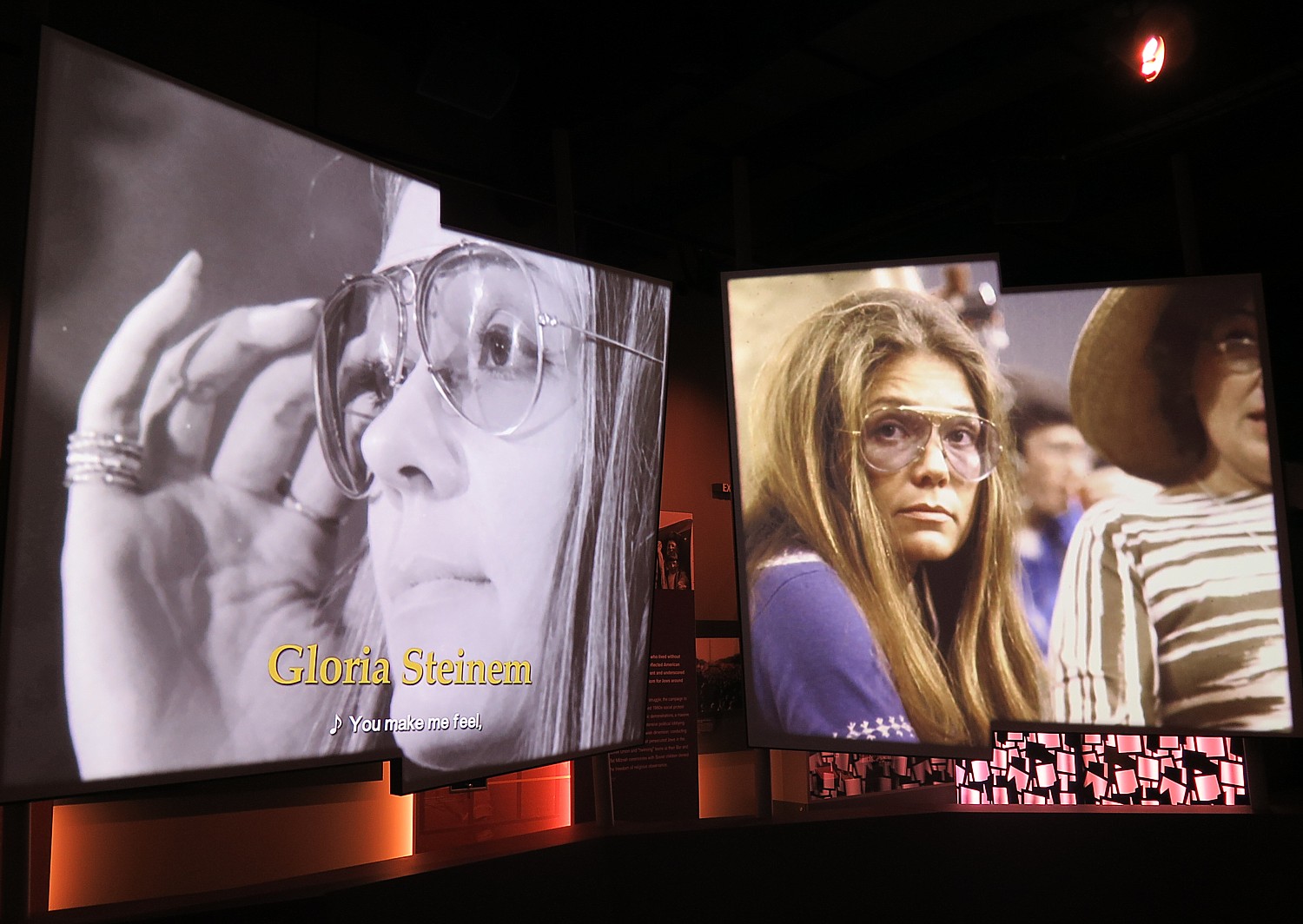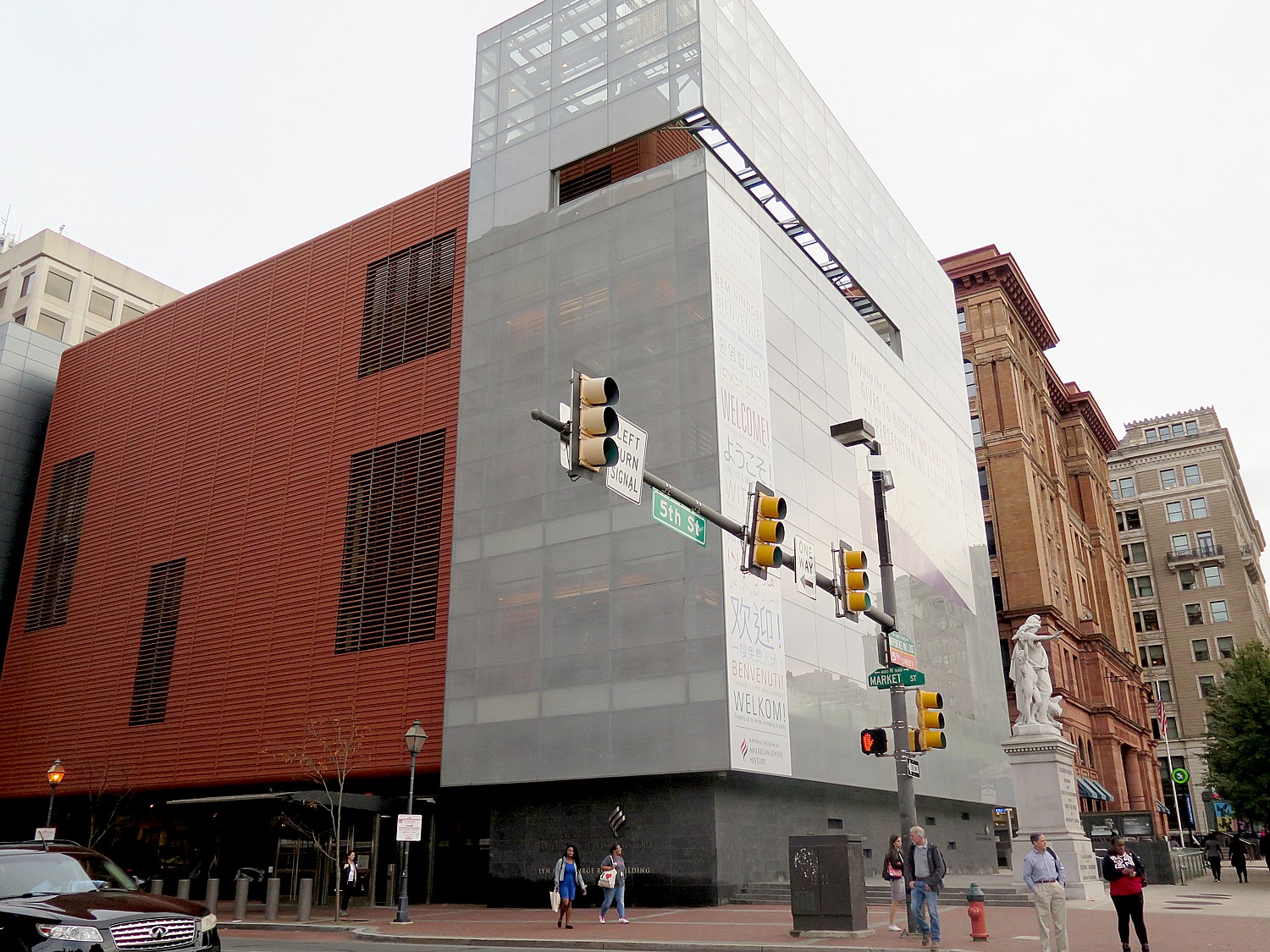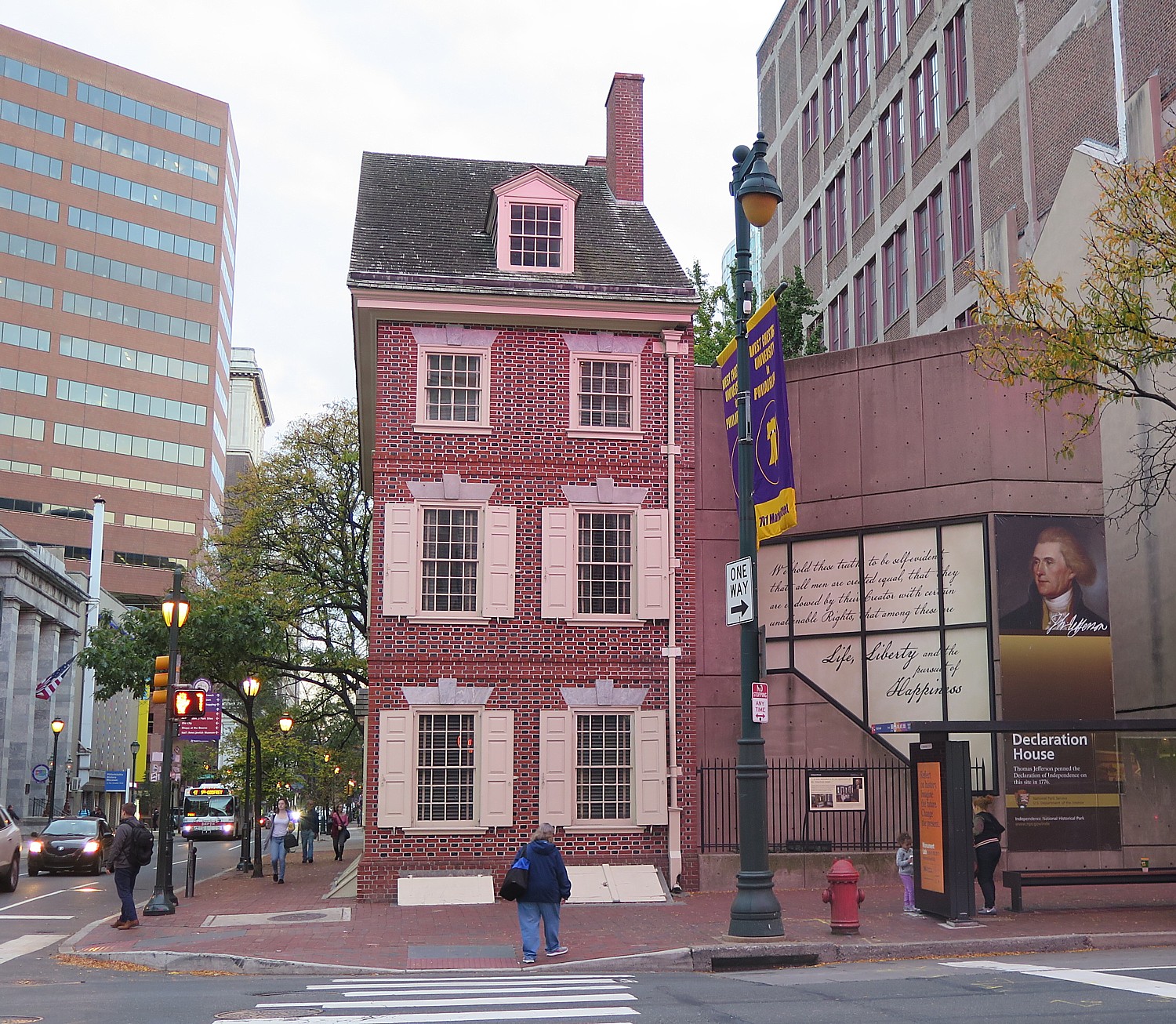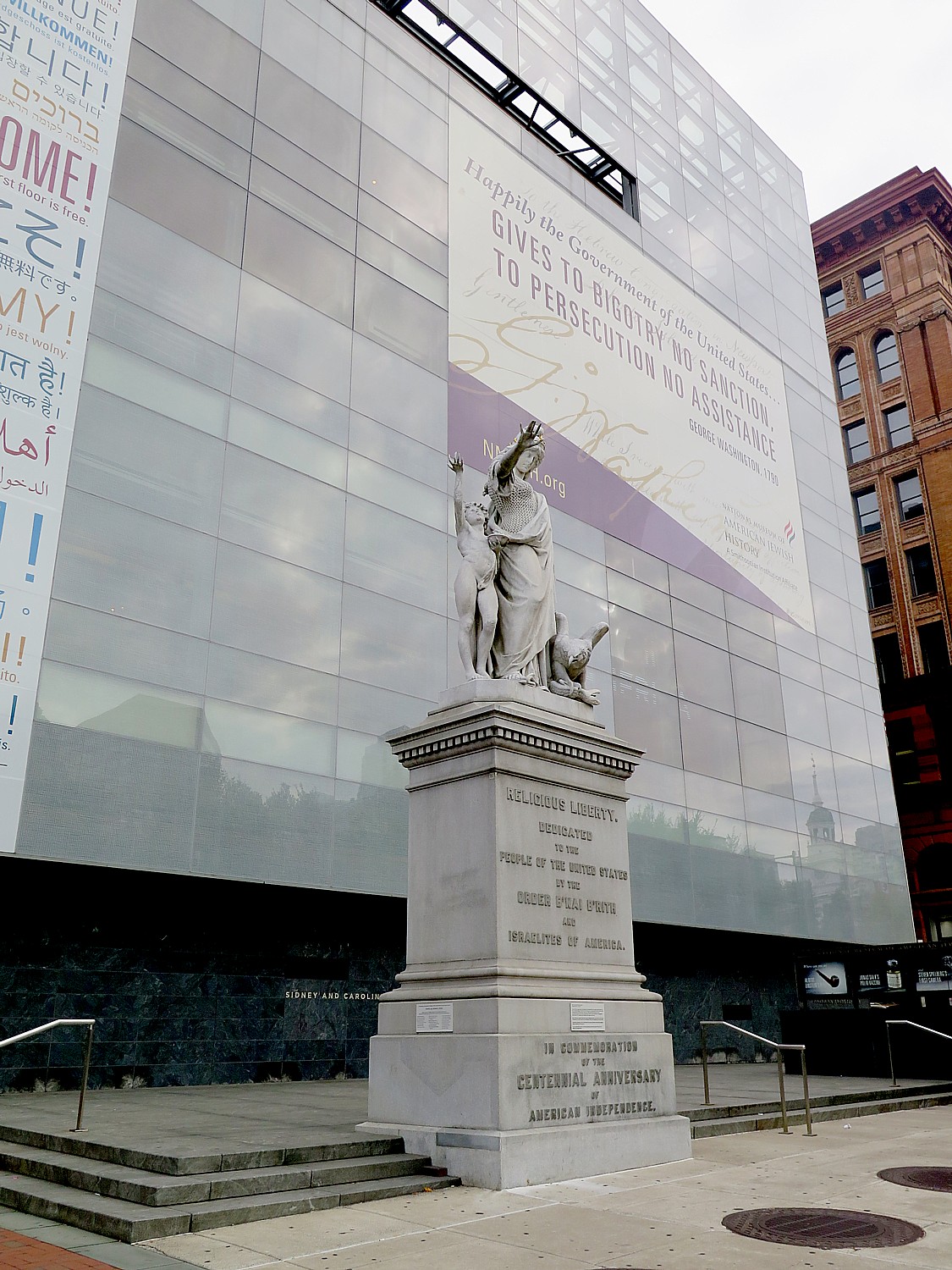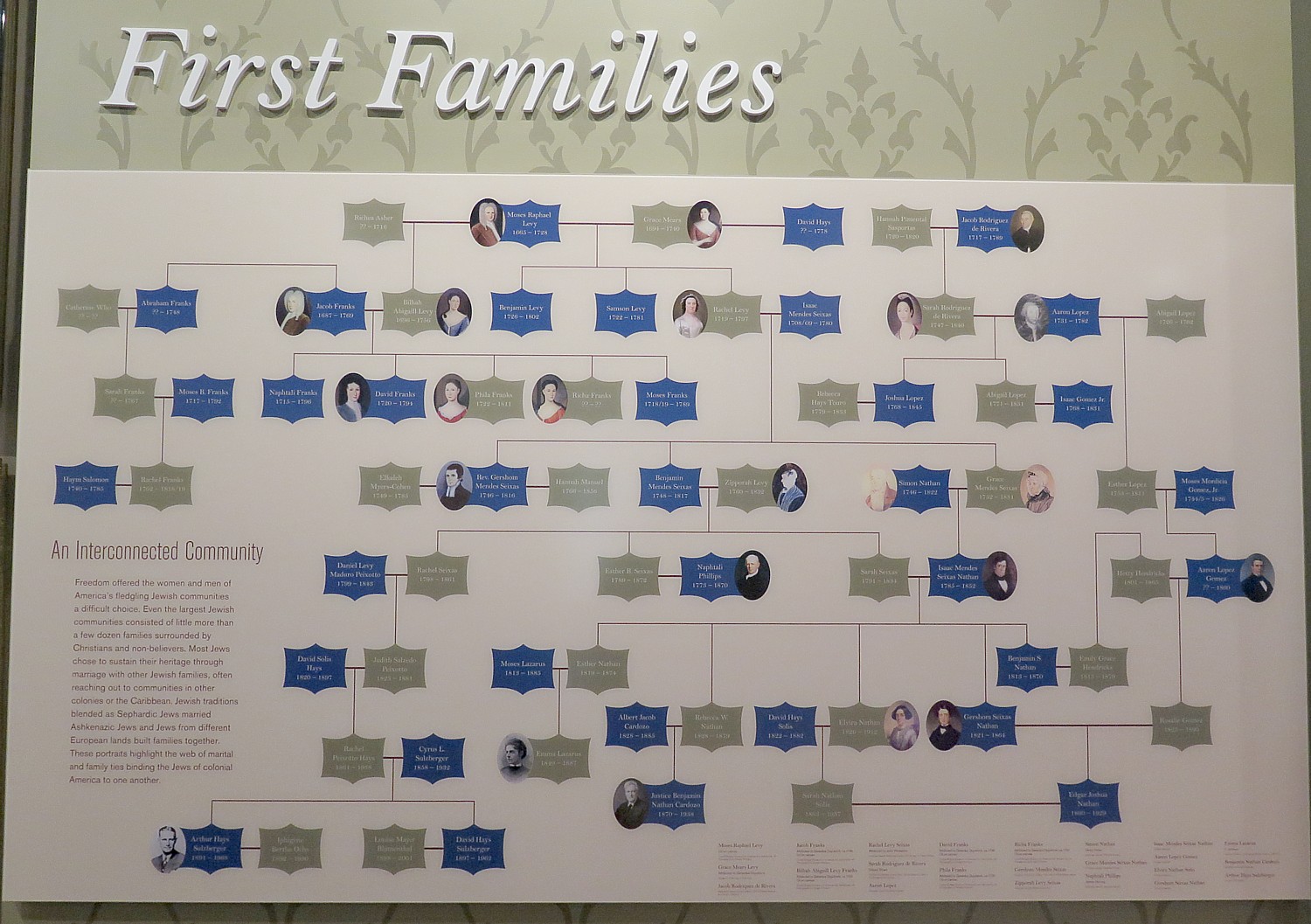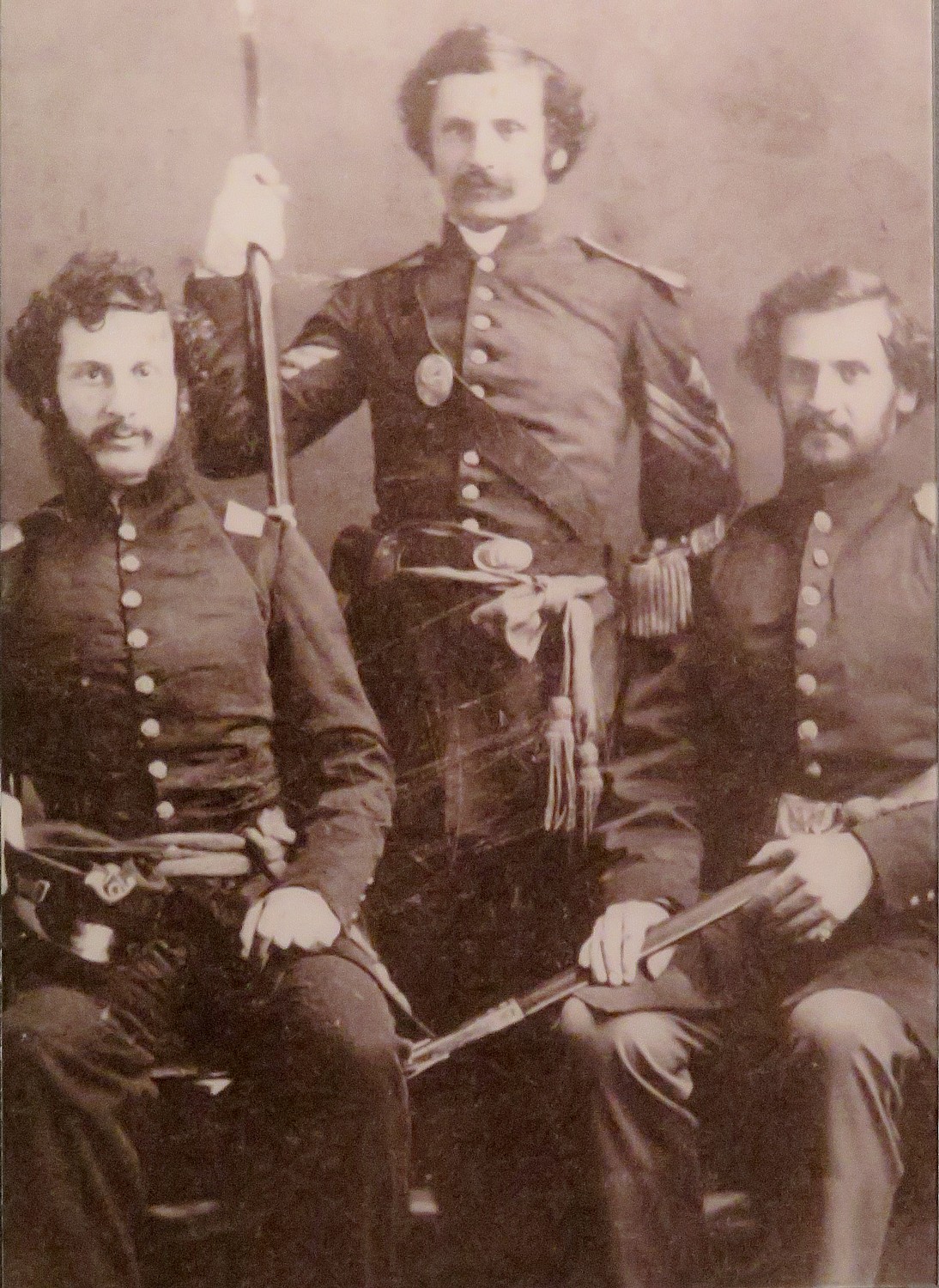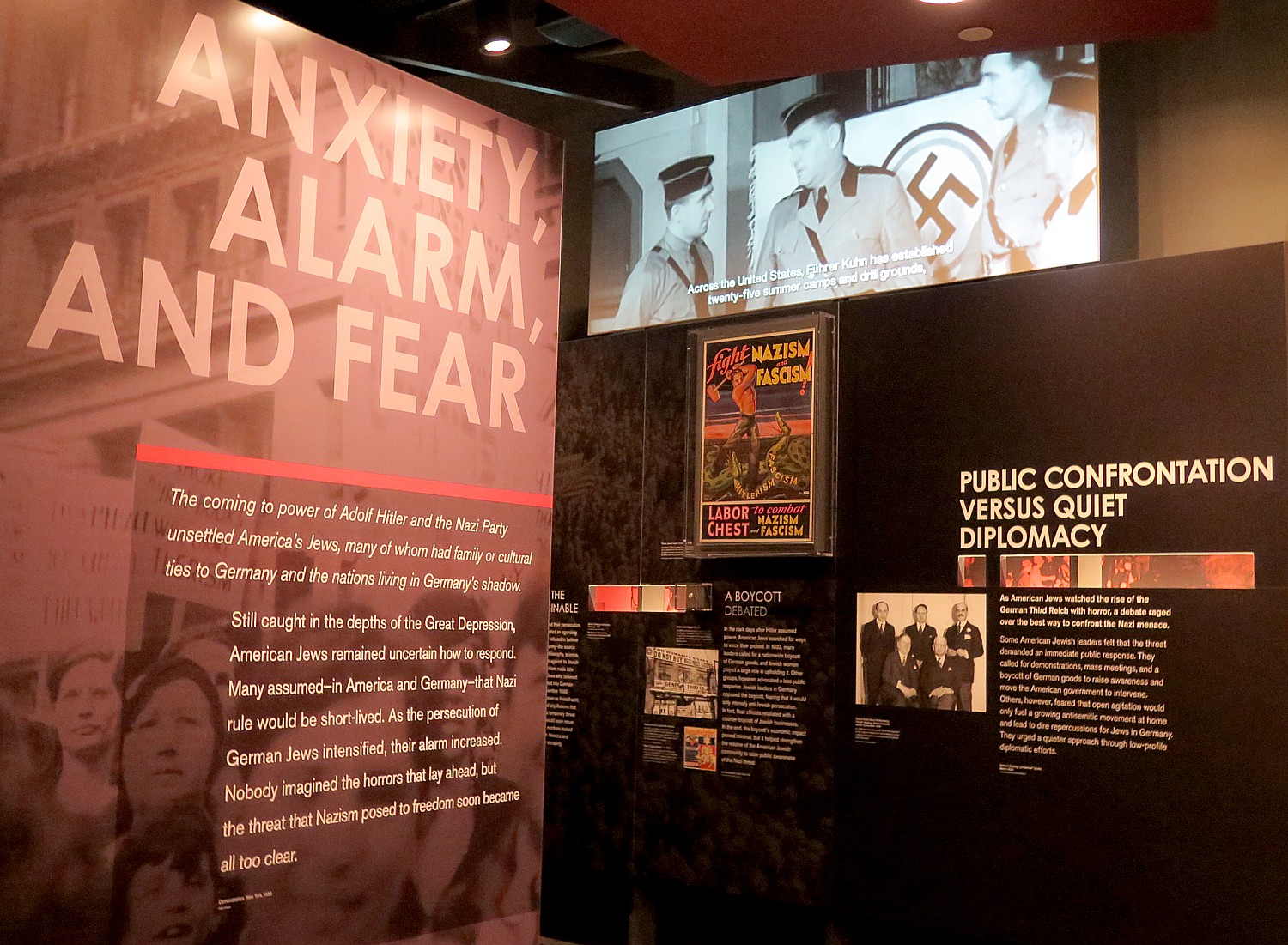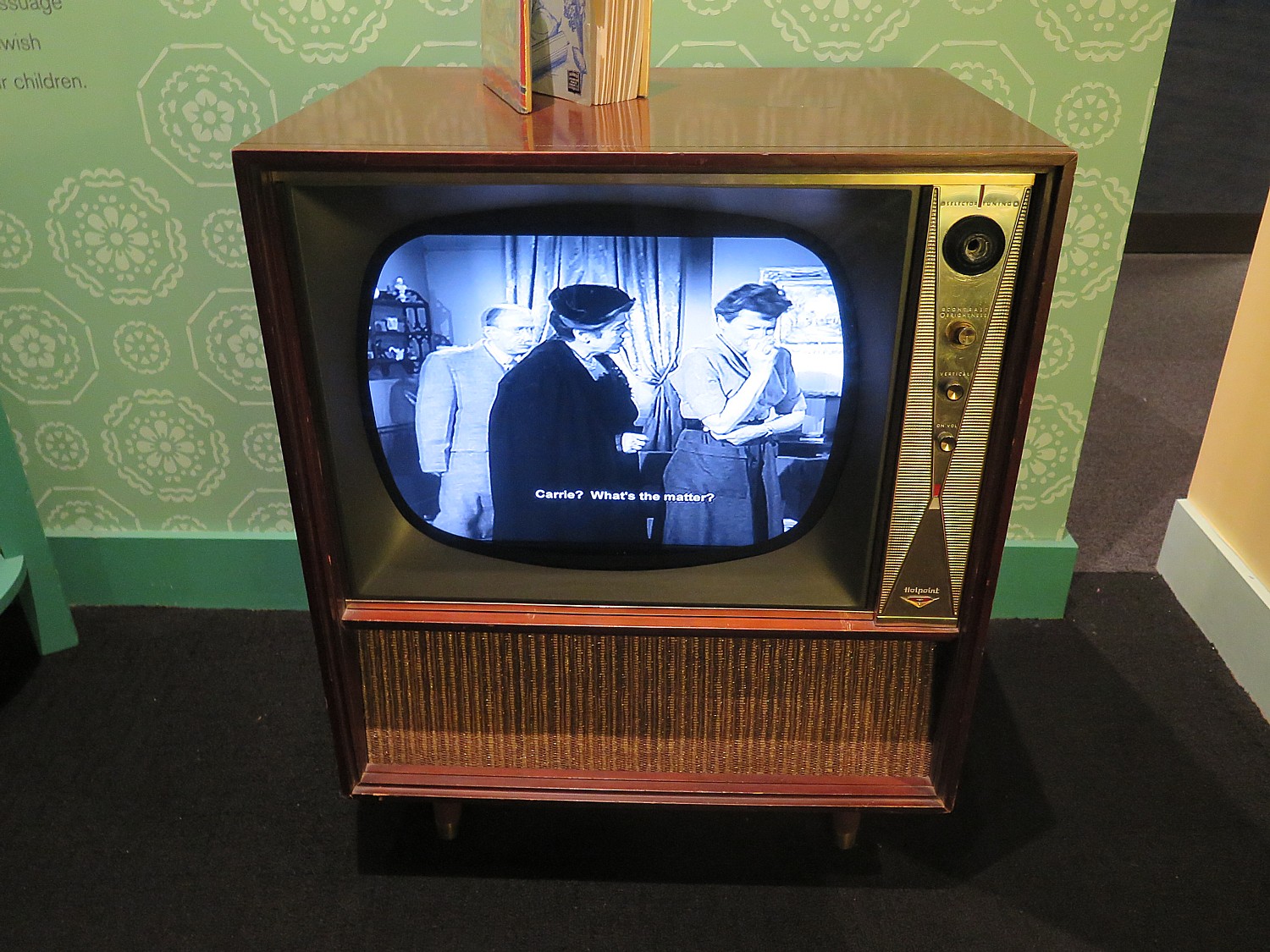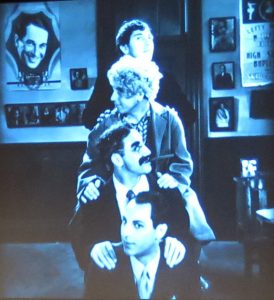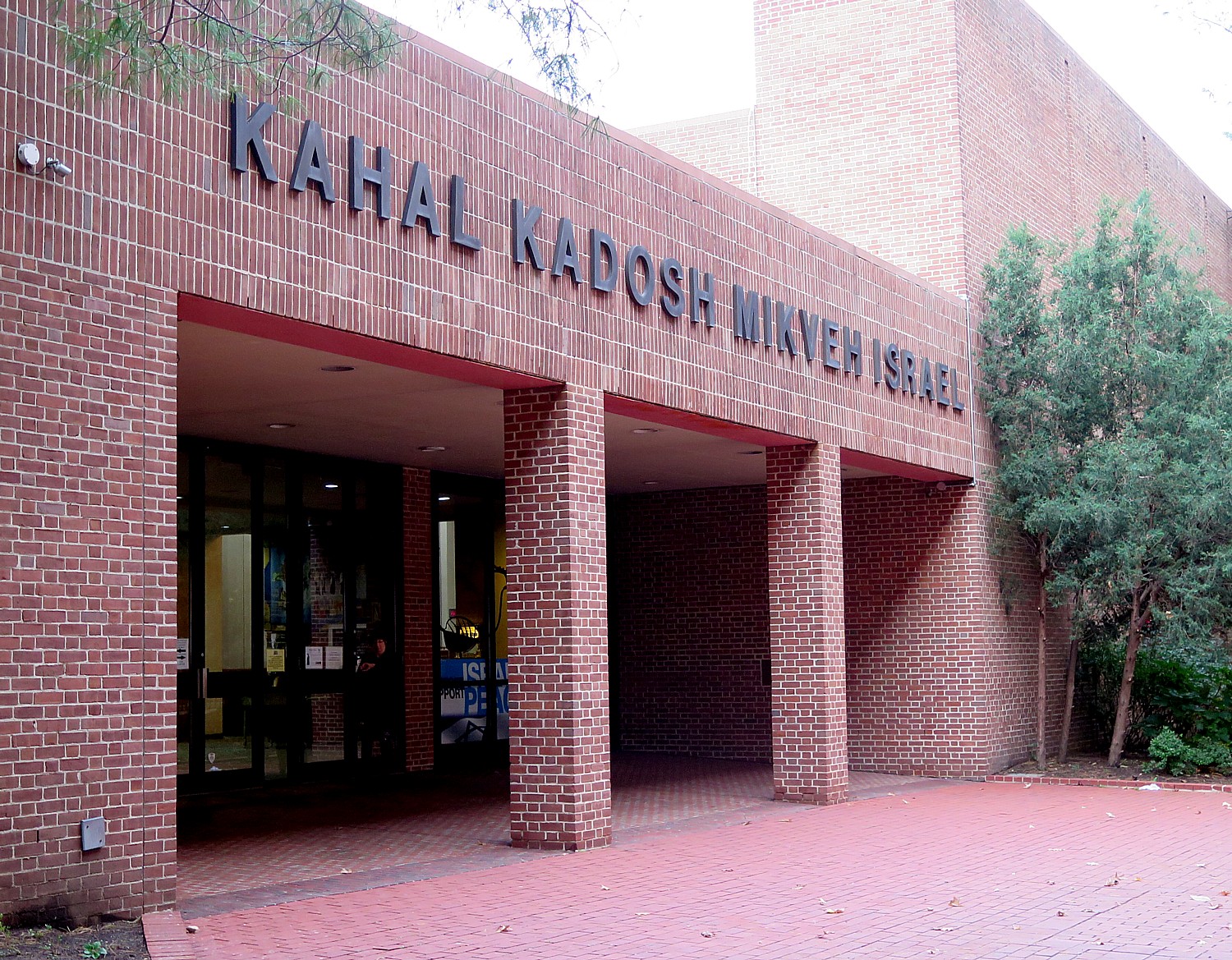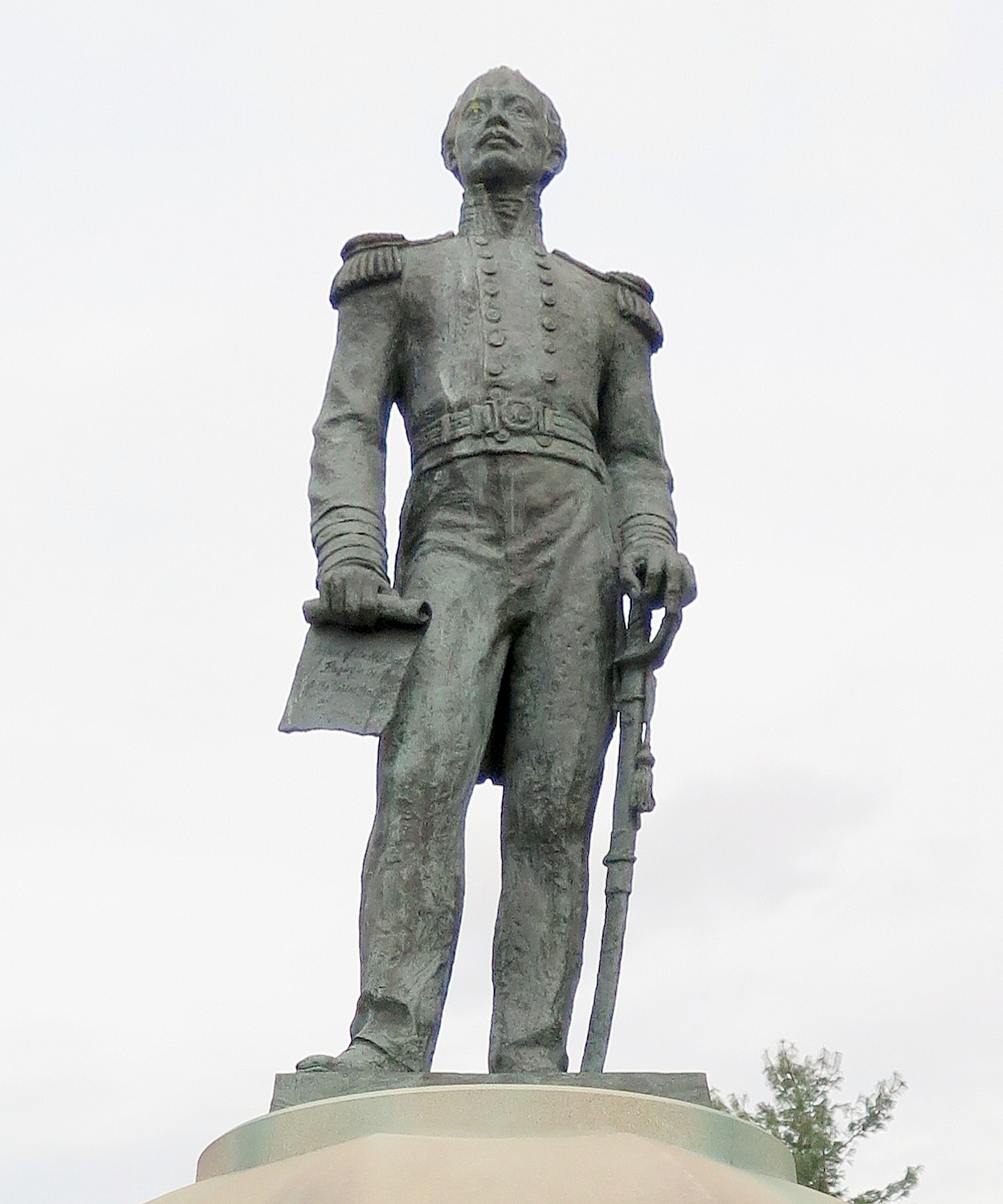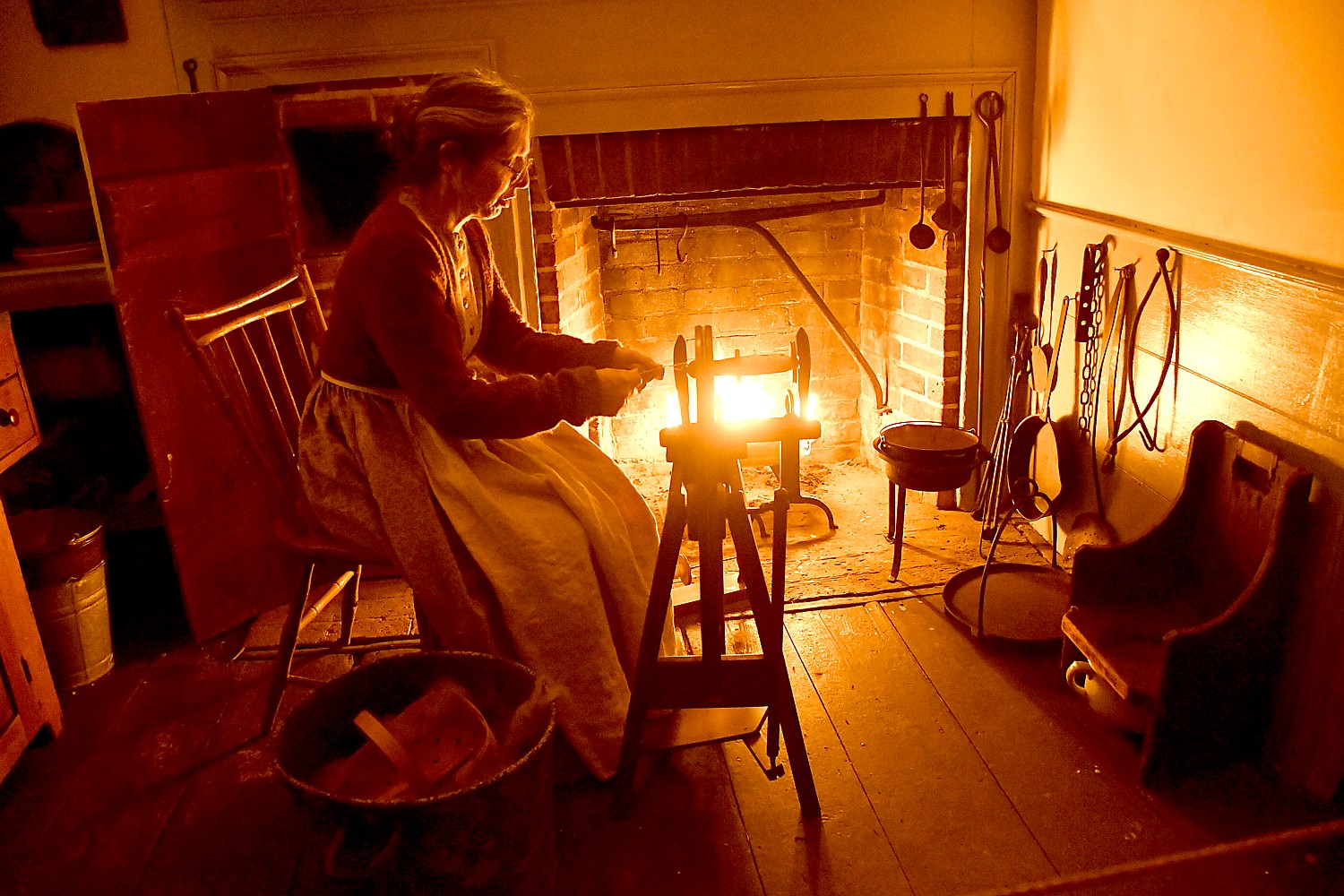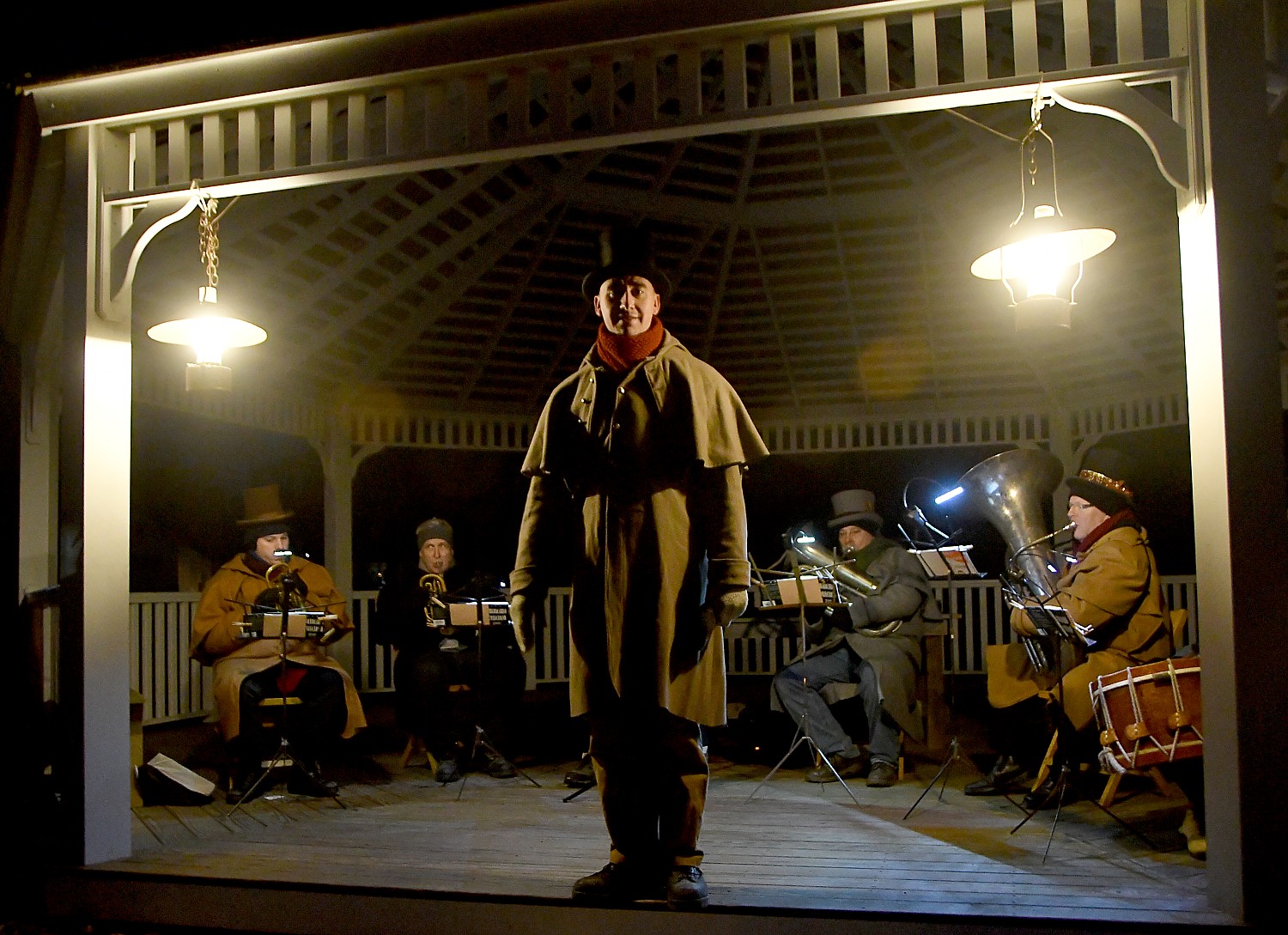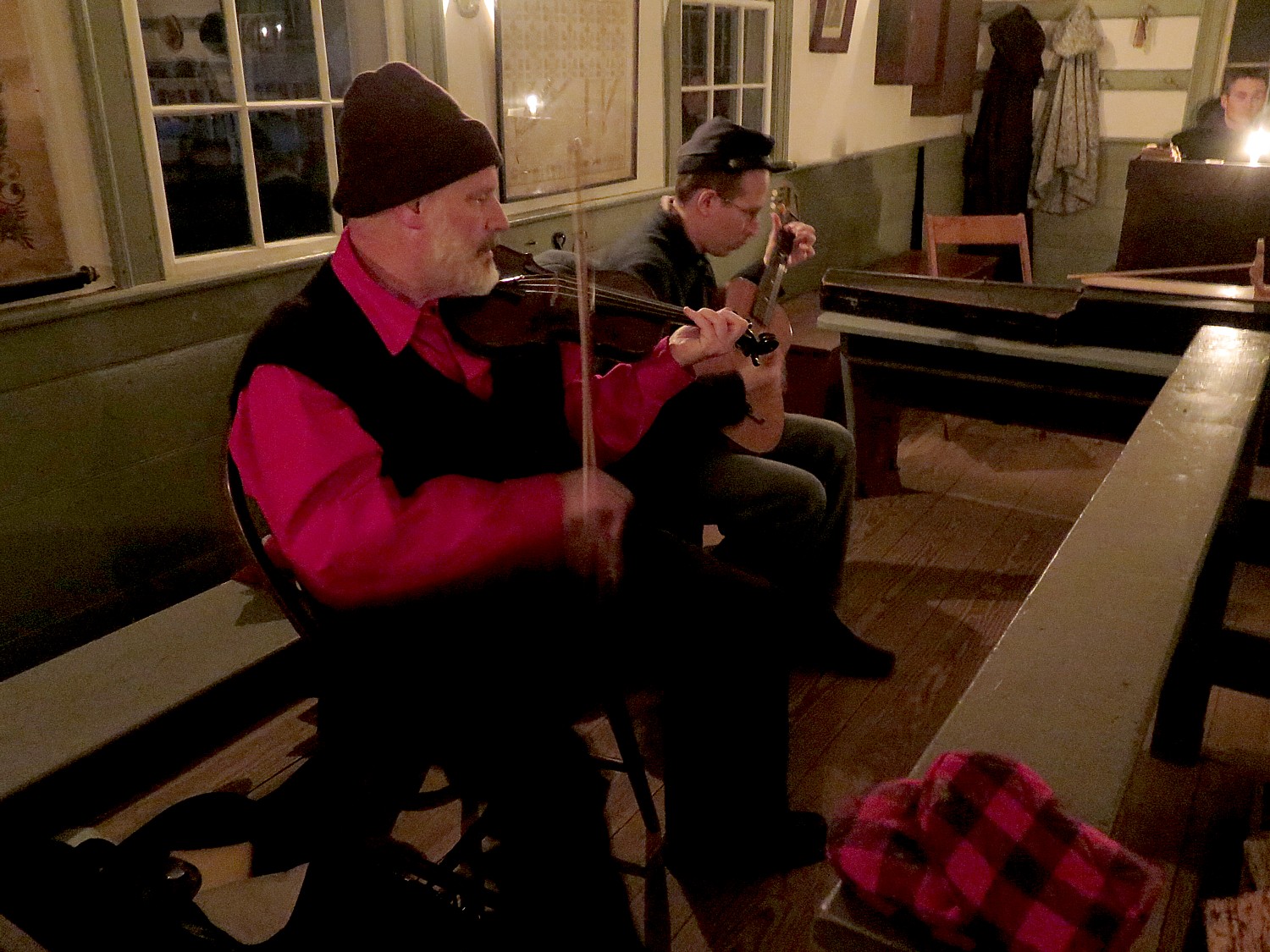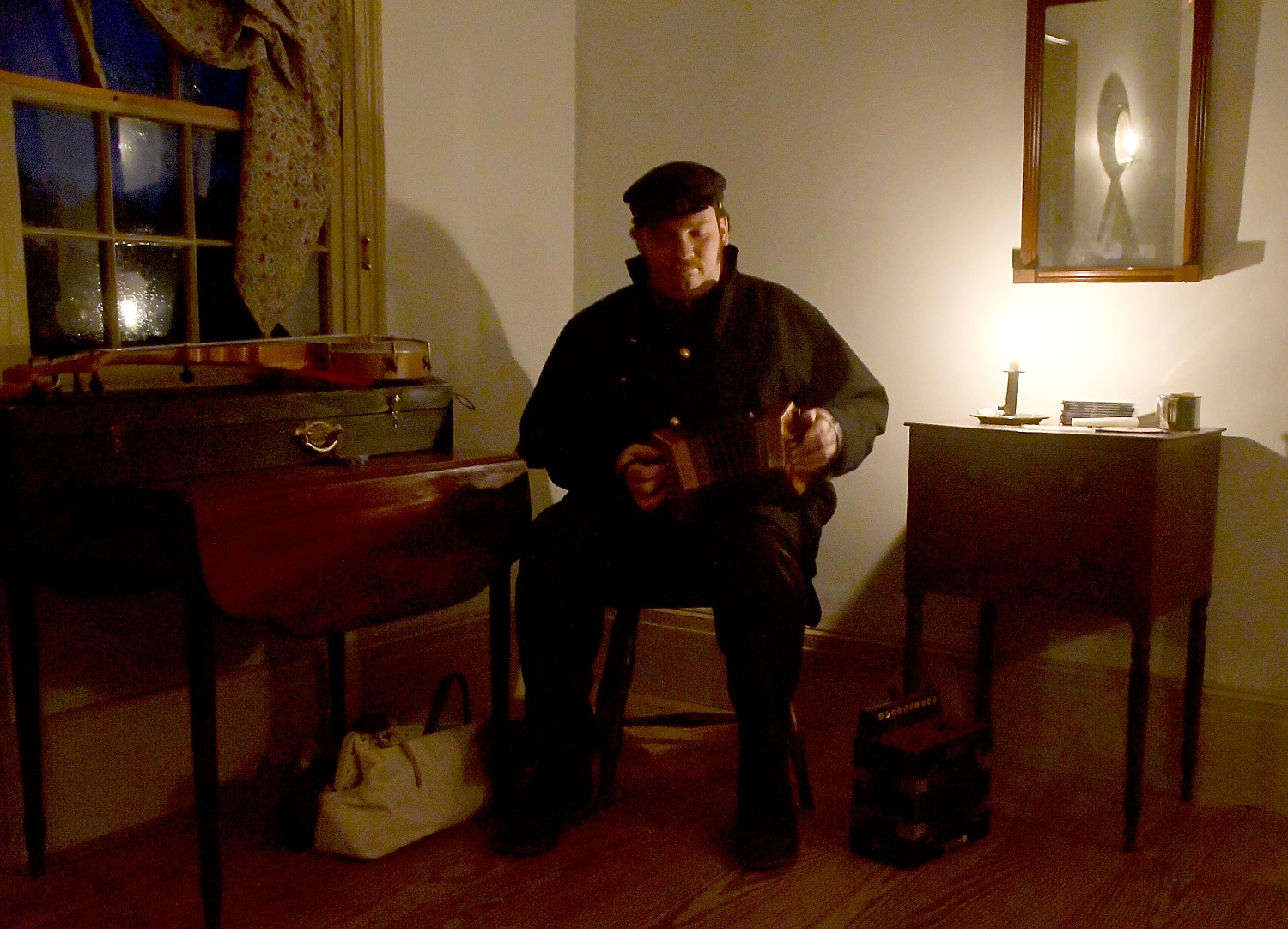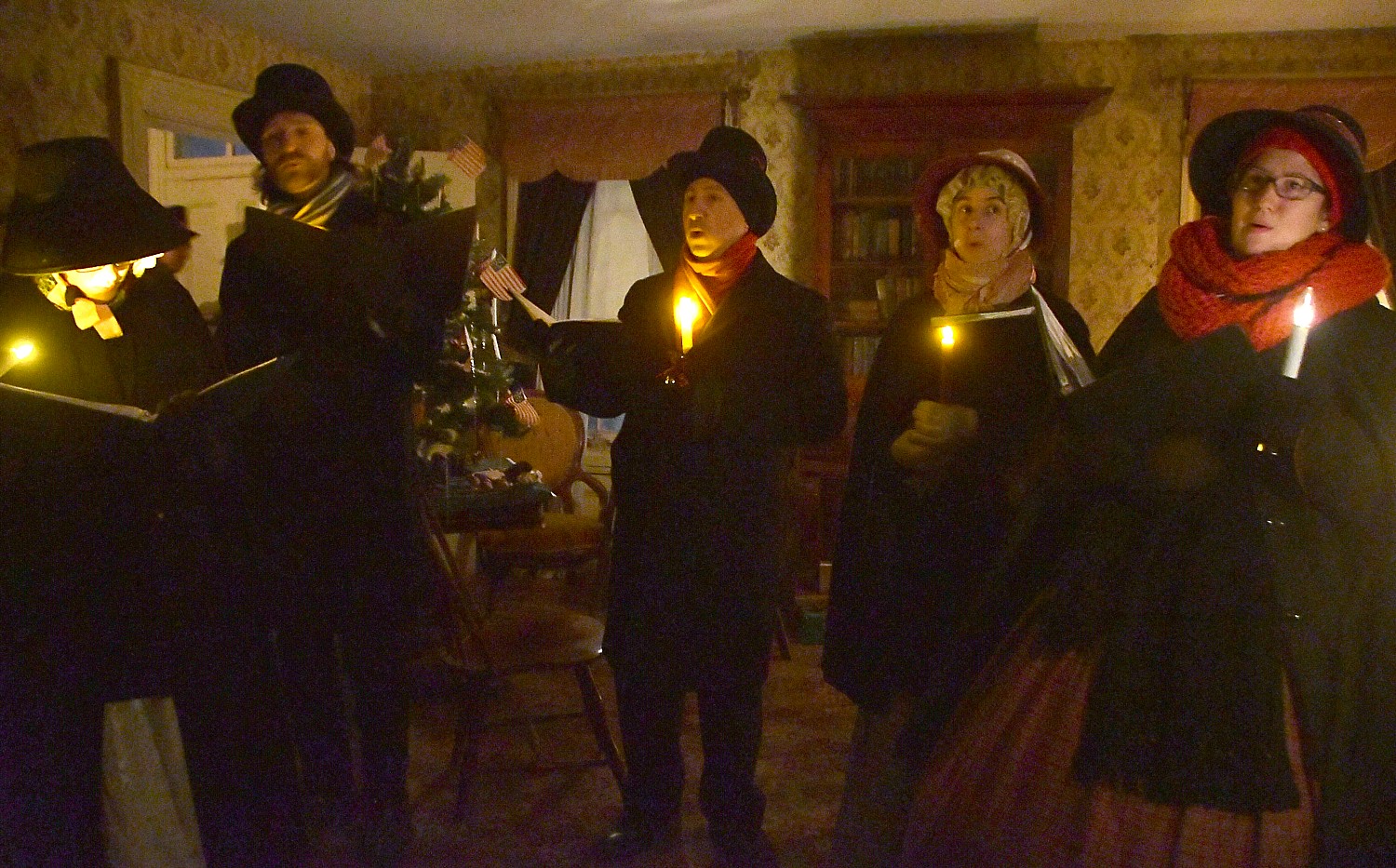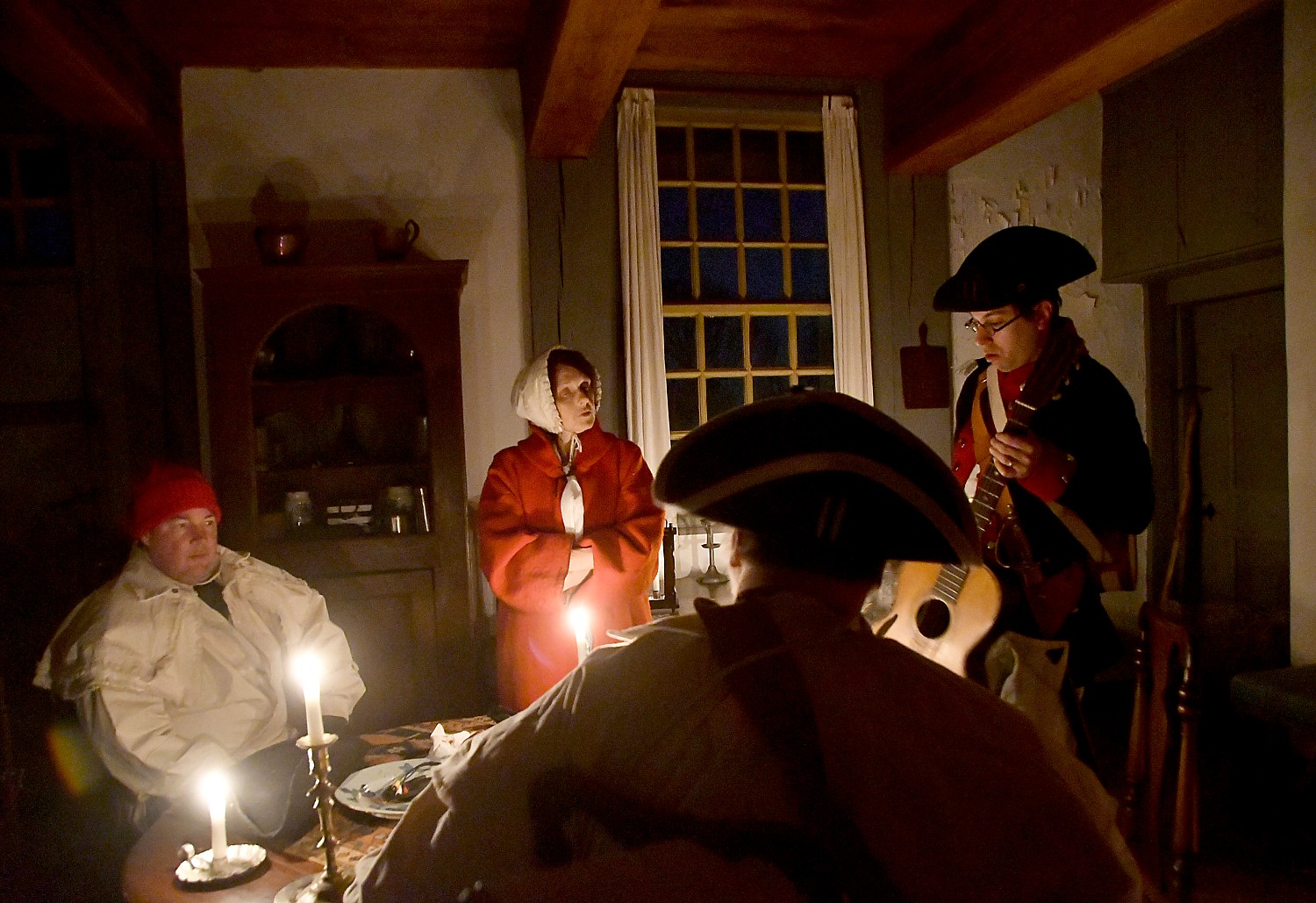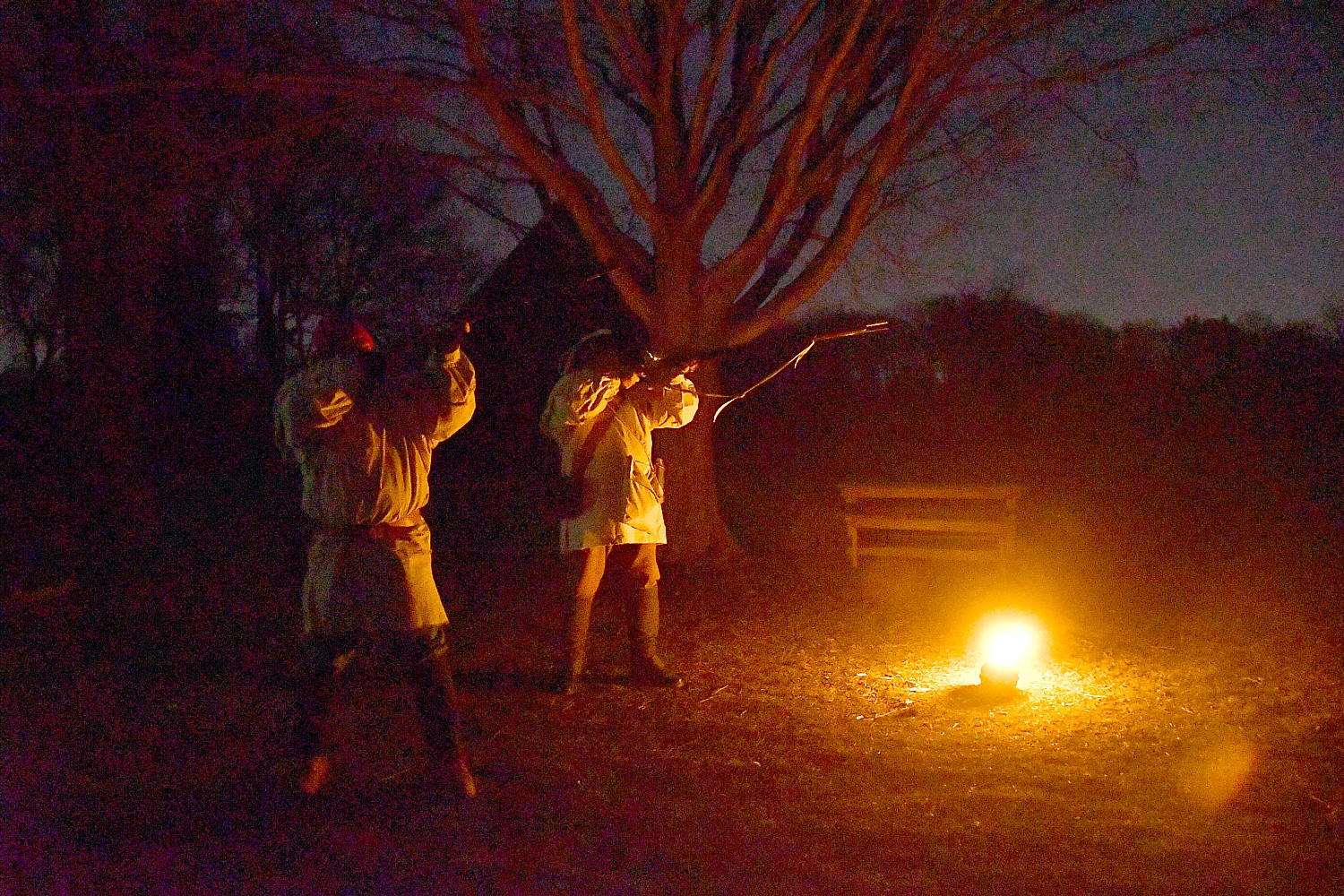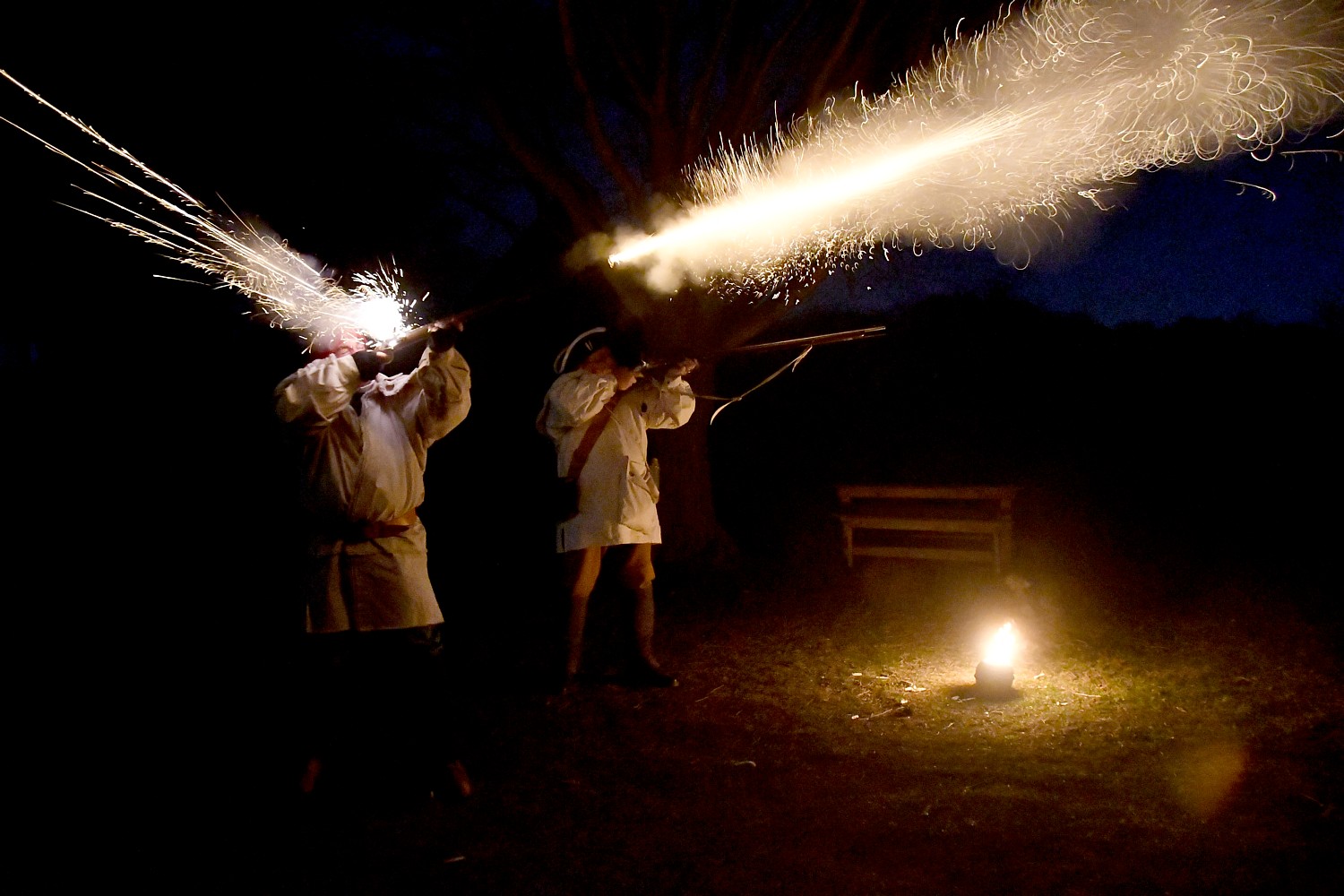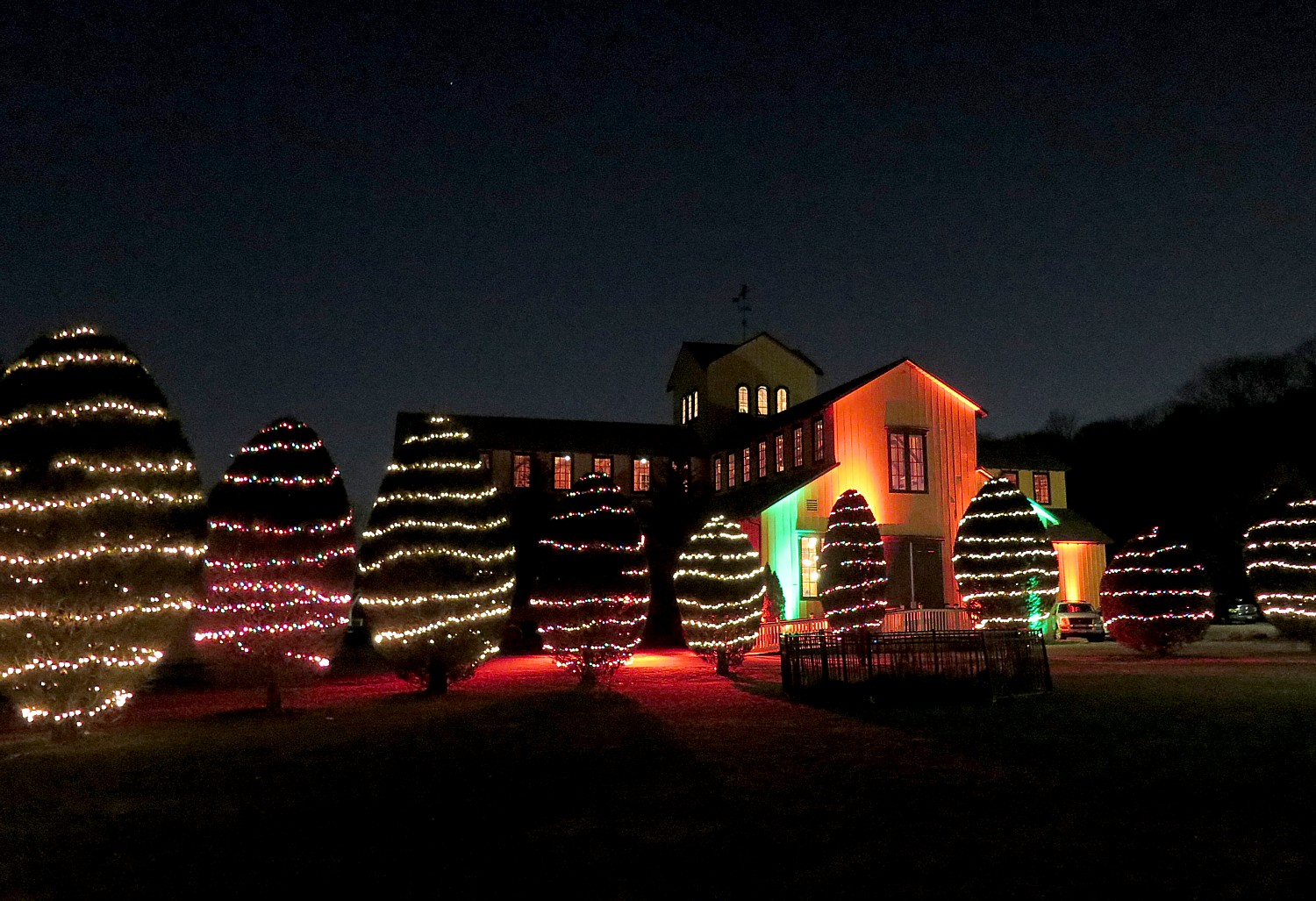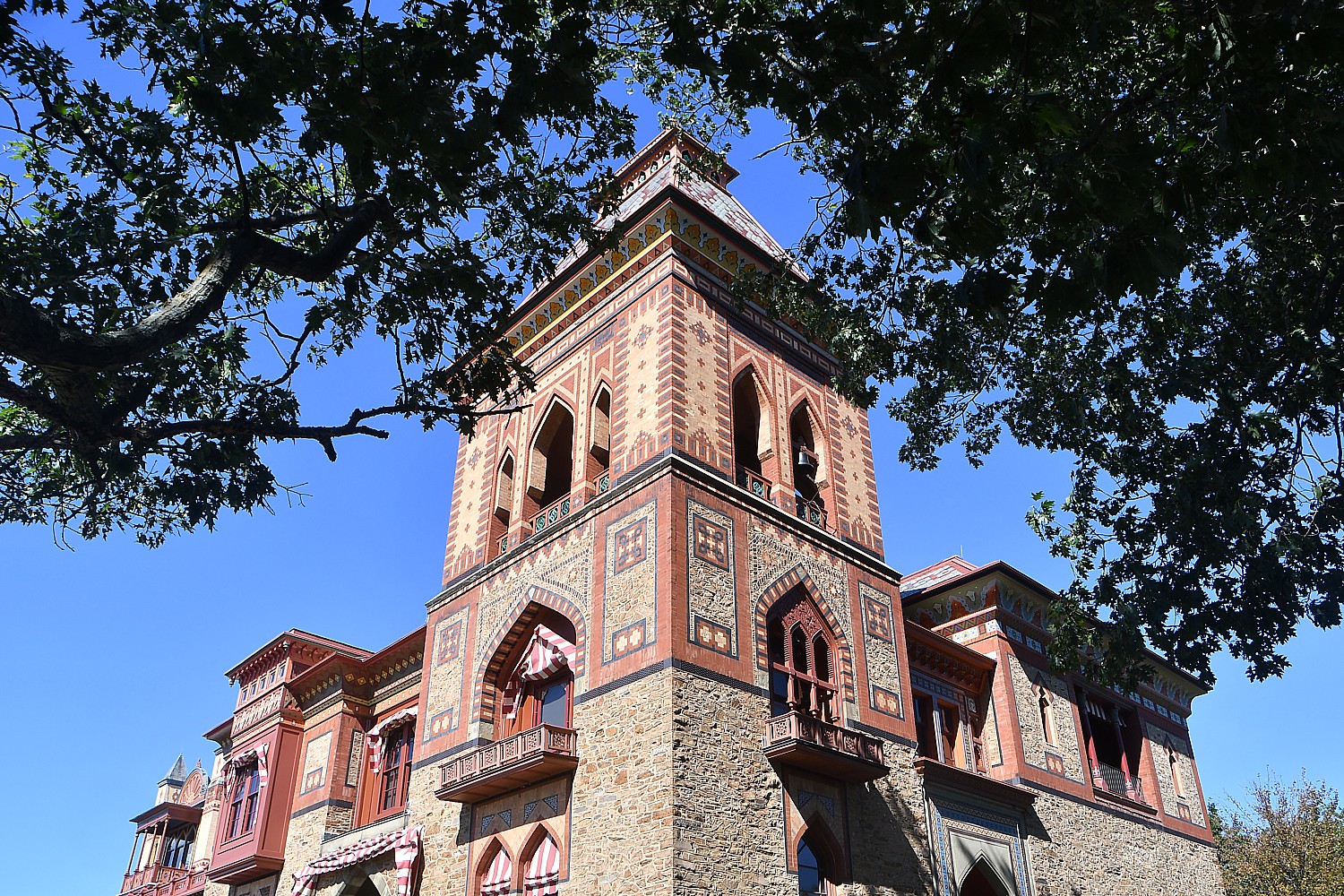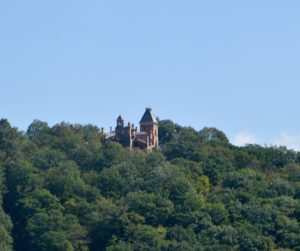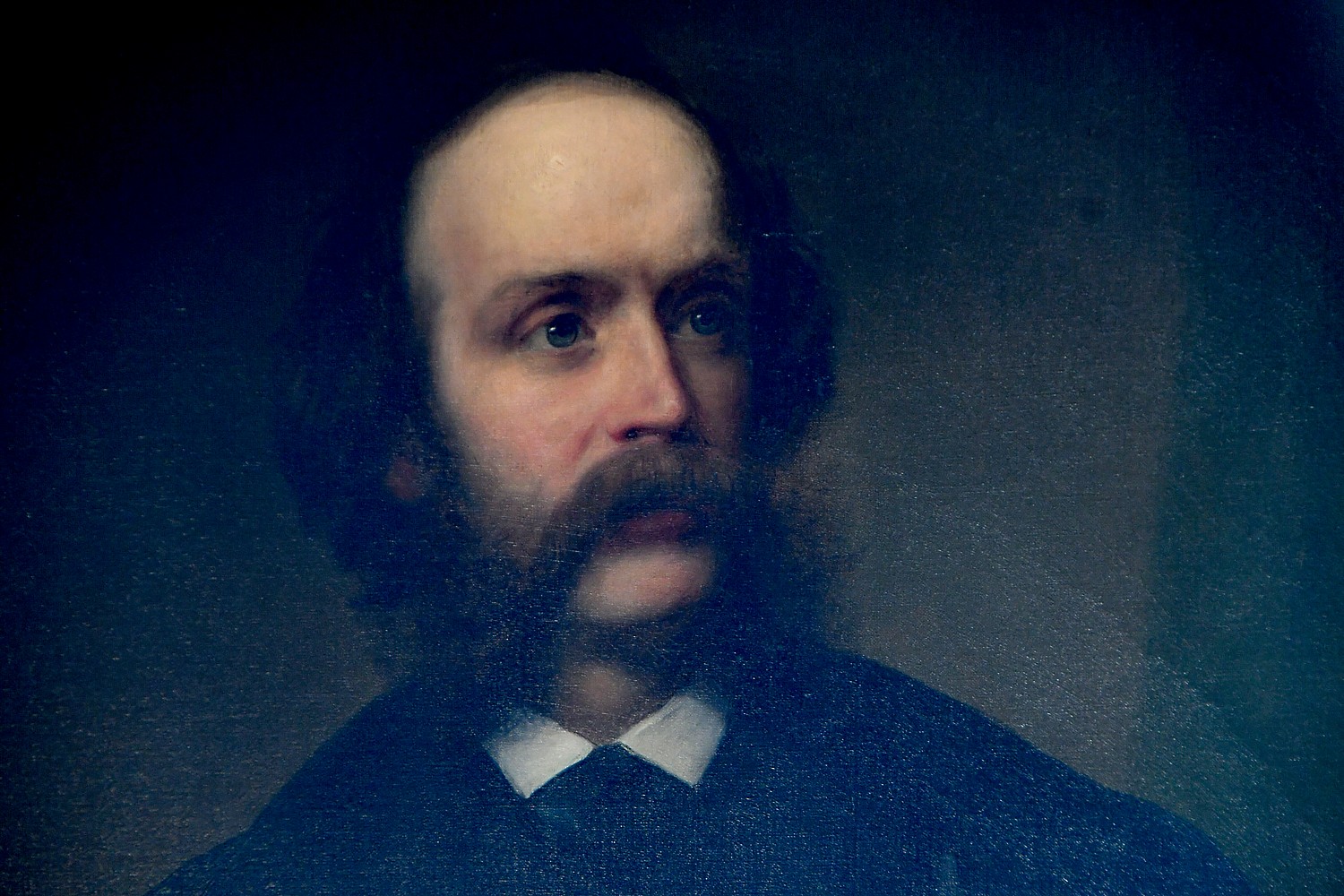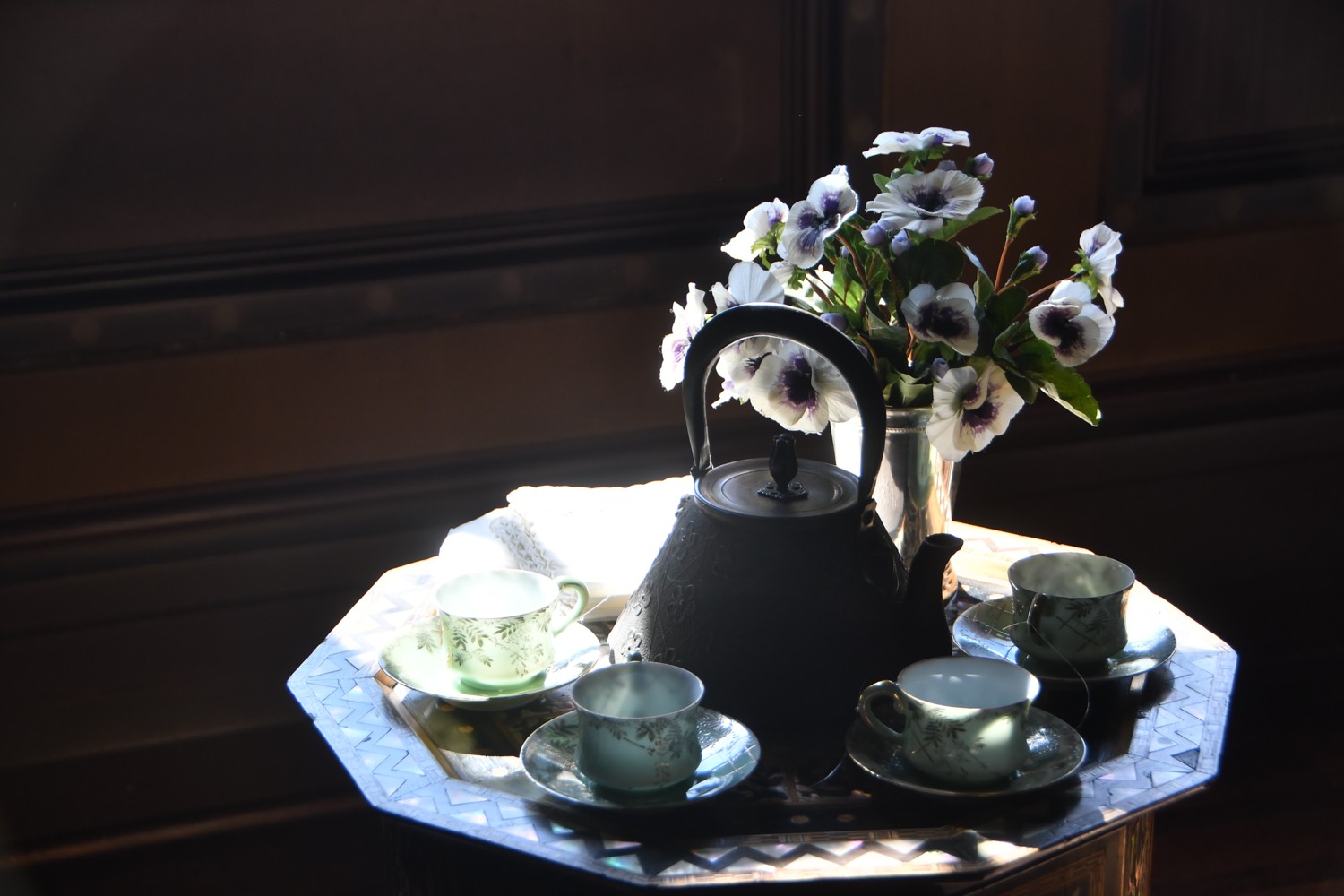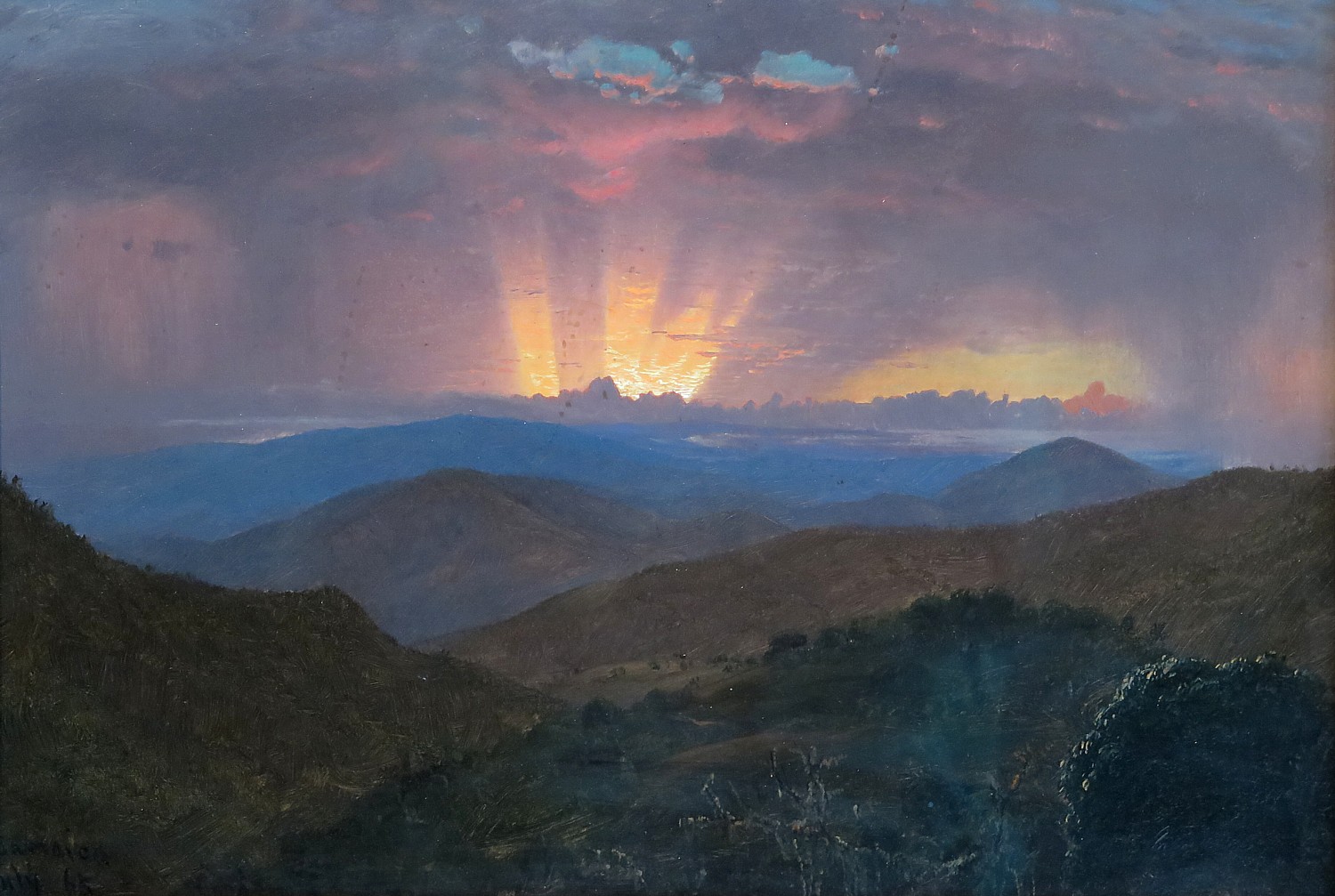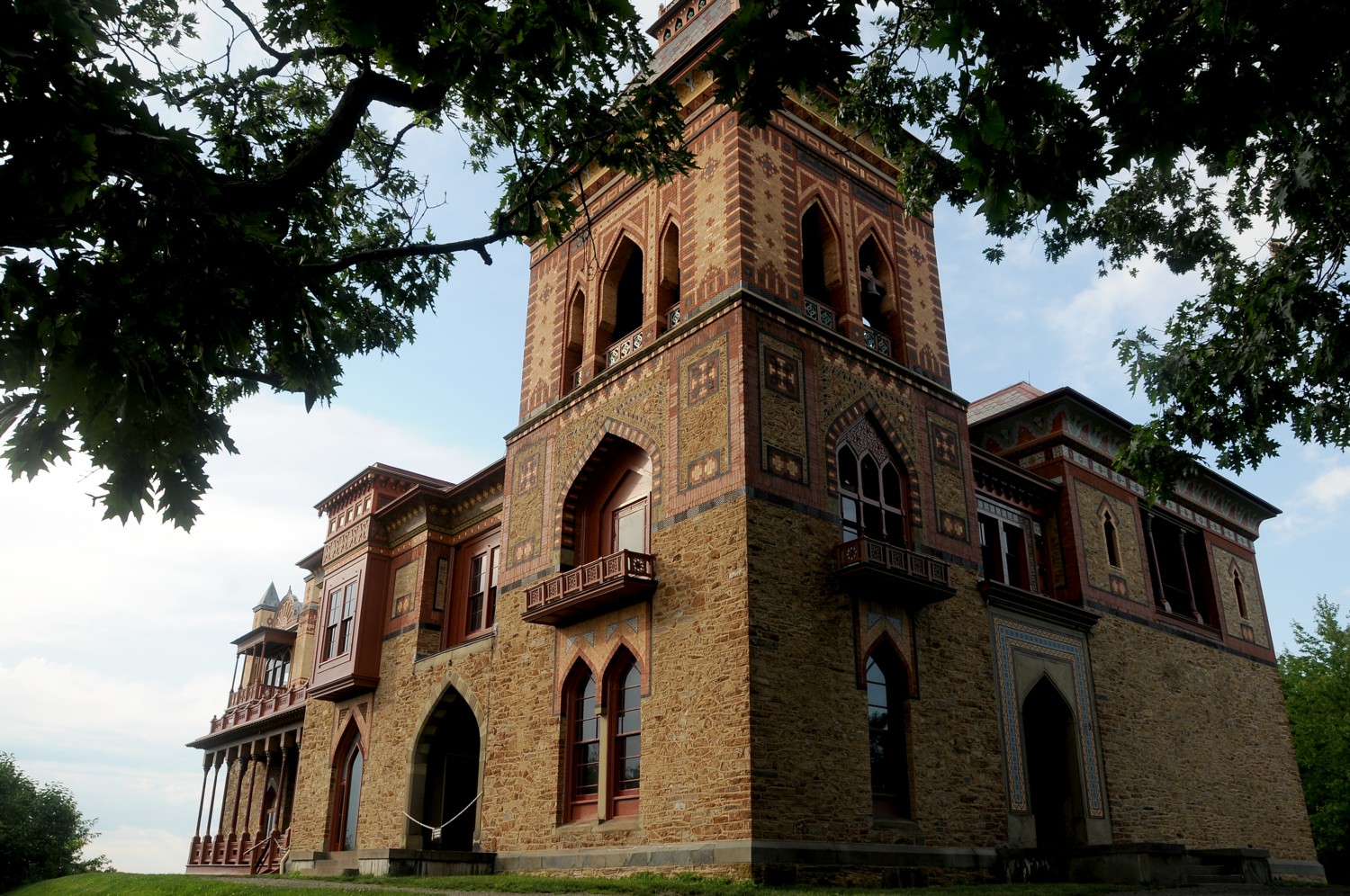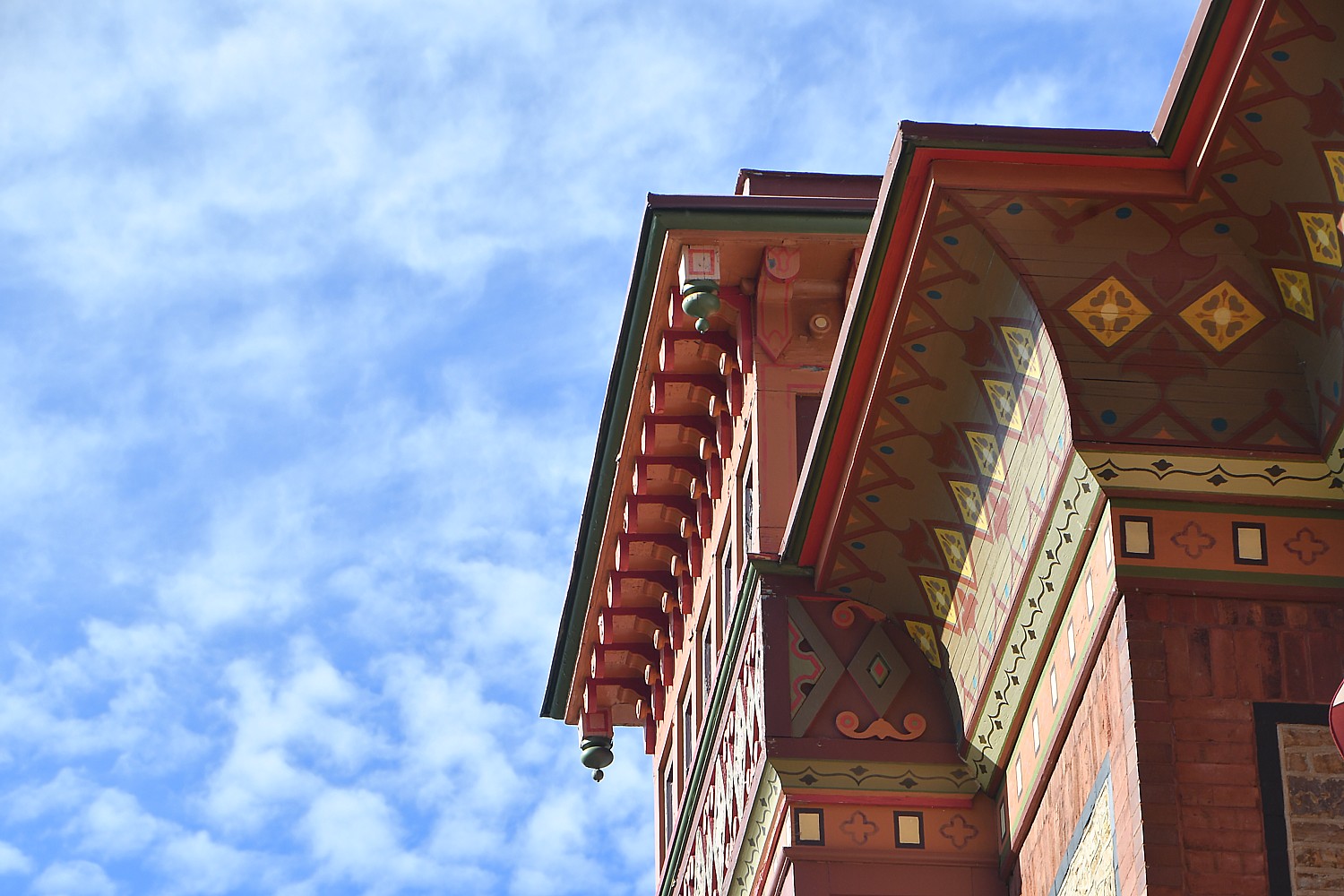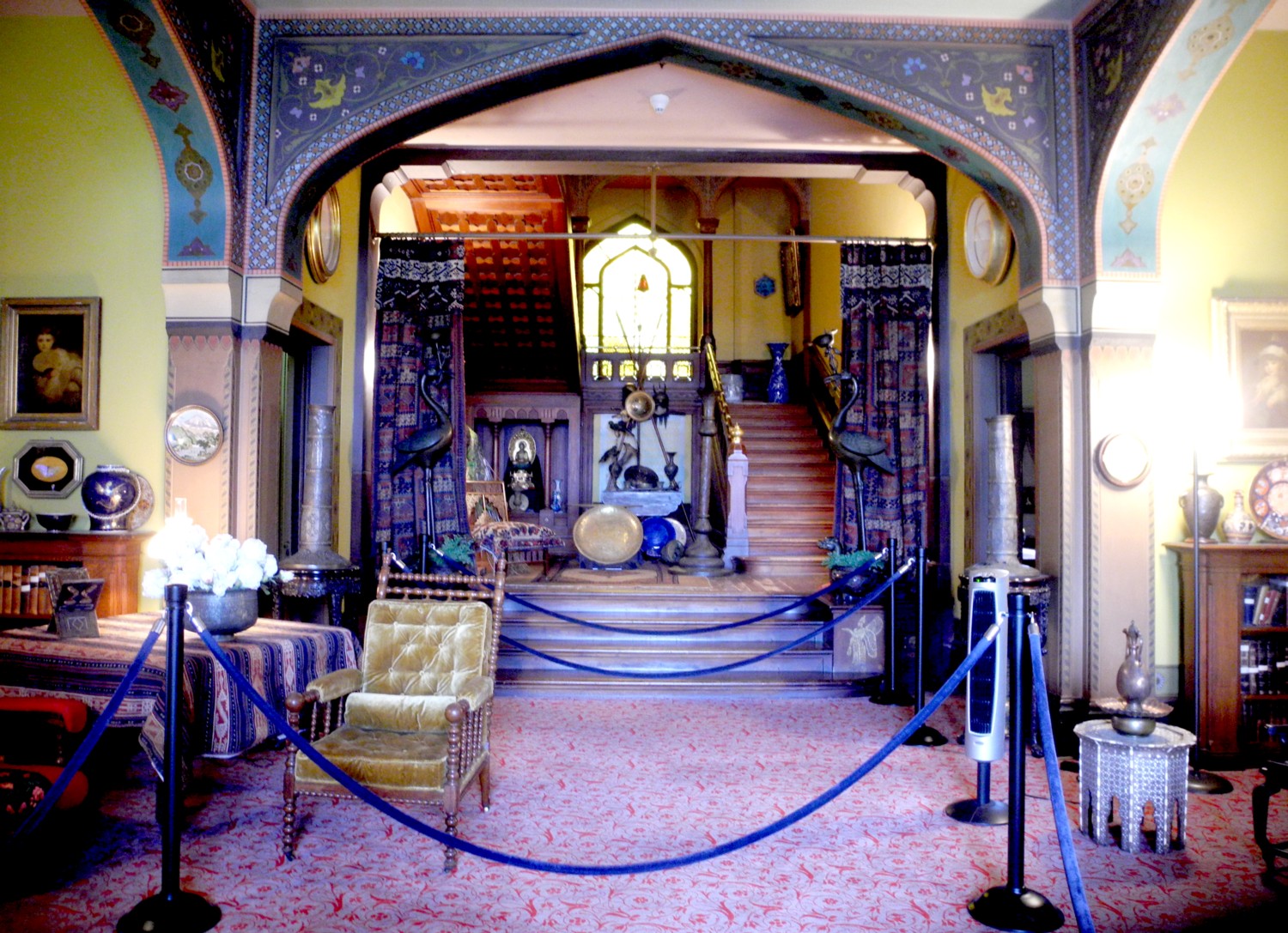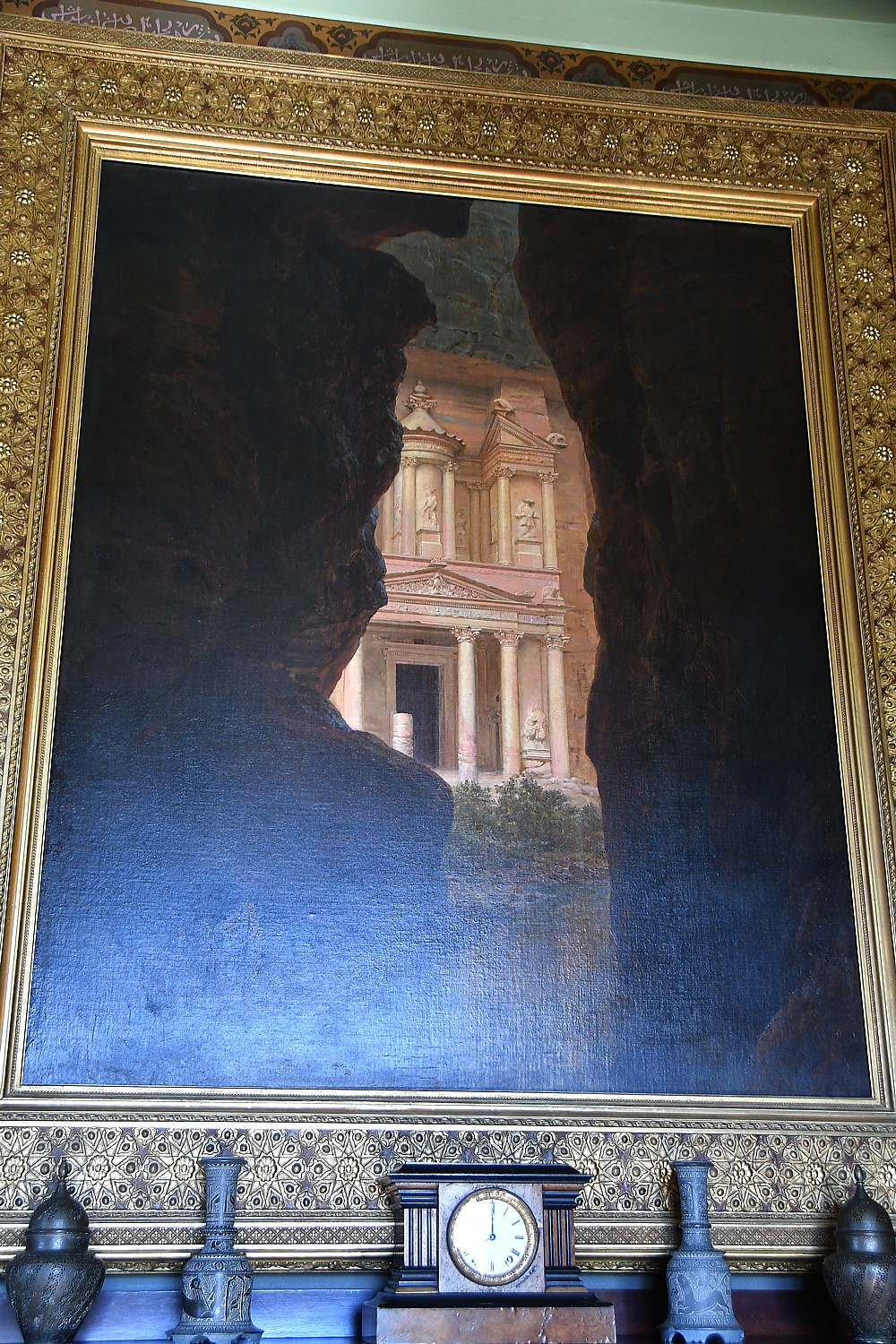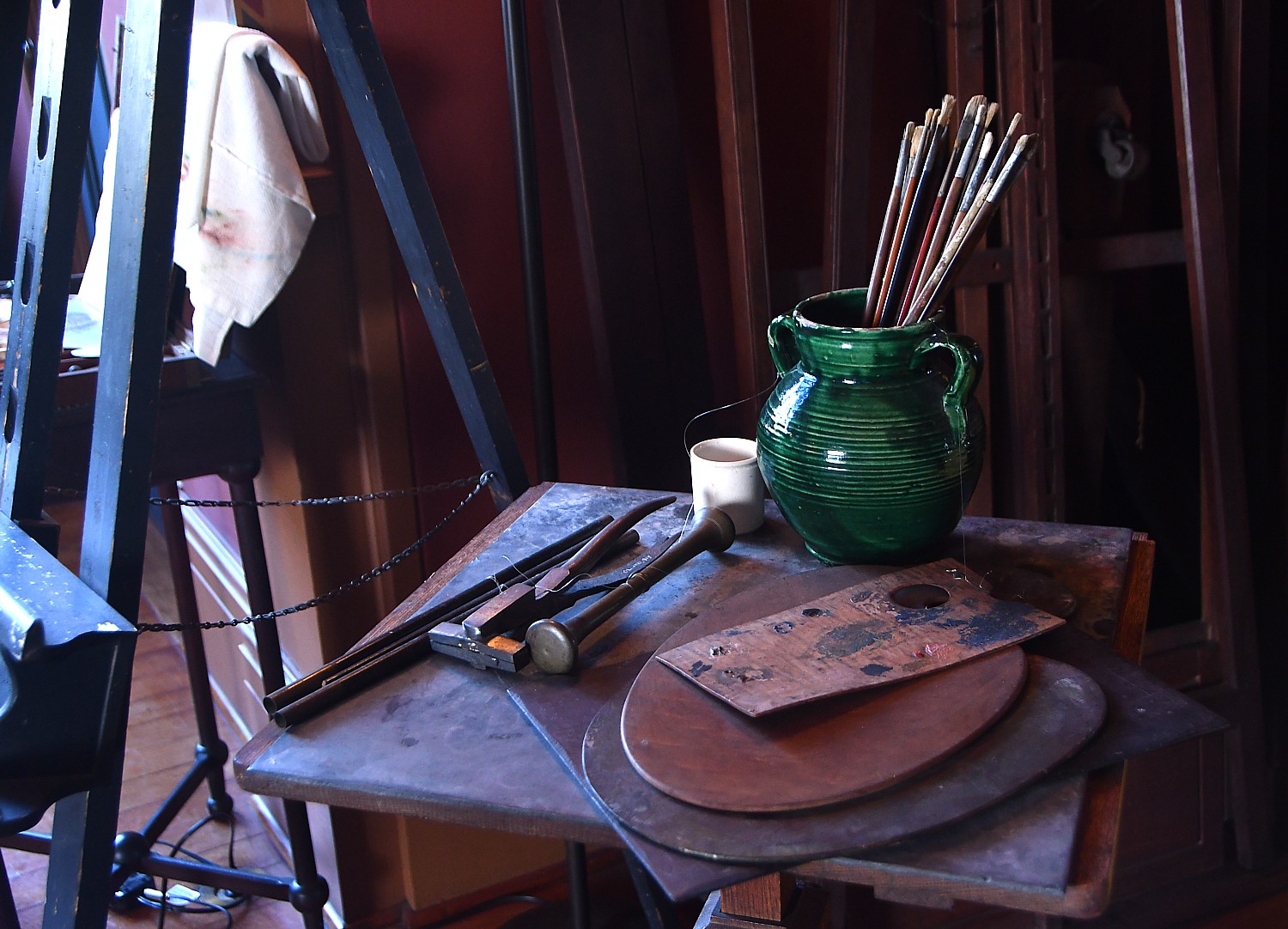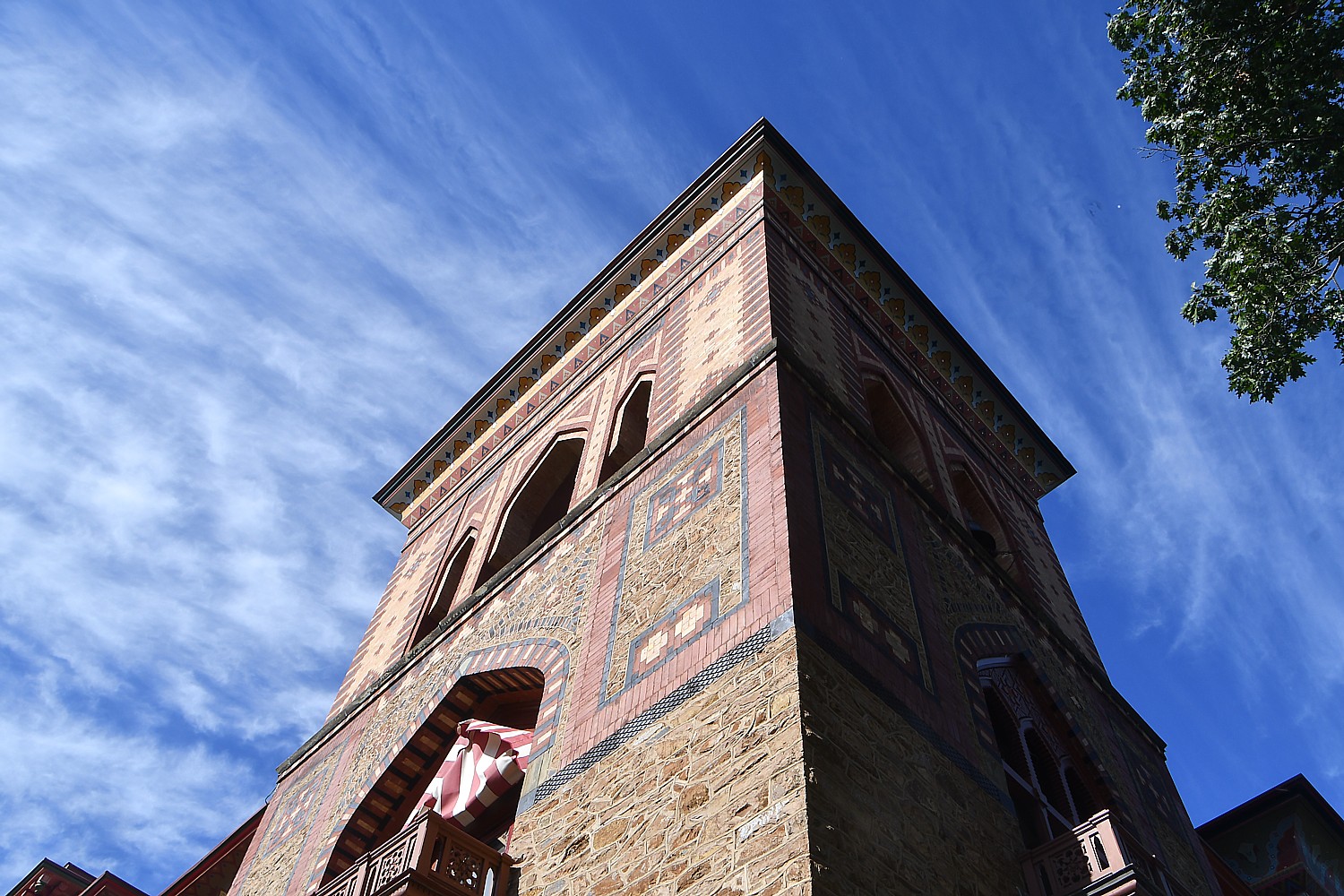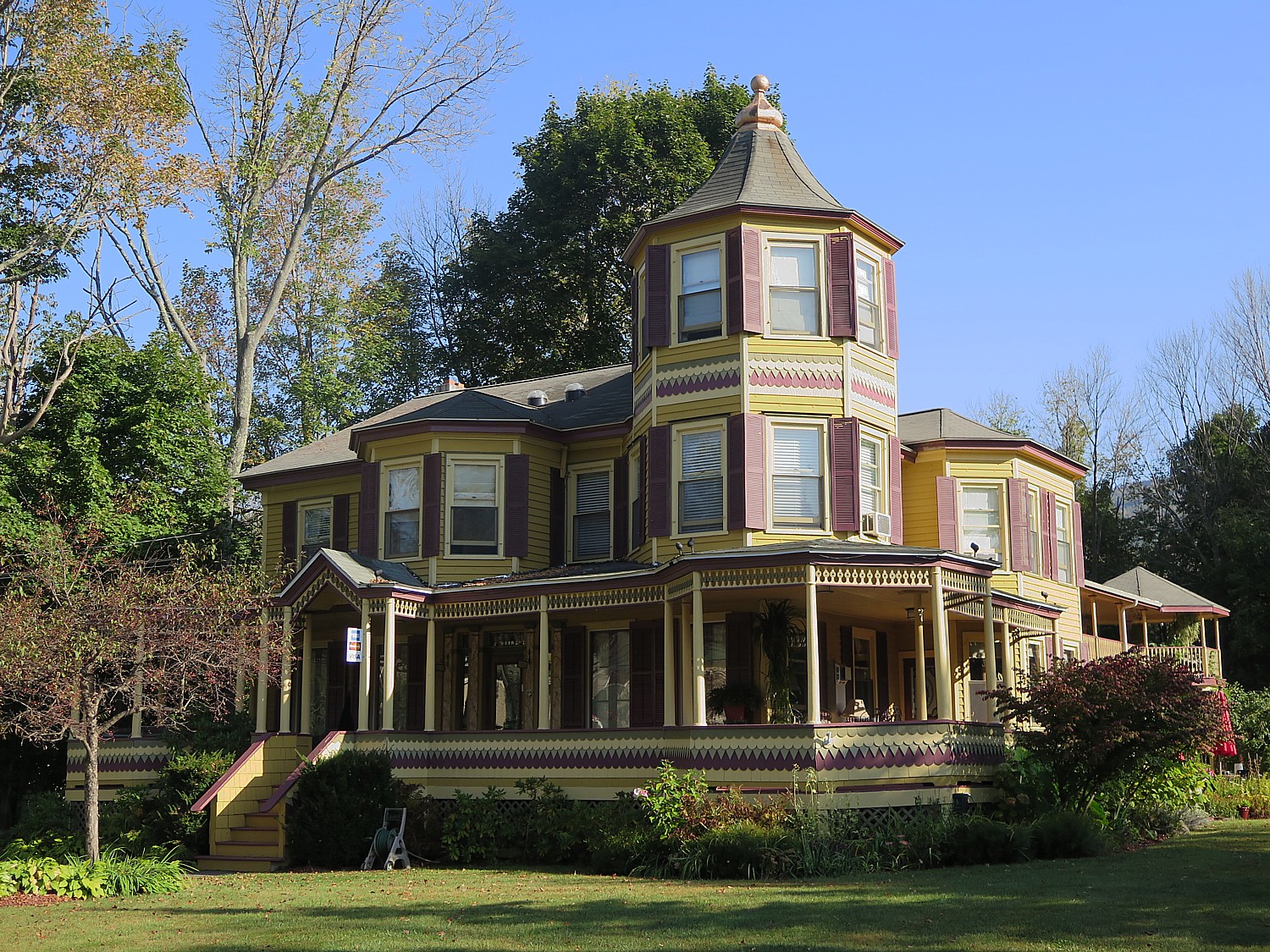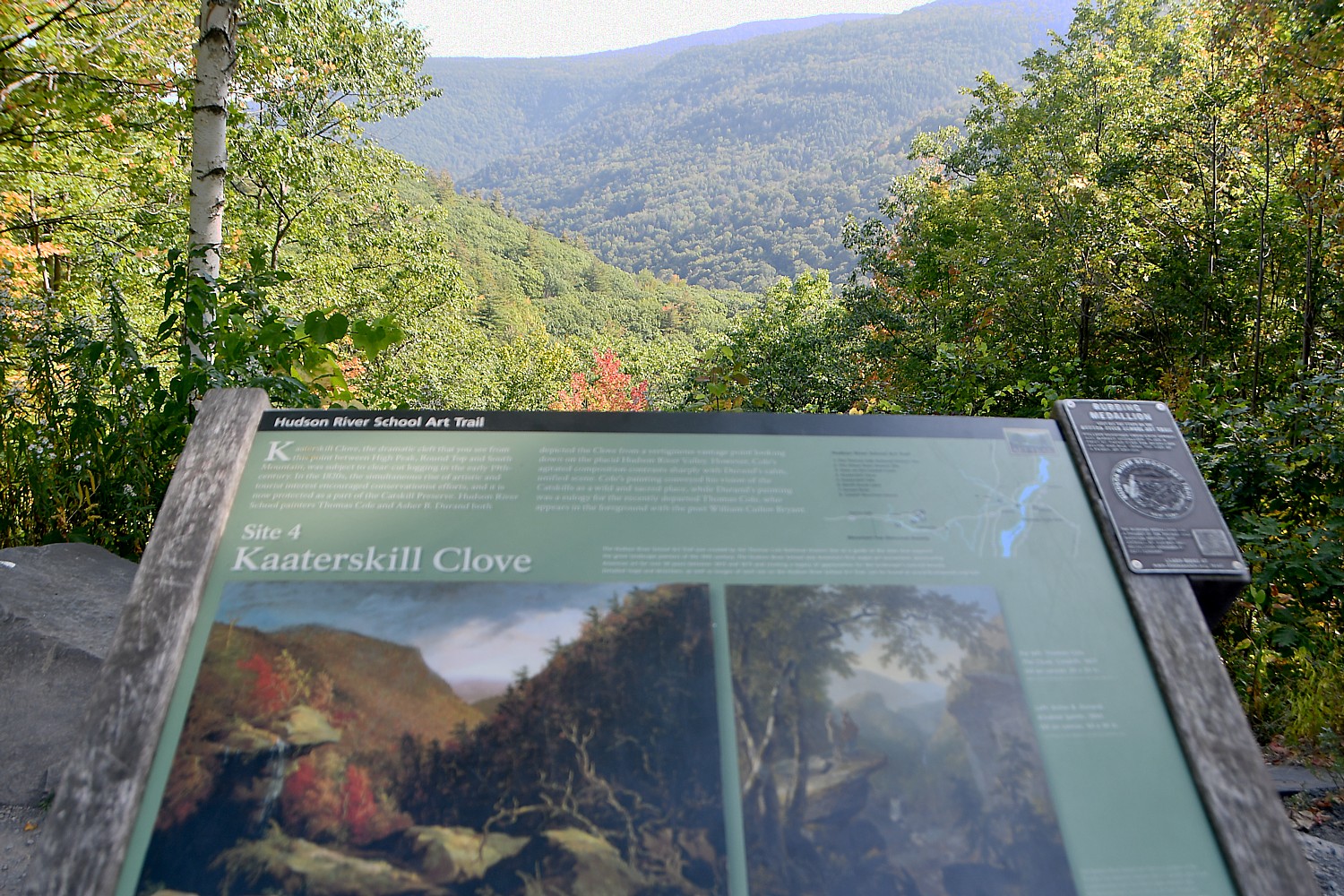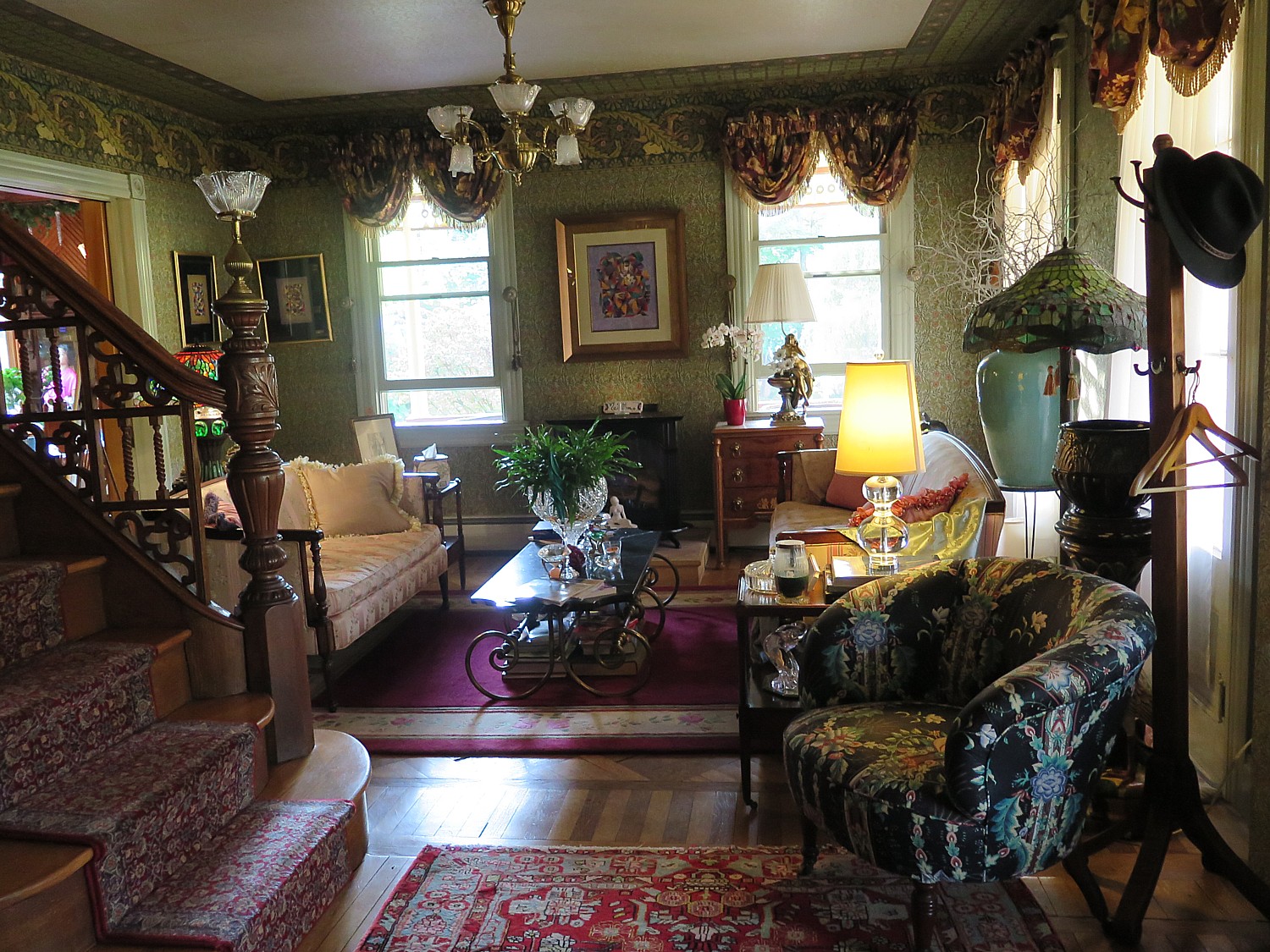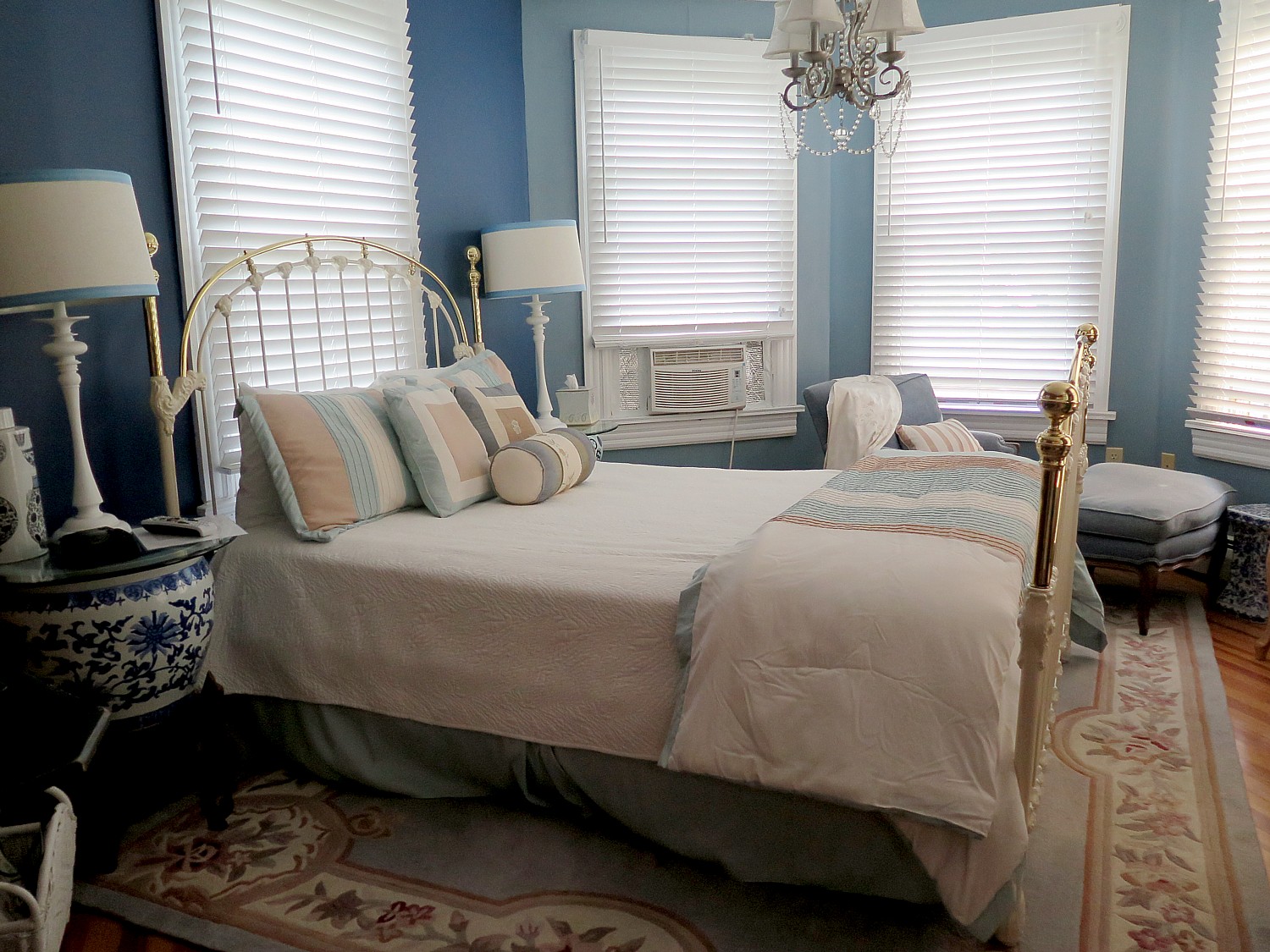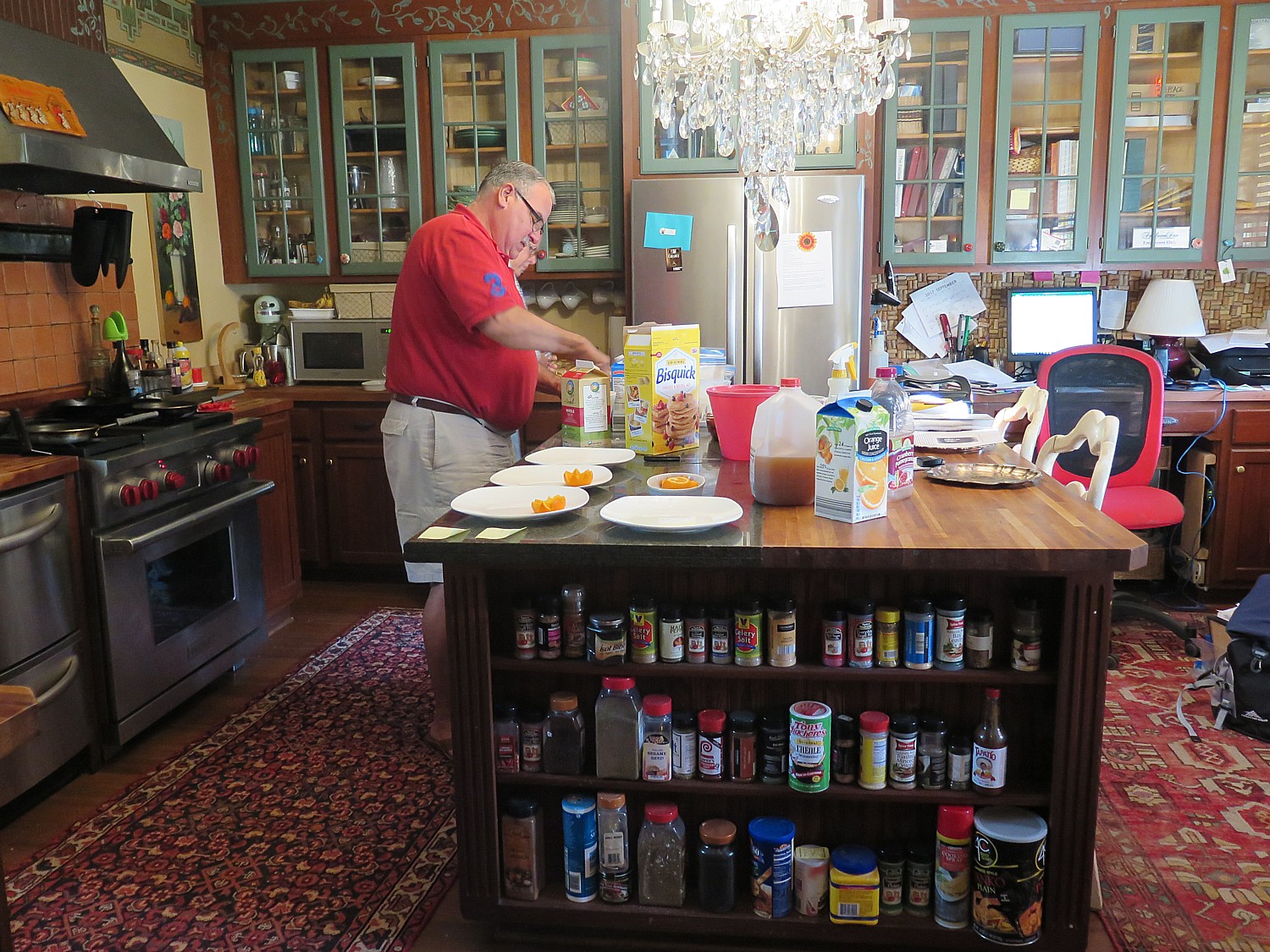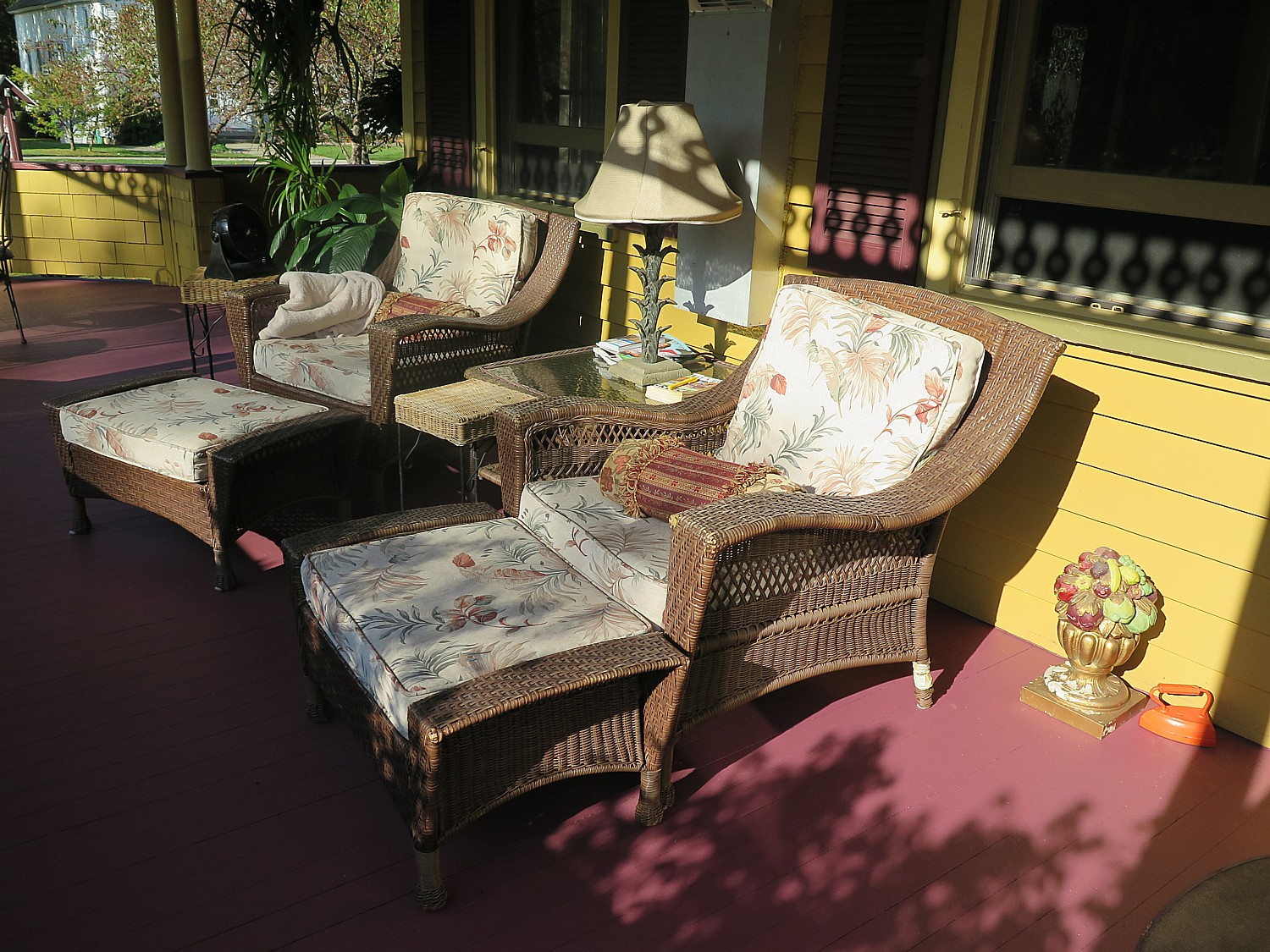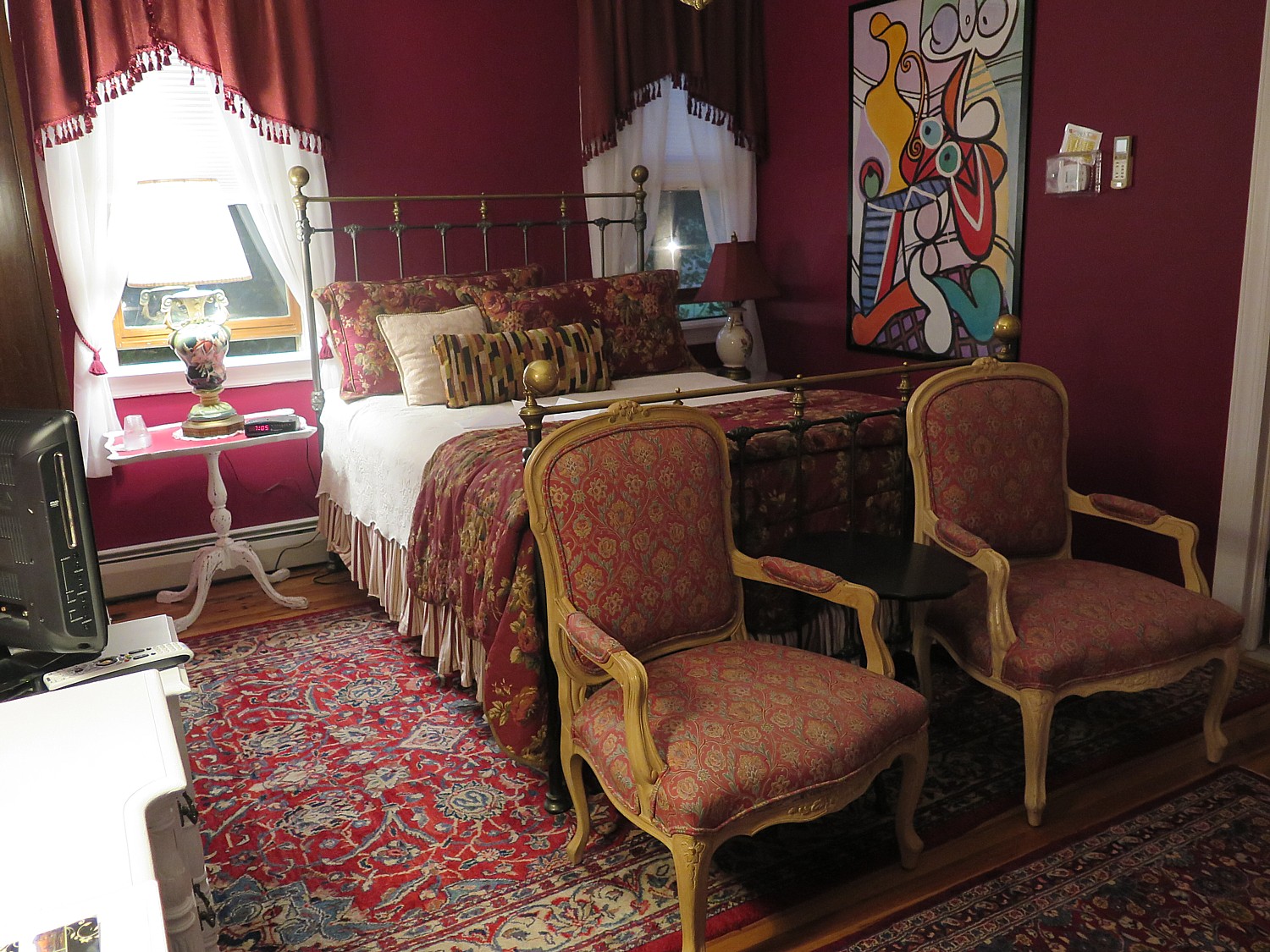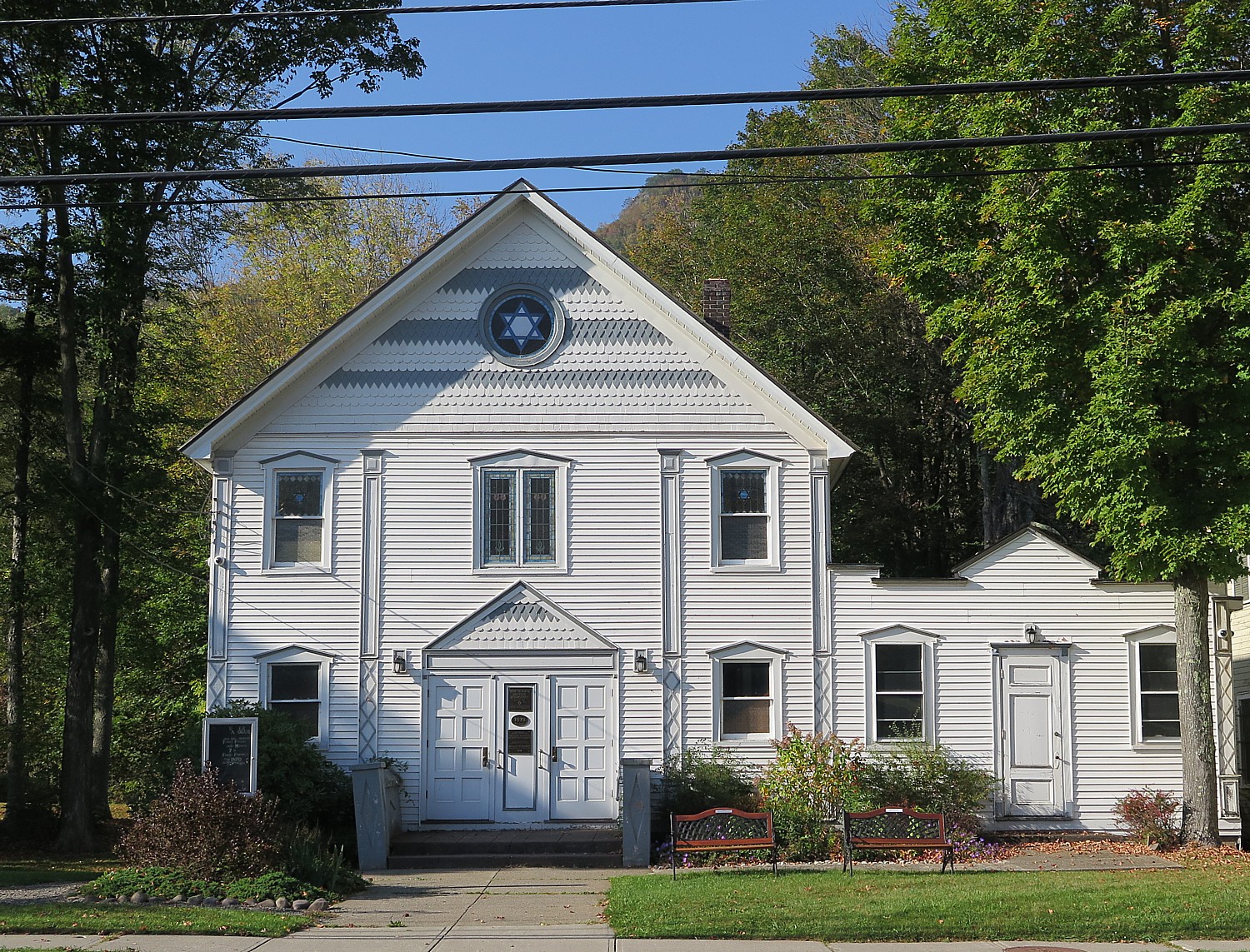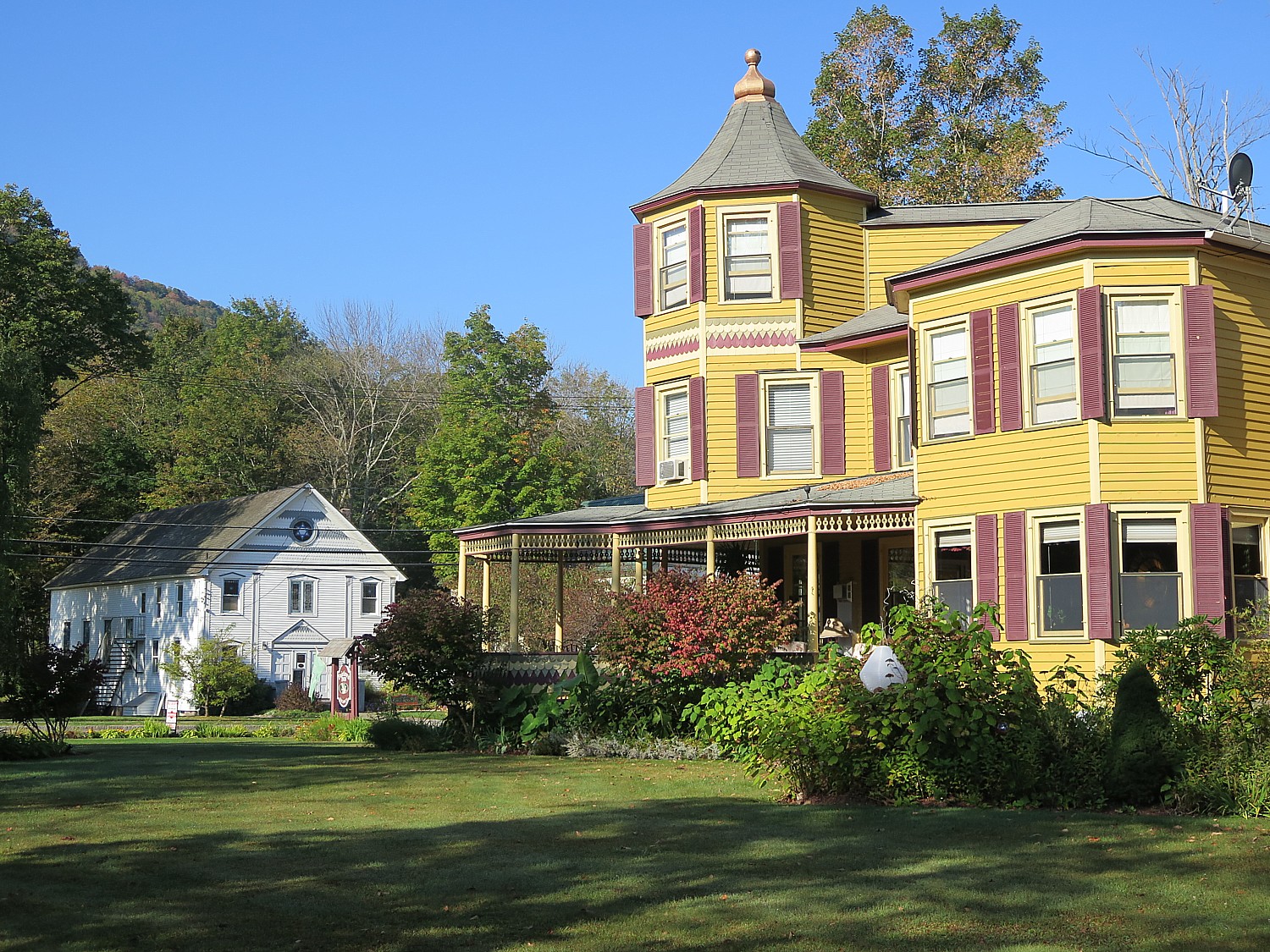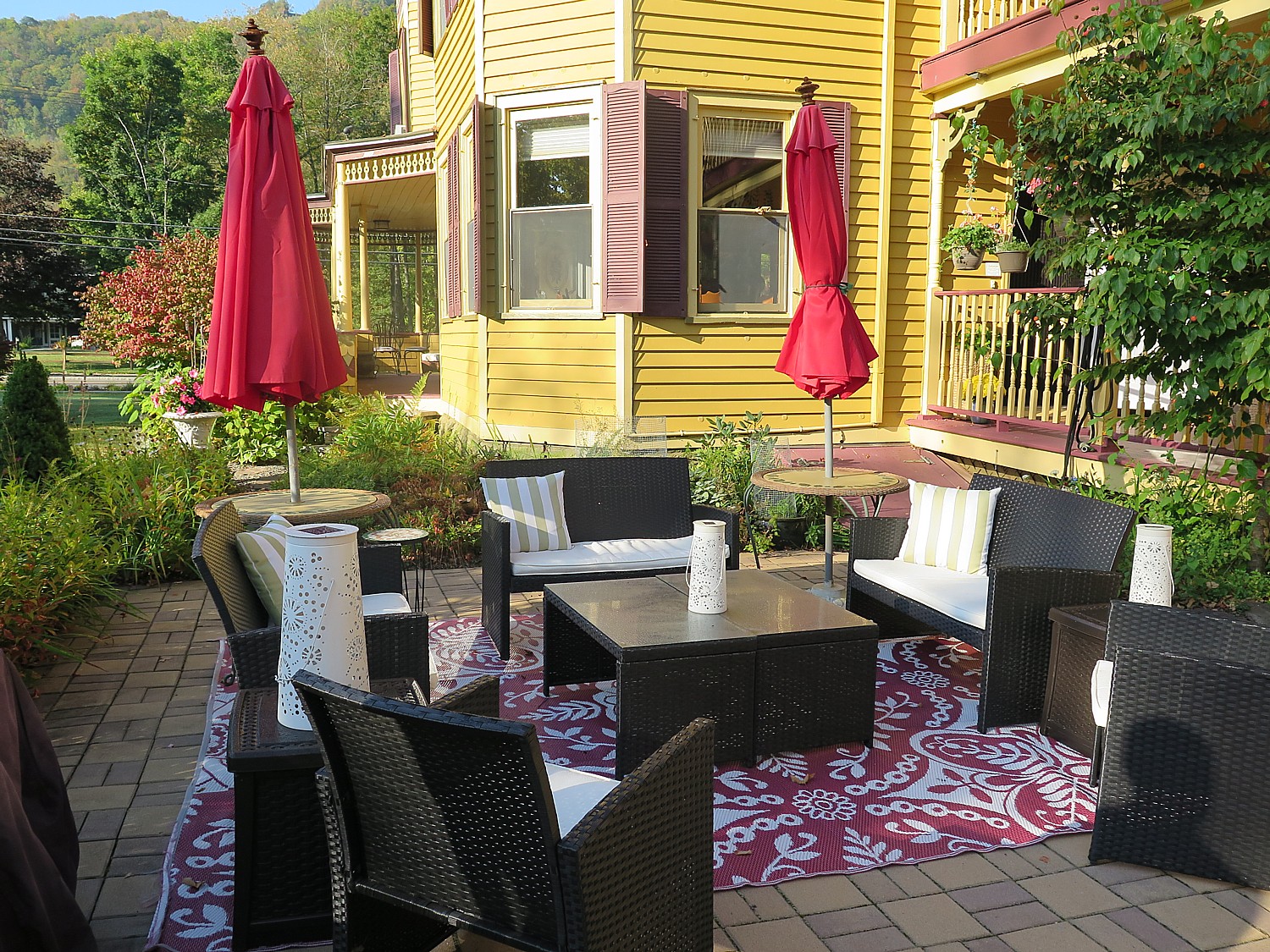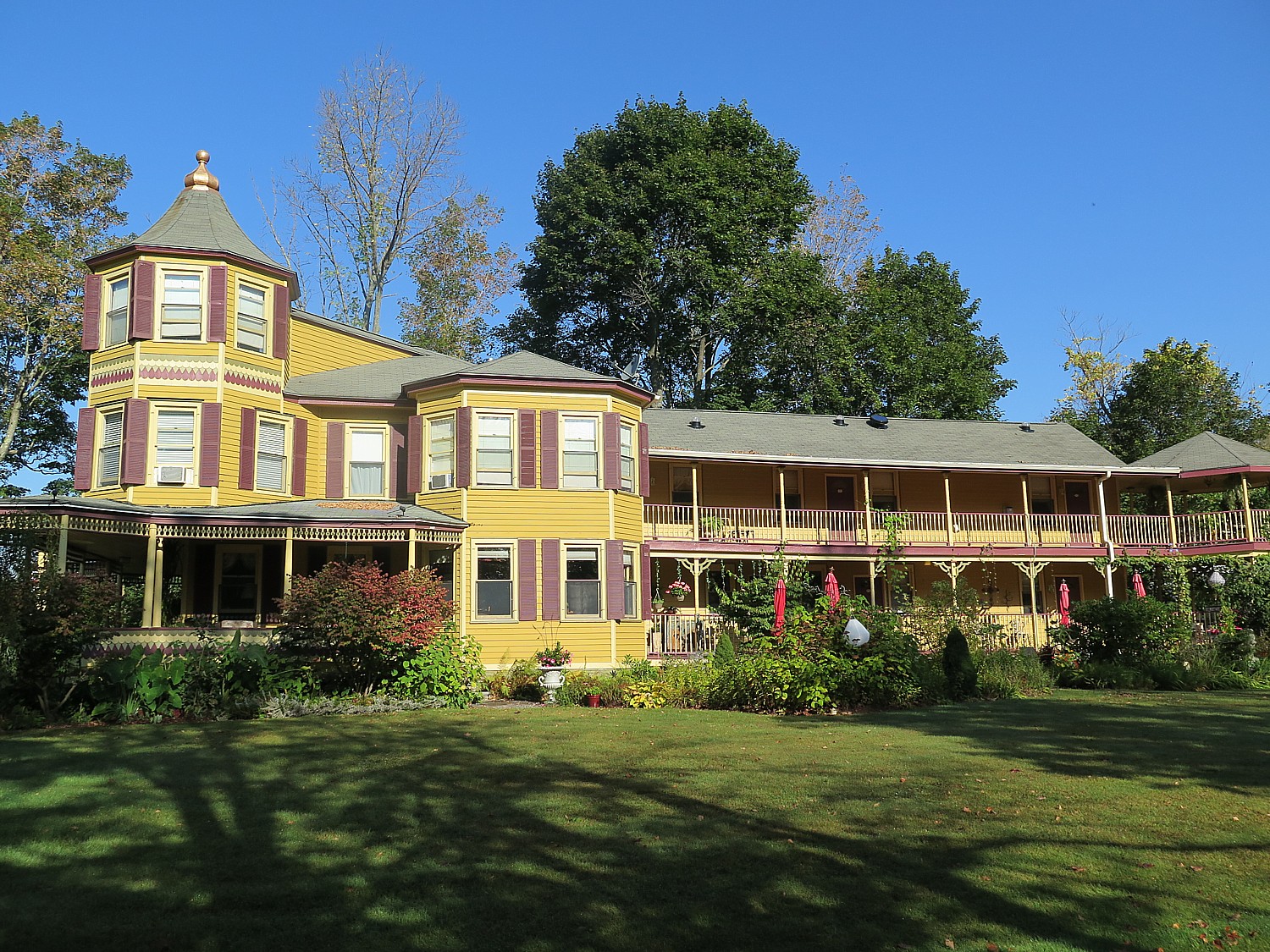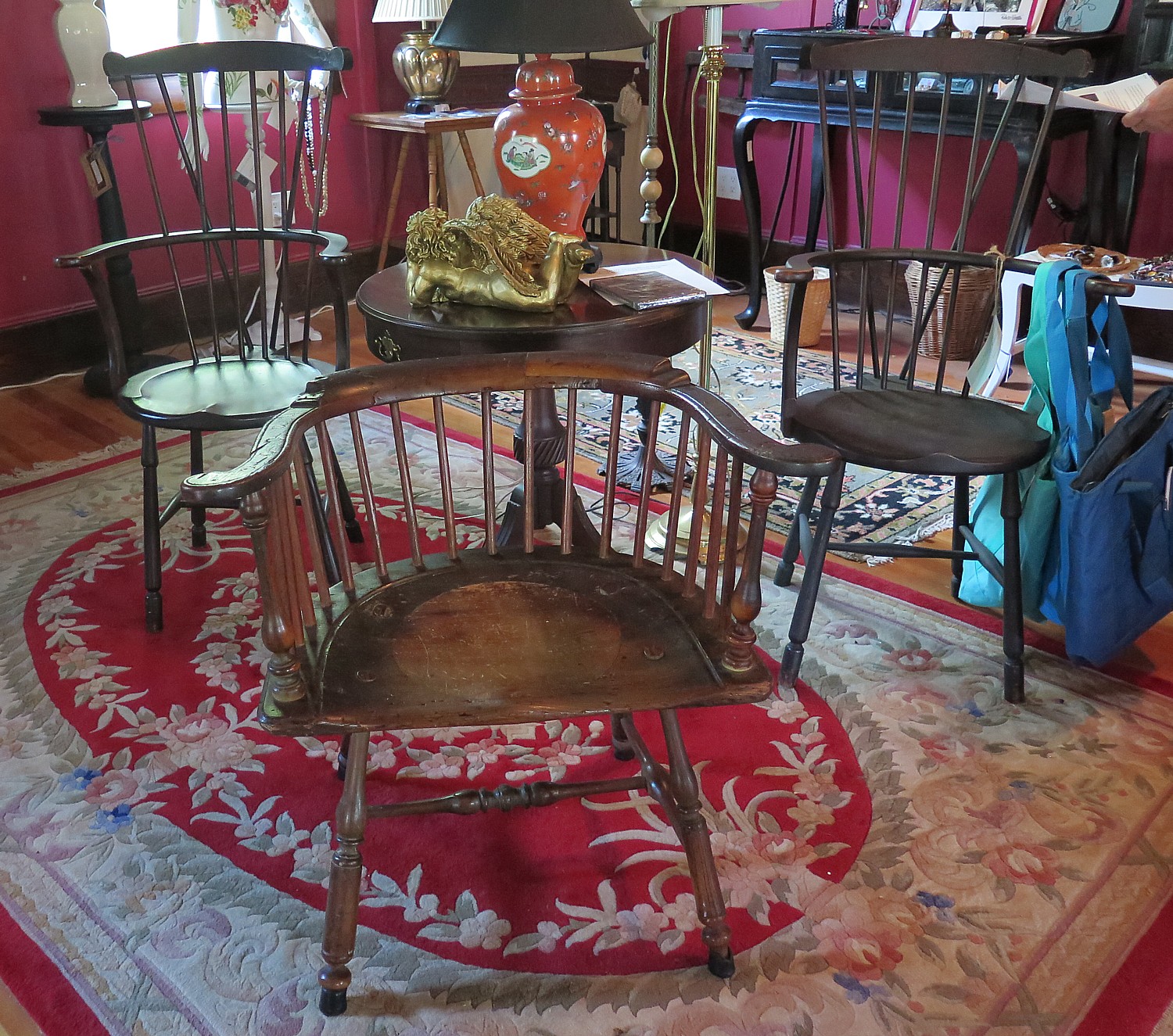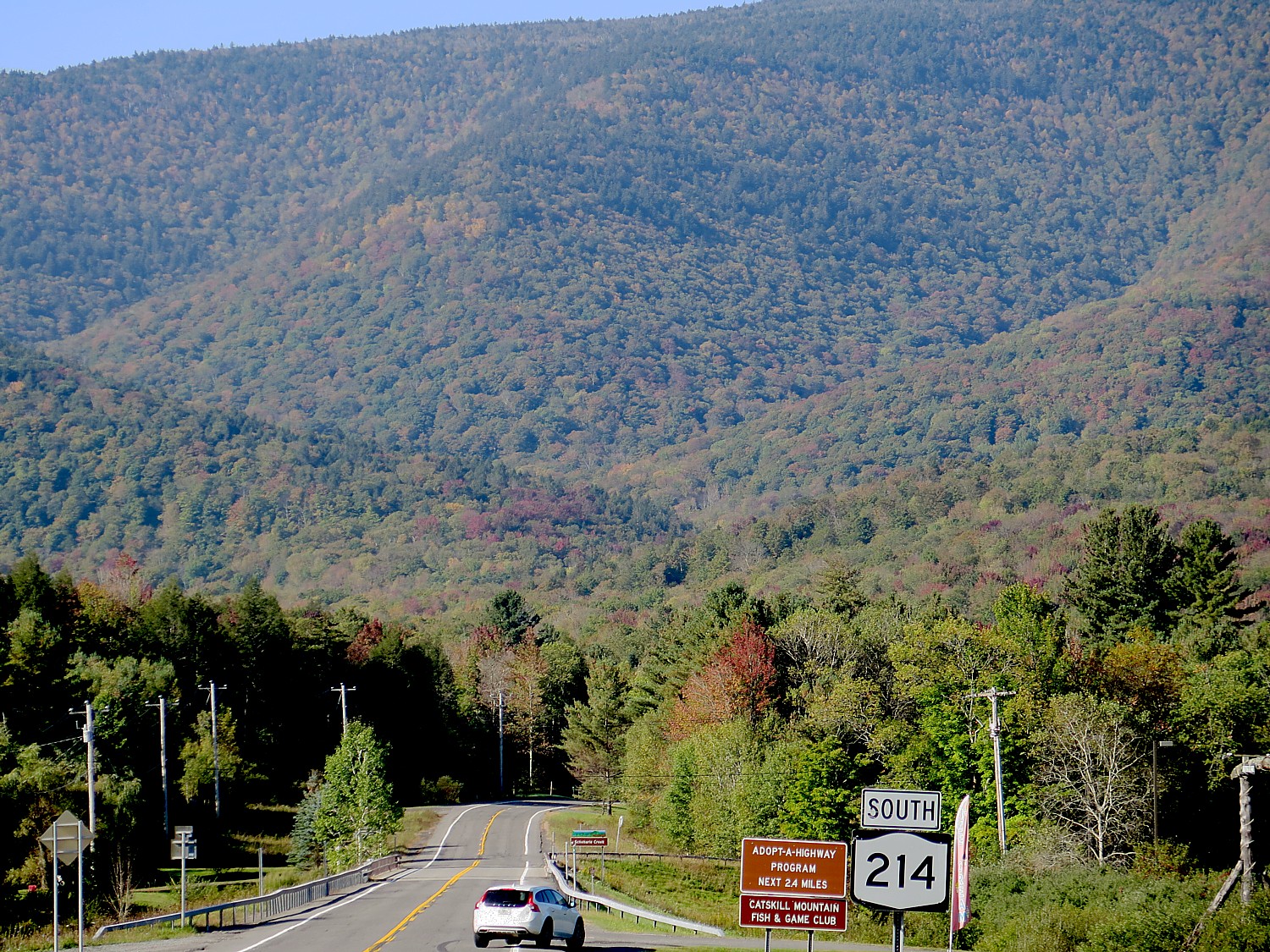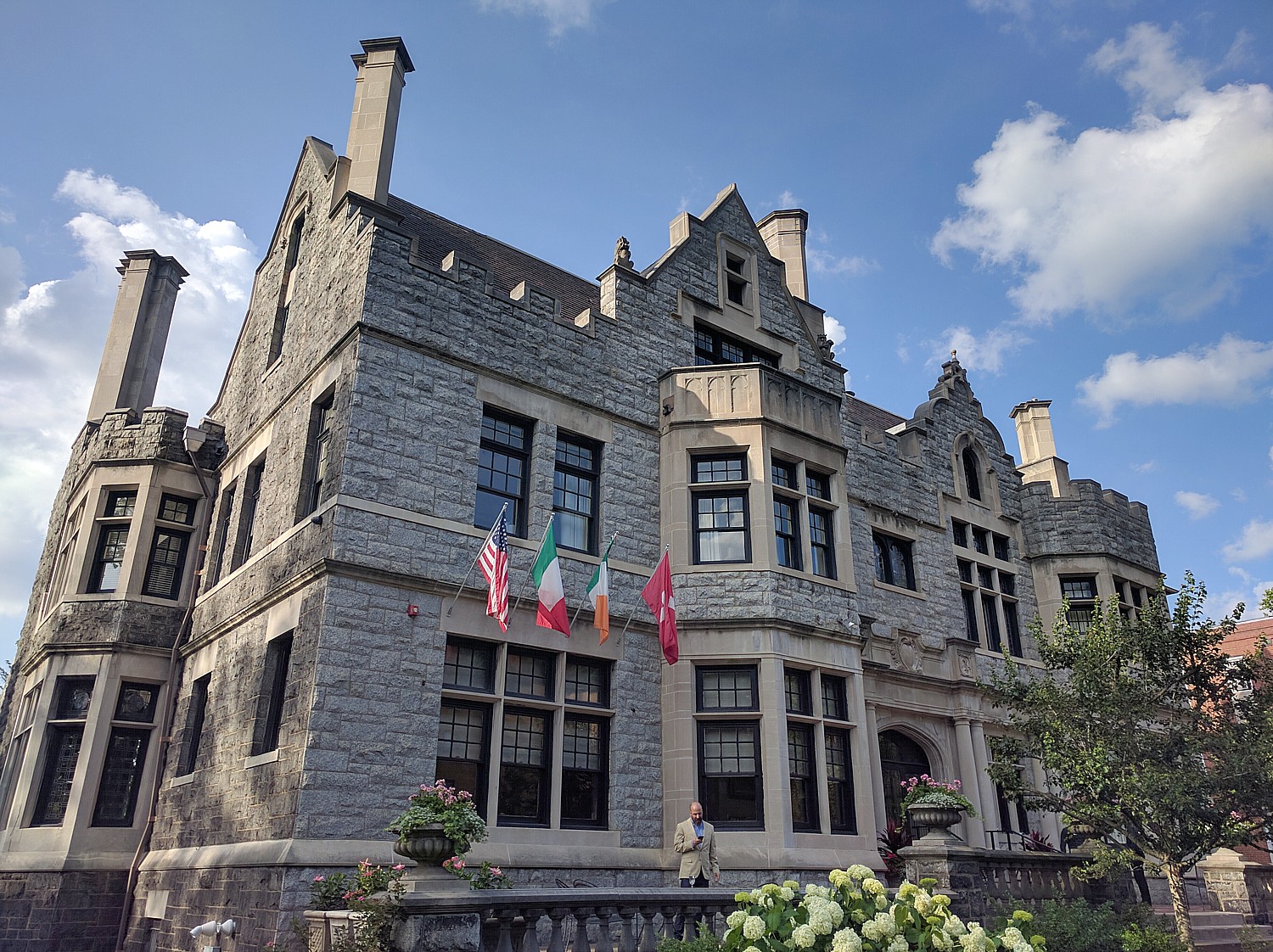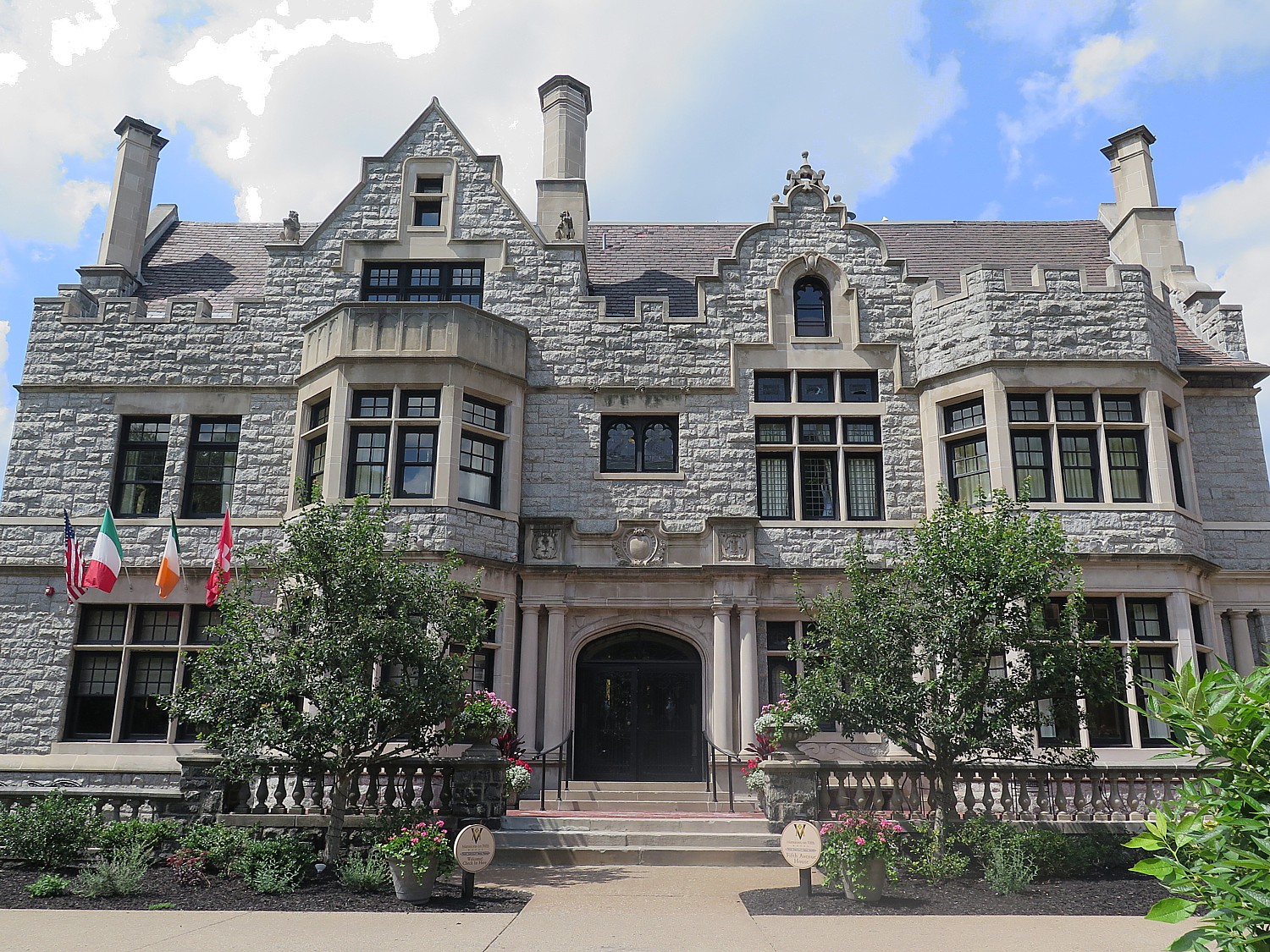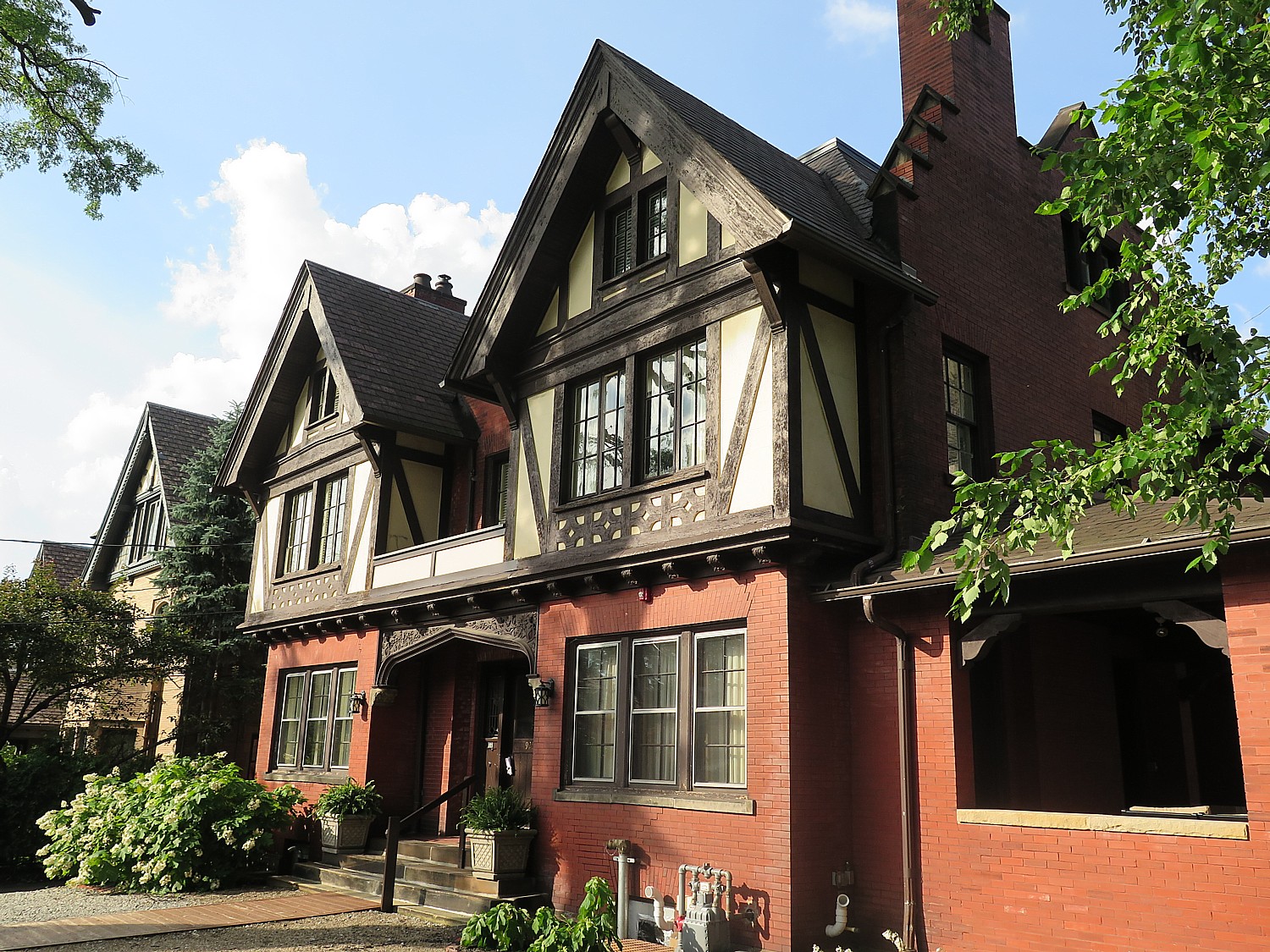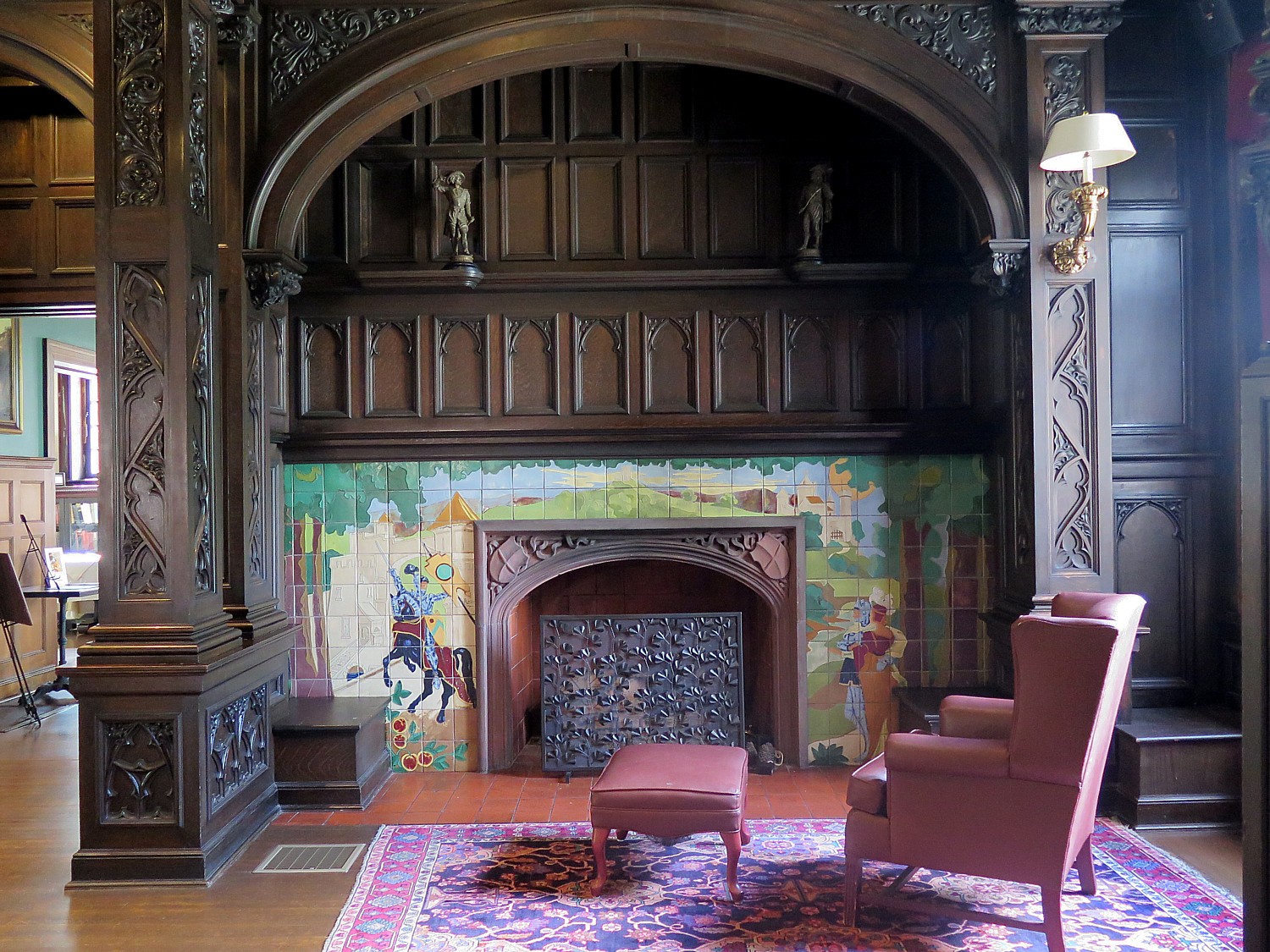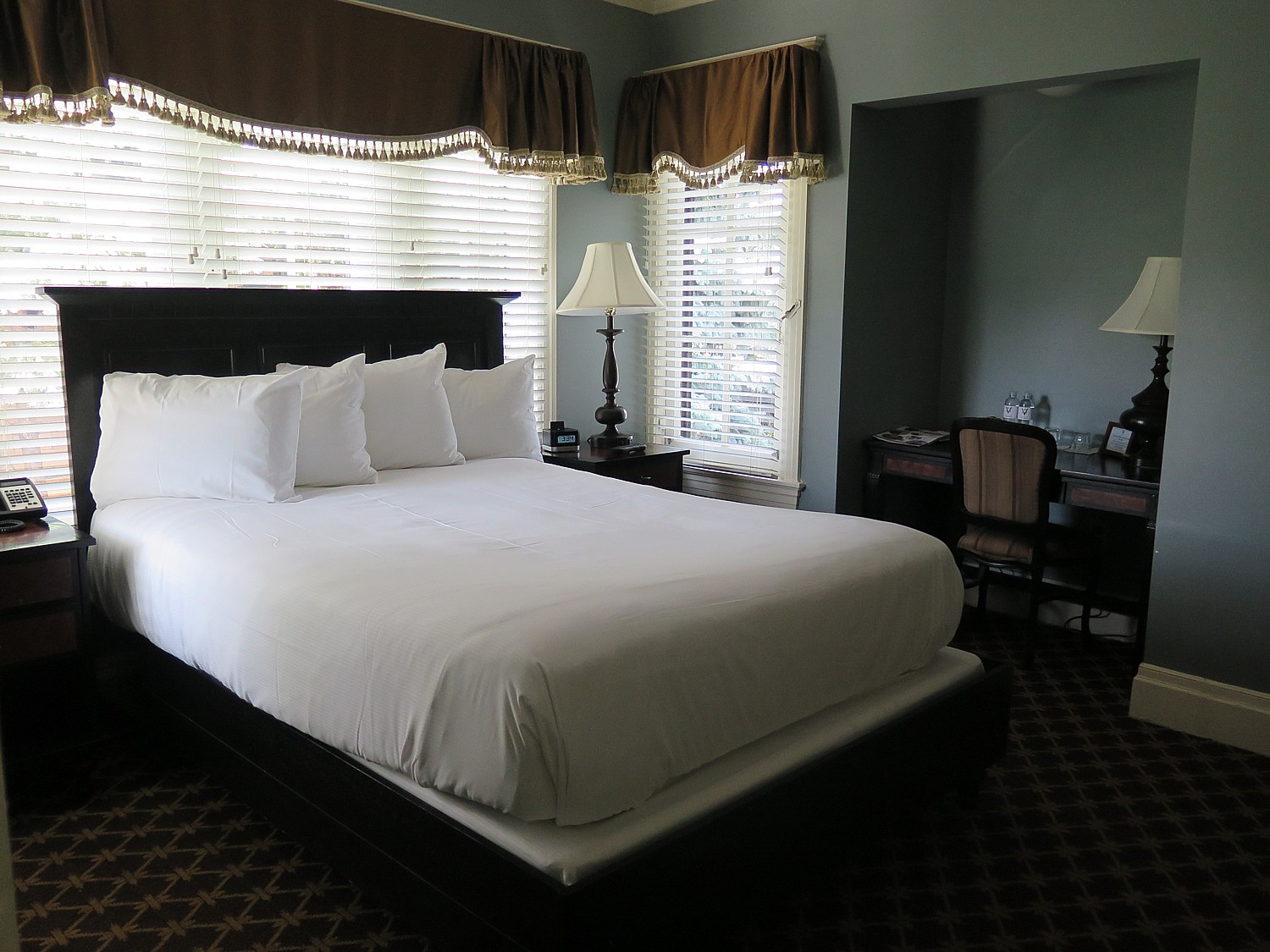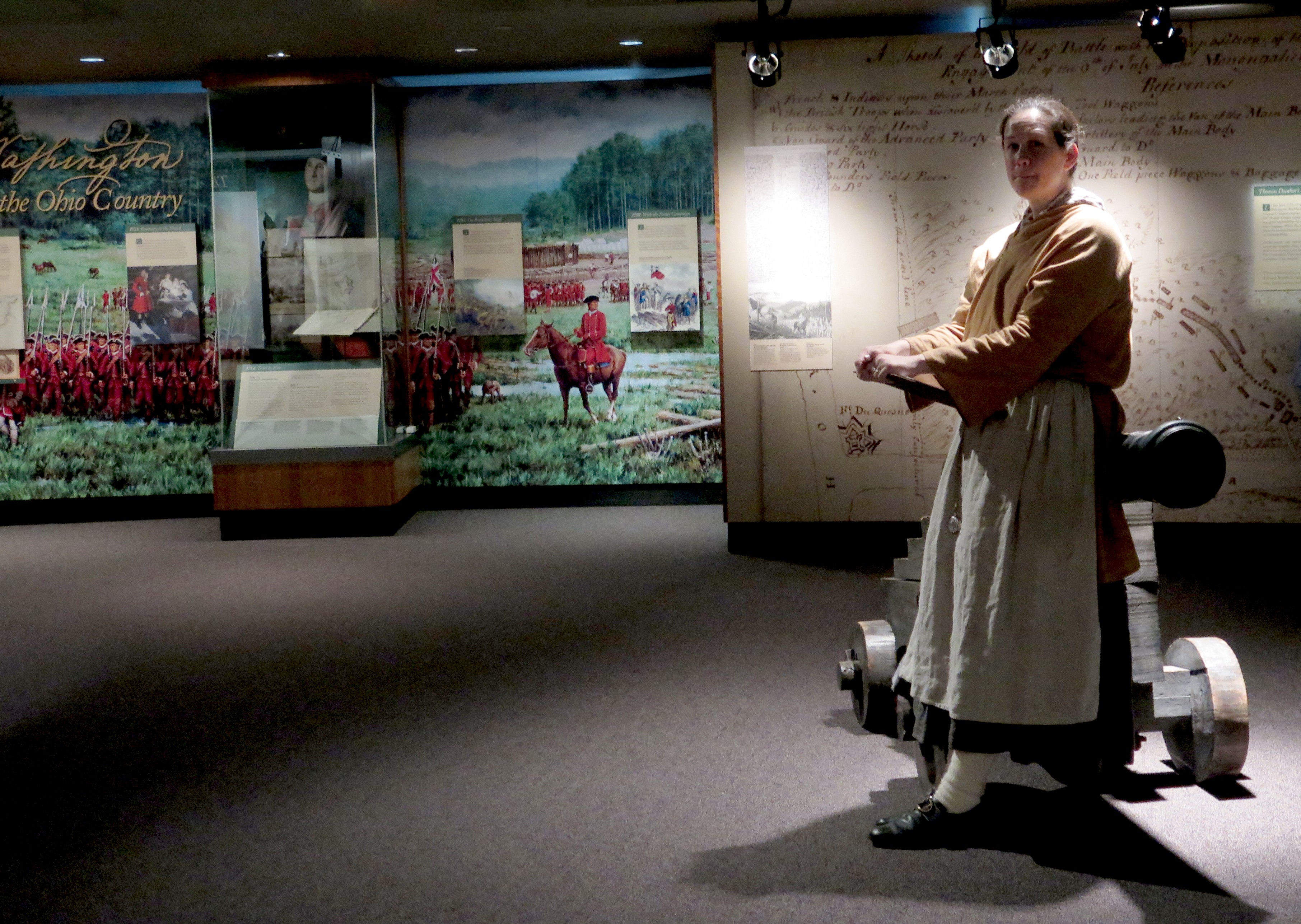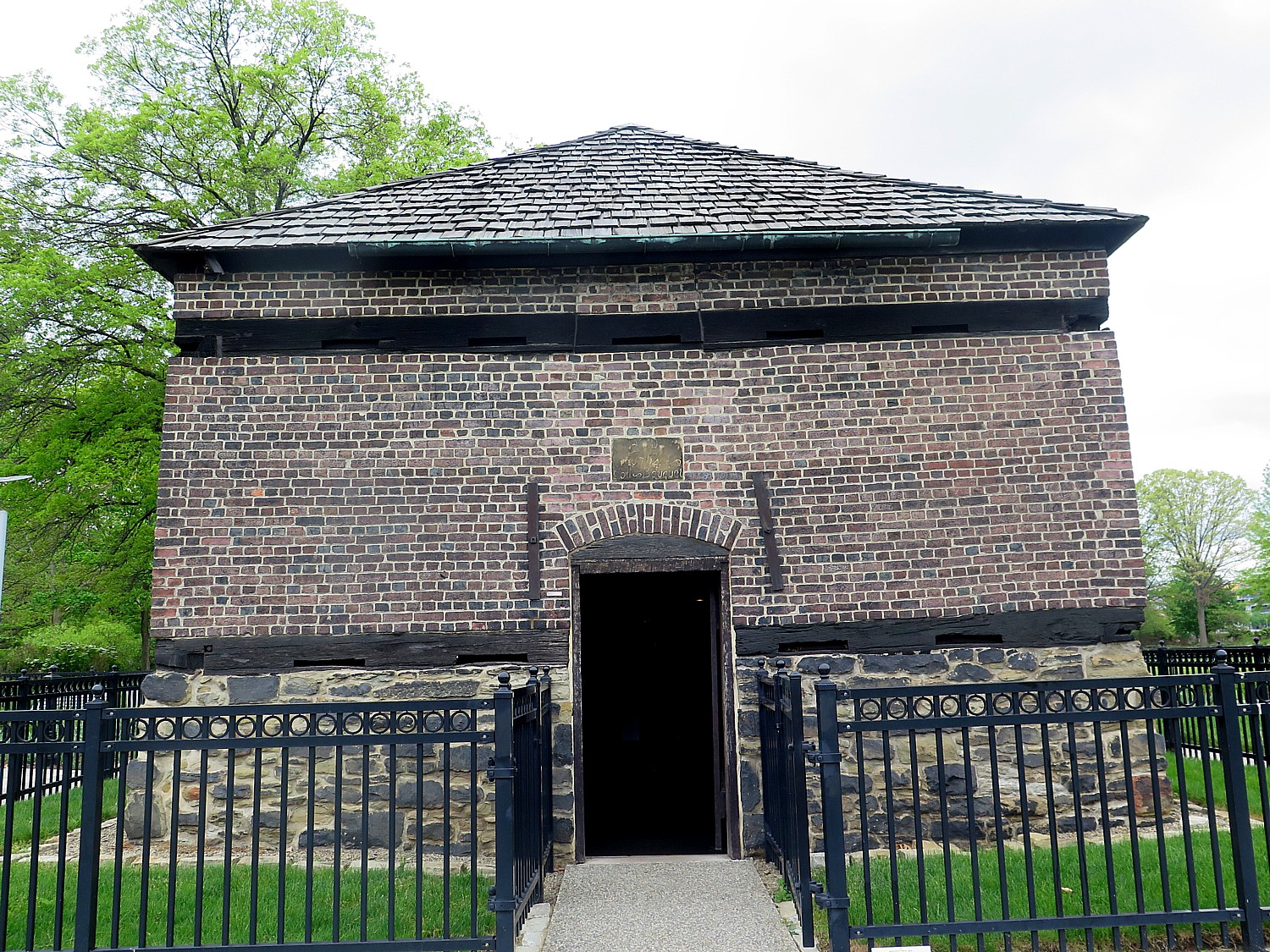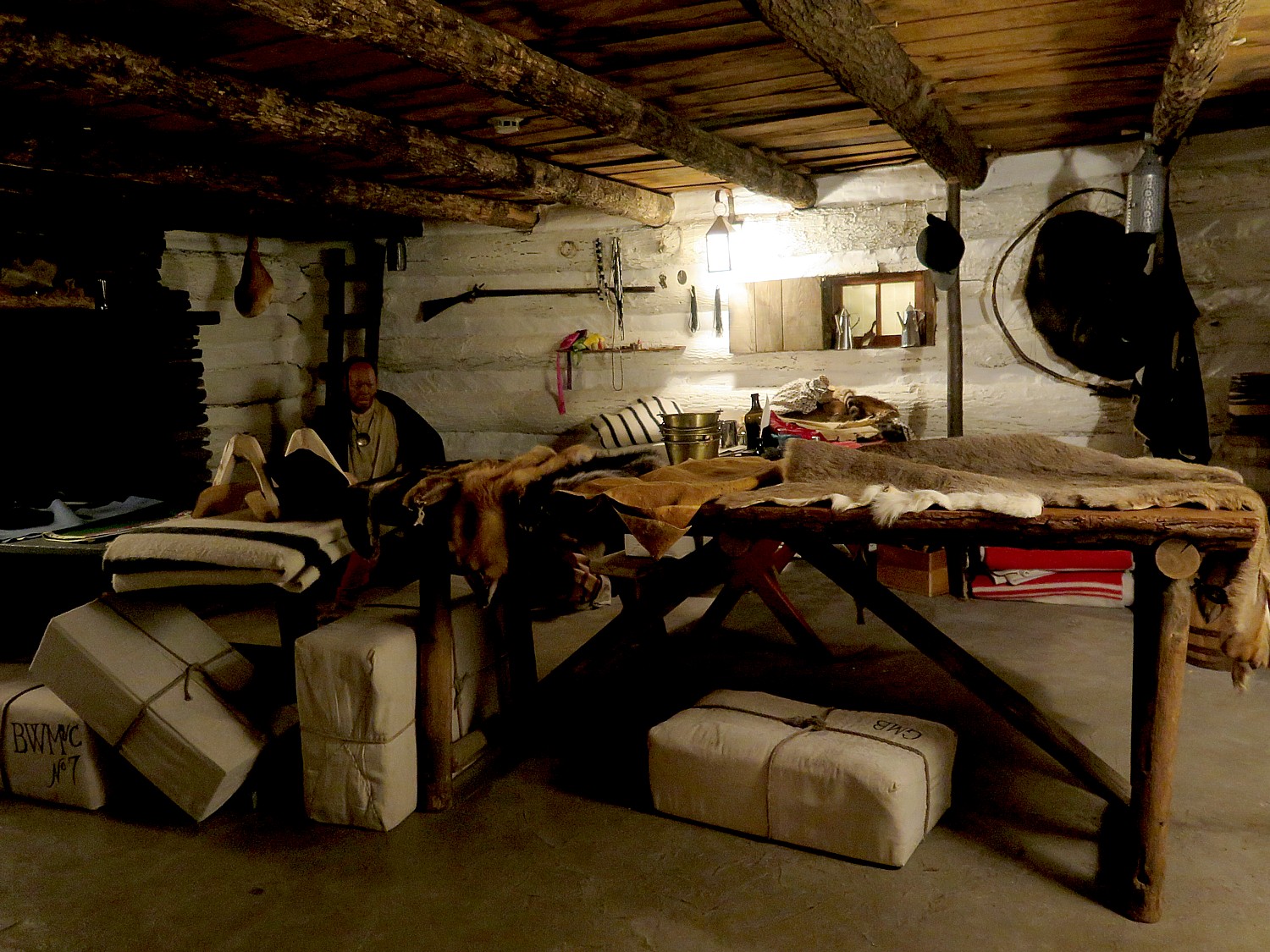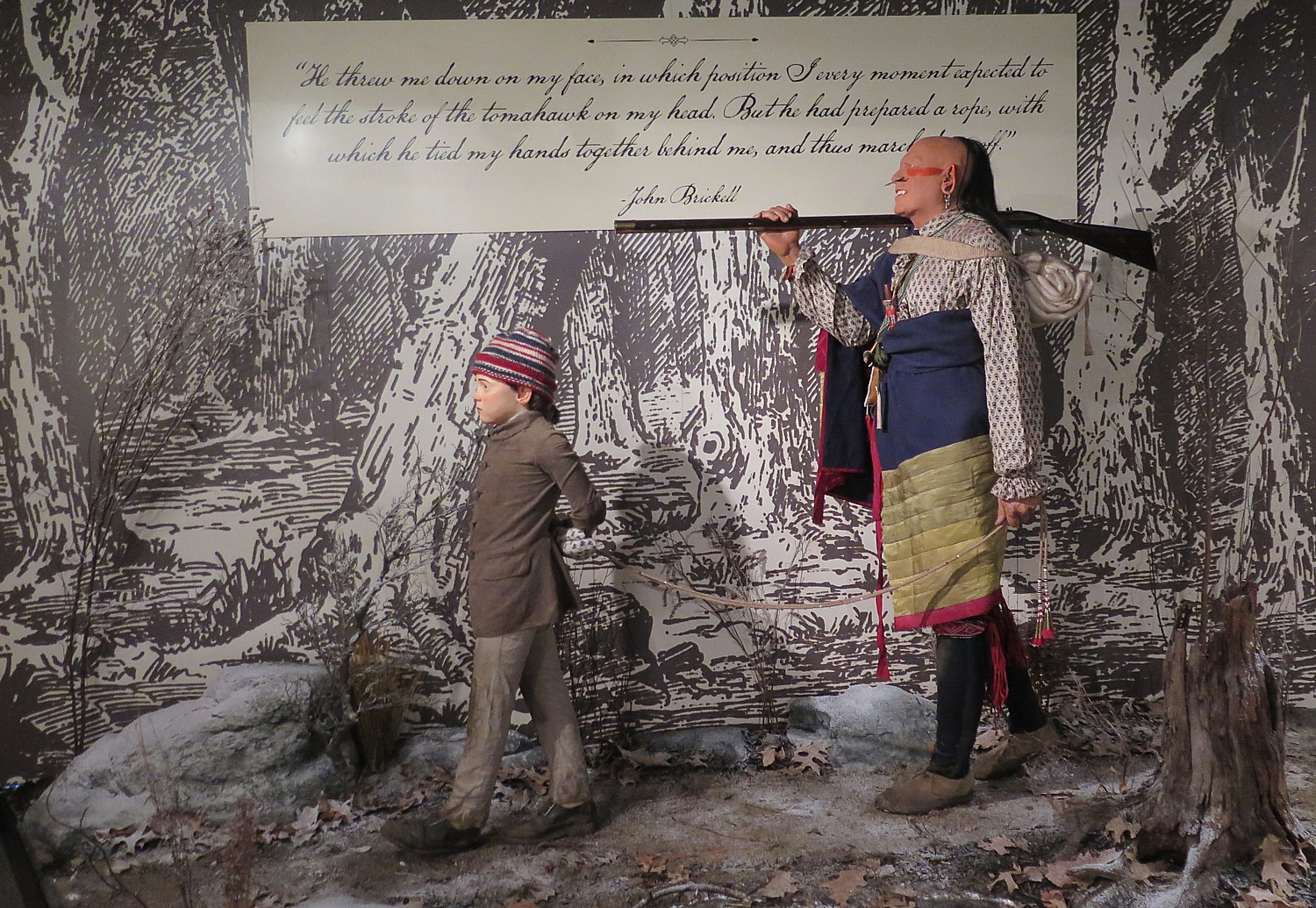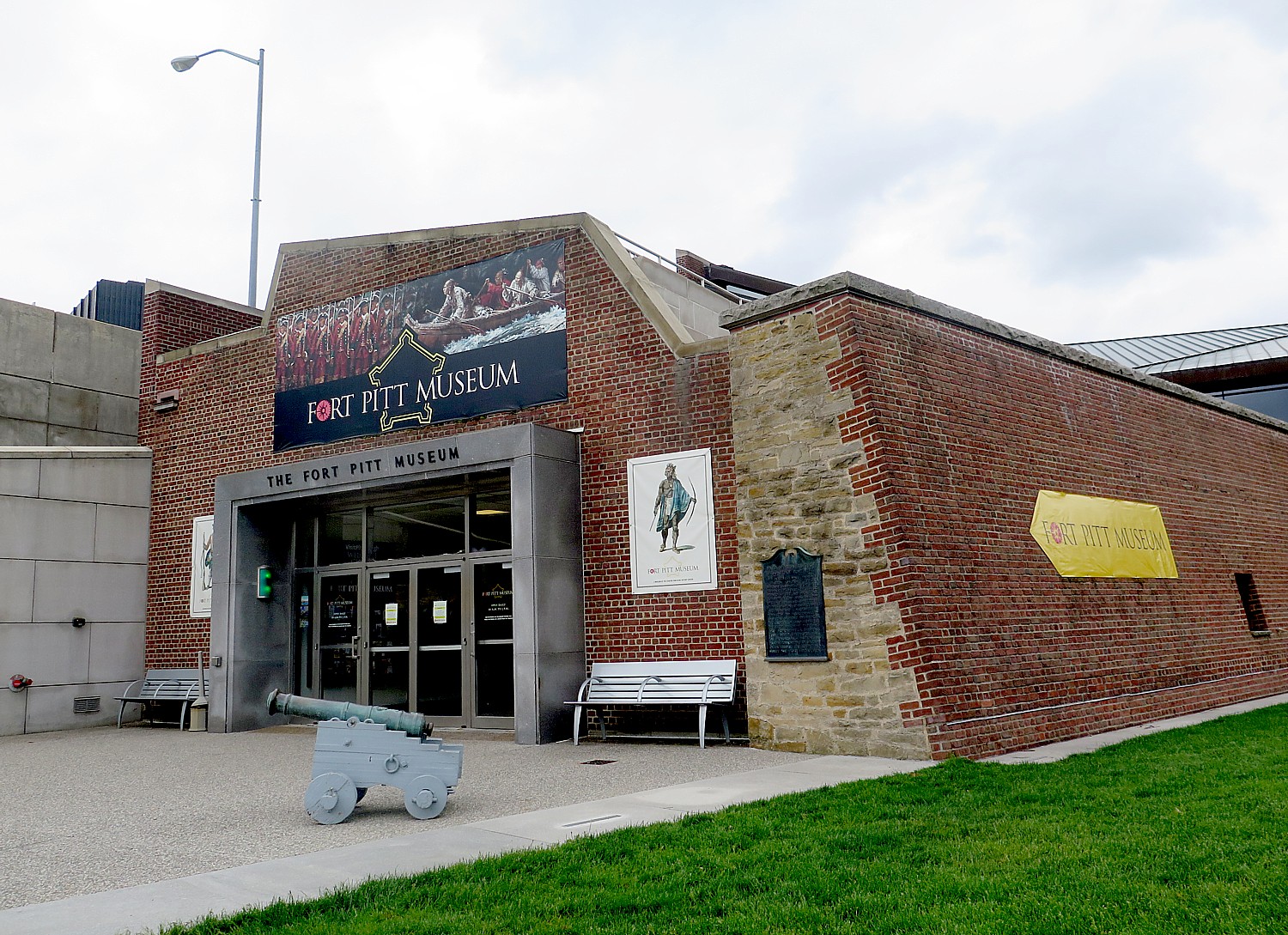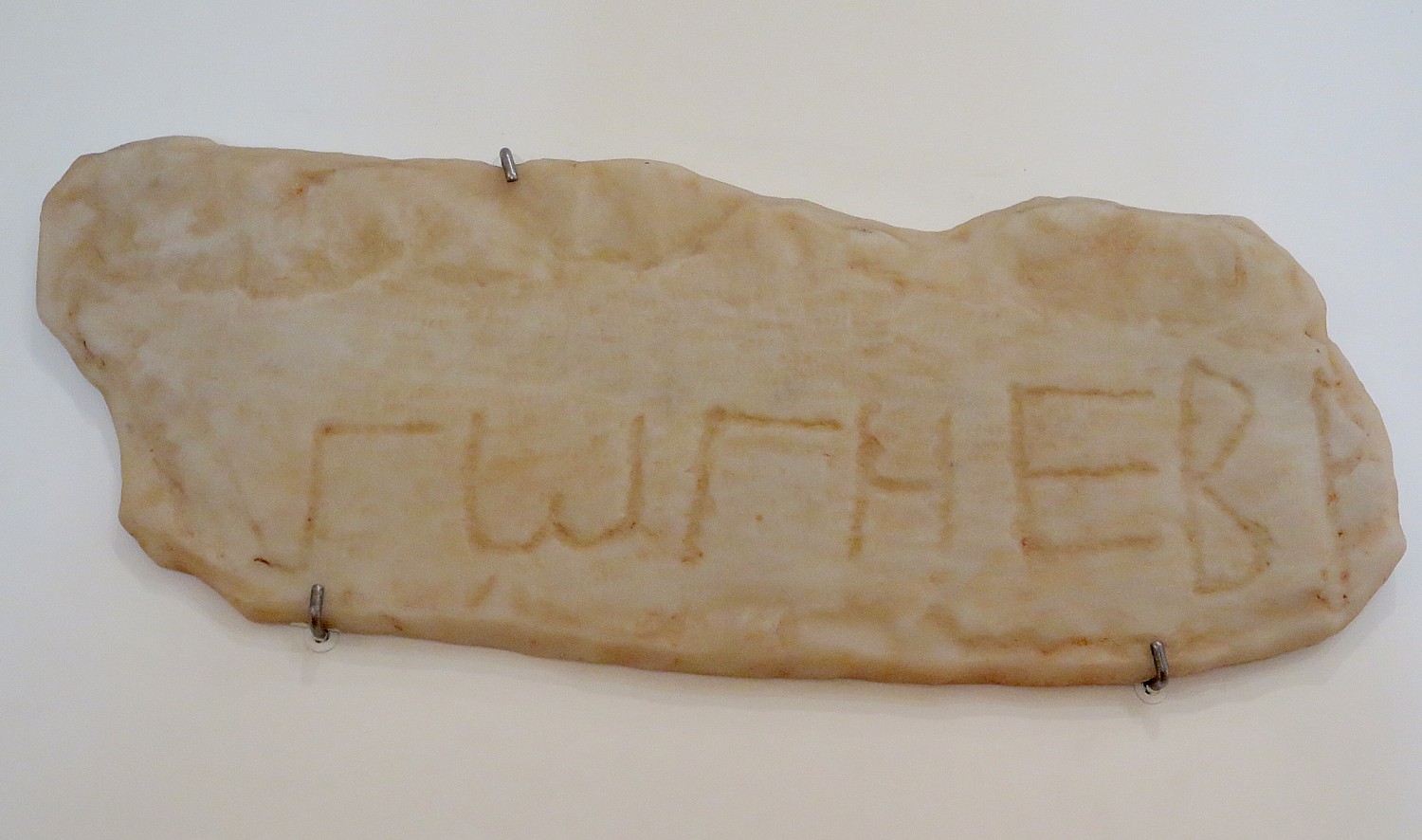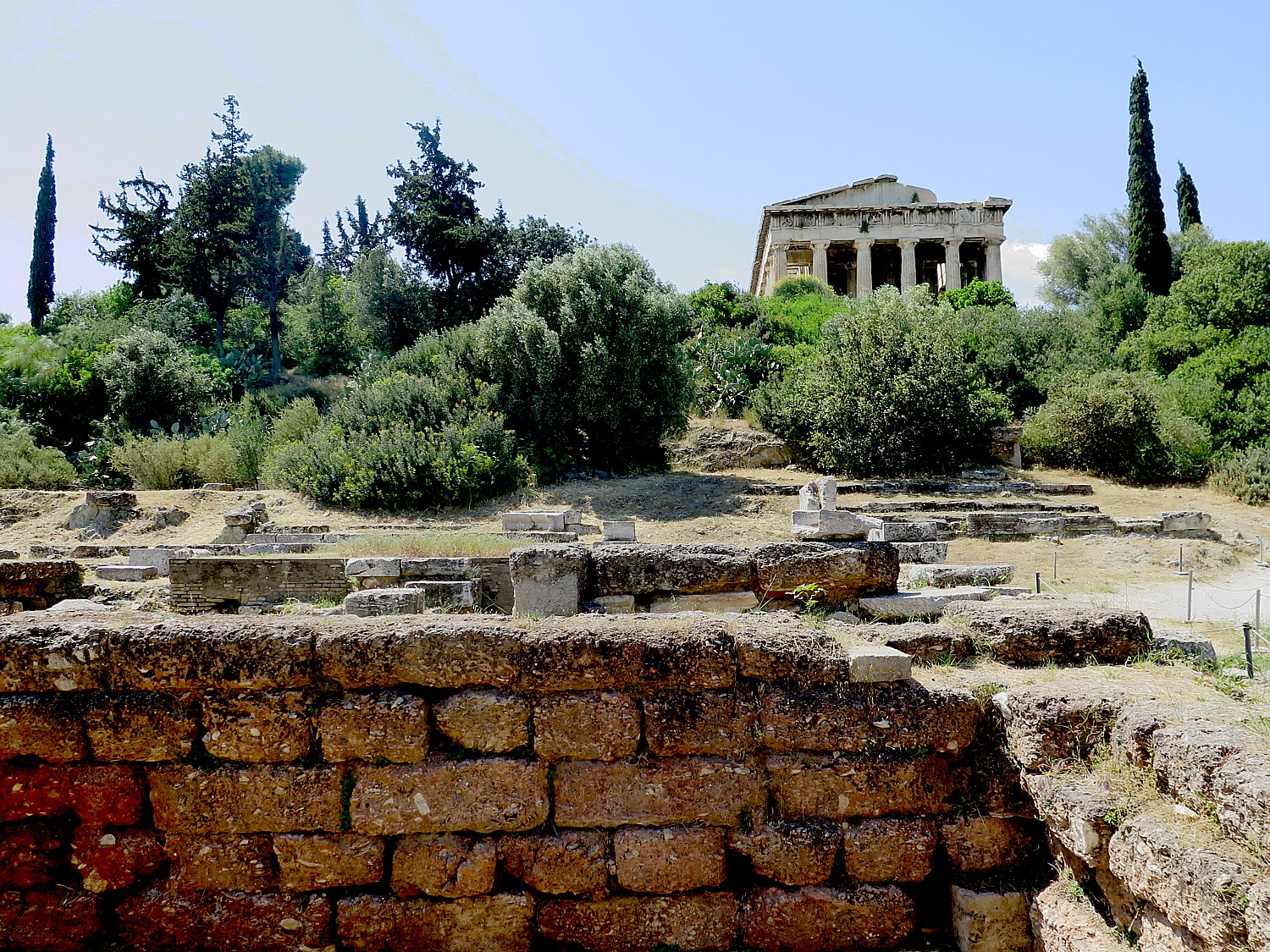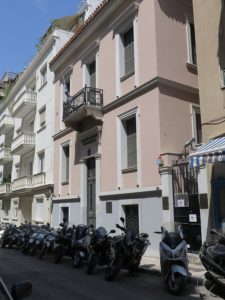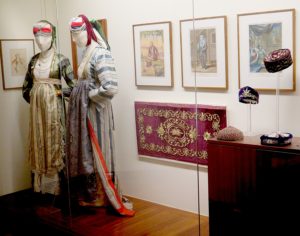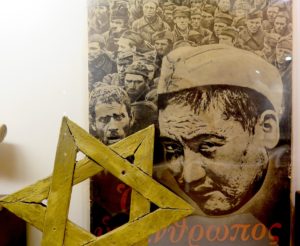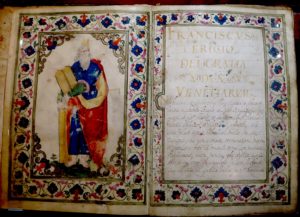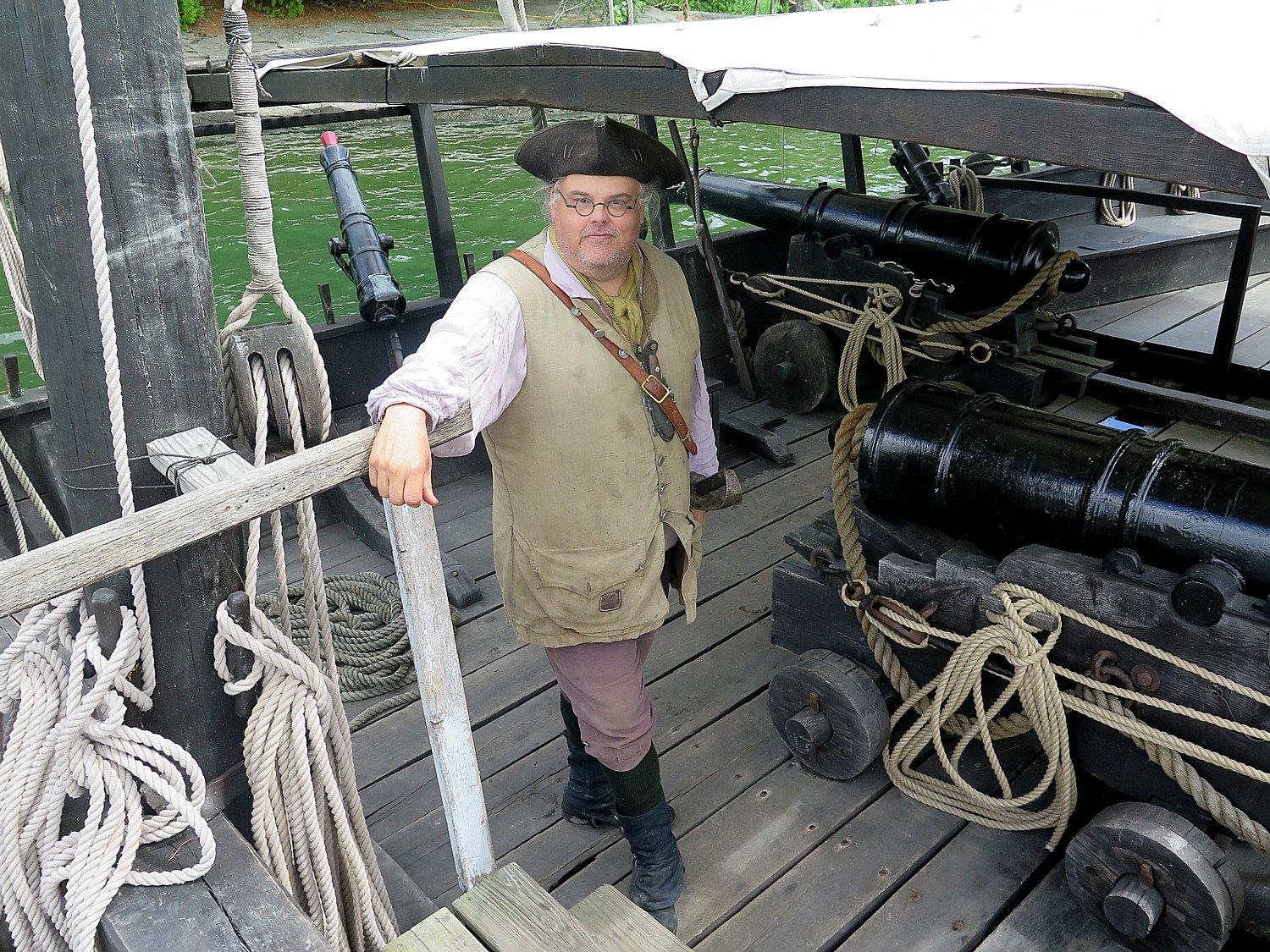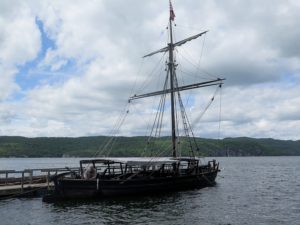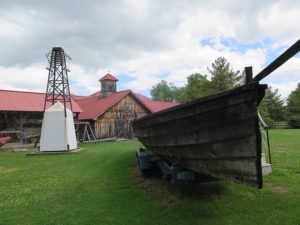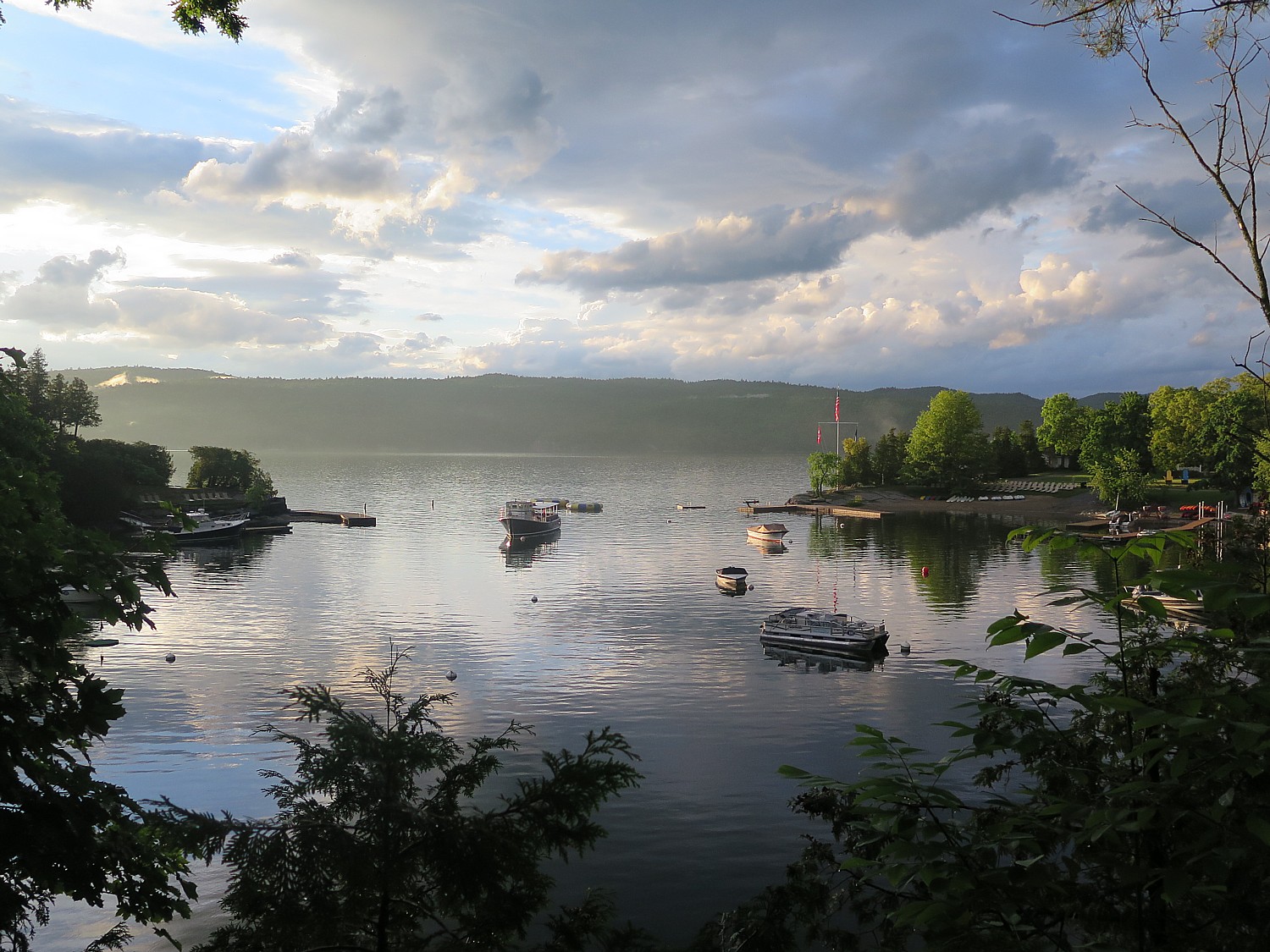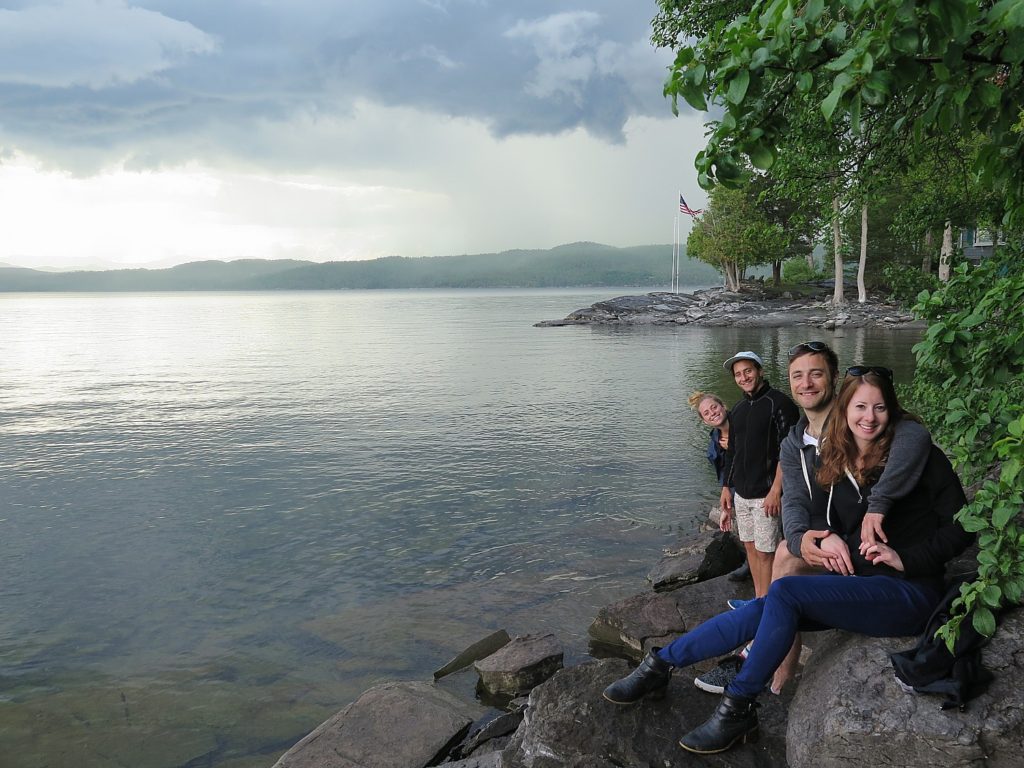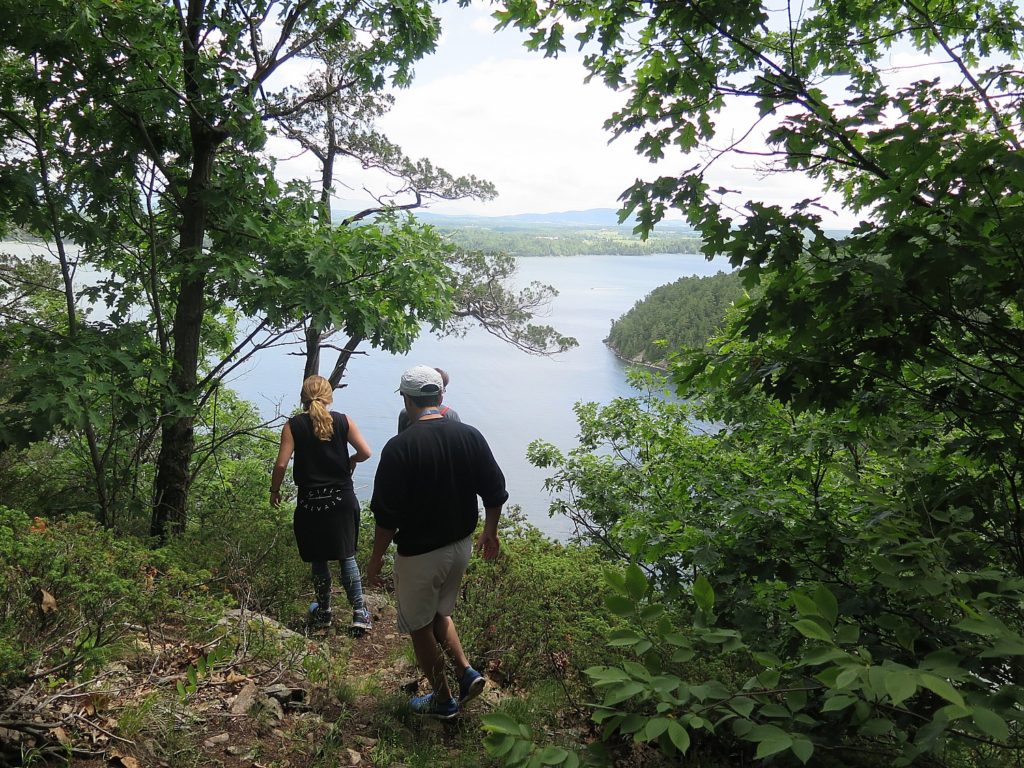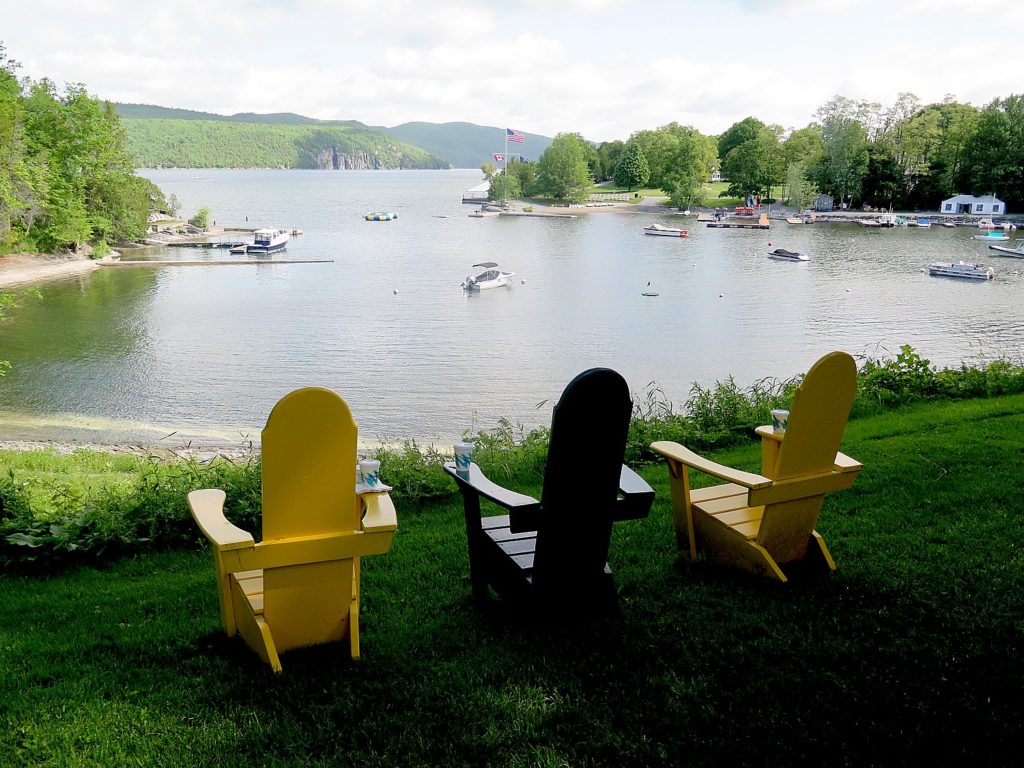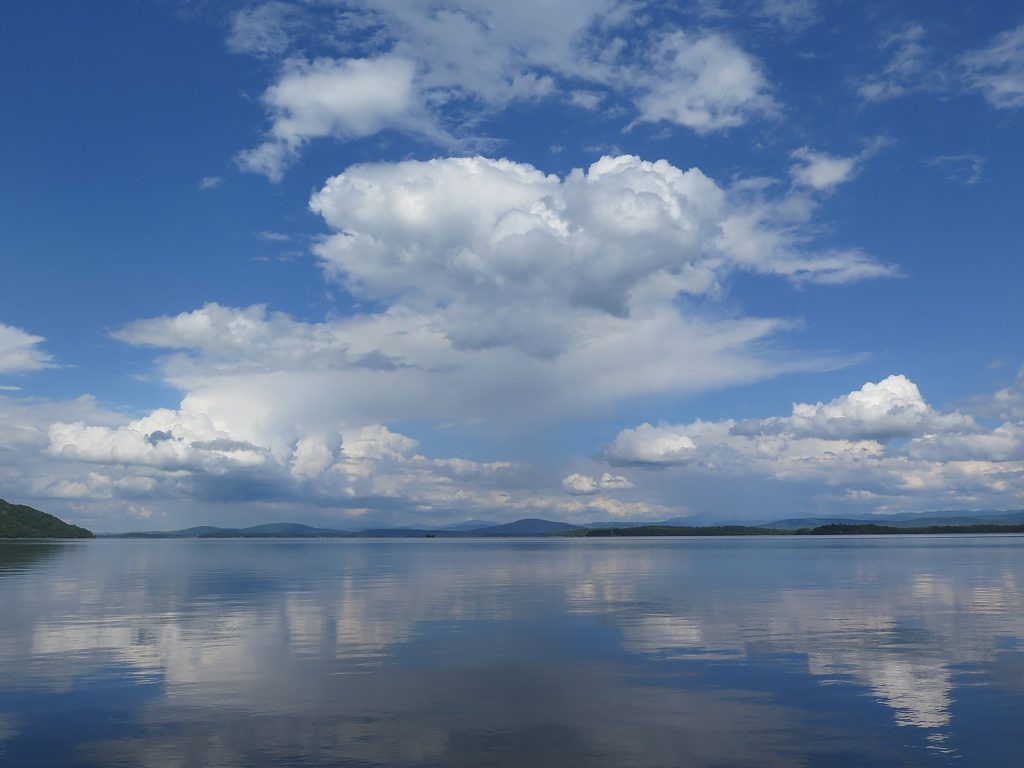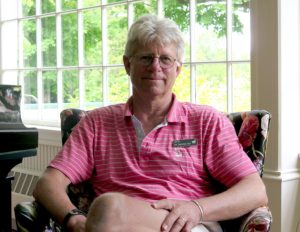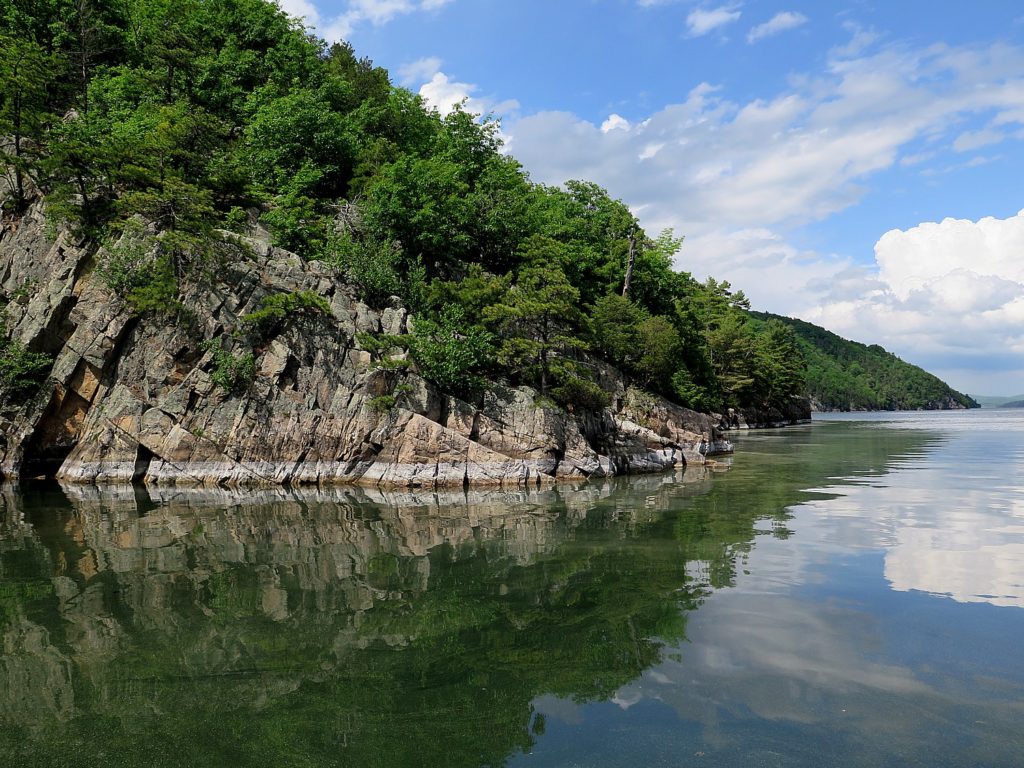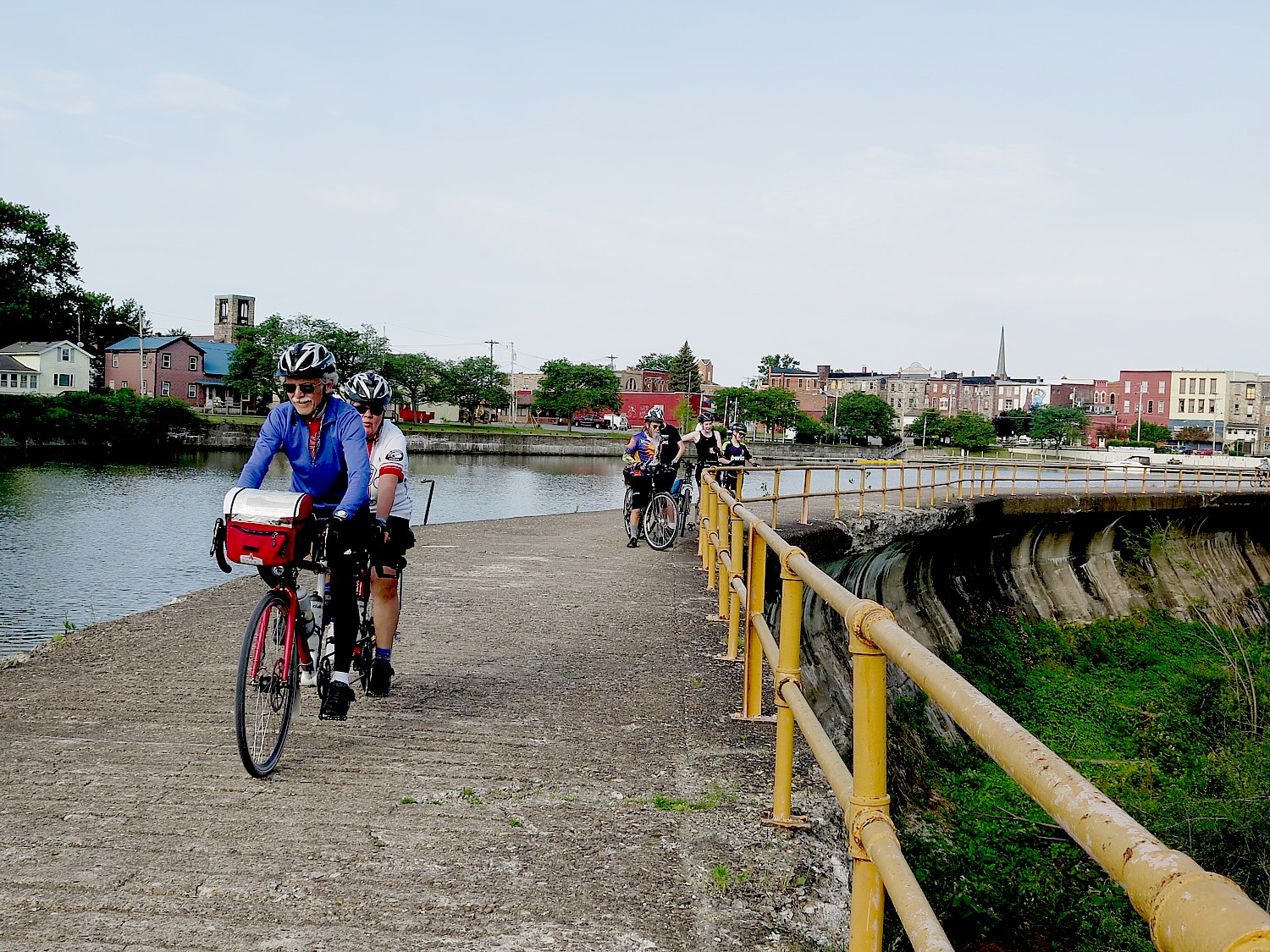
A remarkable near 90-degree turn on the concrete bridge out of Medina on the Erie Canalway. A new form of mortar had to be devised to build this part of the Erie Canal © Karen Rubin/goingplacesfarandnear.com
By Karen Rubin, Travel Features Syndicate, goingplacesfarandnear.com
Day 2: Medina to Fairport, 53 Miles
Immediately upon leaving Medina on Day 2 of Parks & Trails NY’s 19th annual 8-day, 400-mile Cycle the Erie biketour, which transverses New York State from Buffalo to Albany, we reach one of the highlights of the Erie Canalway: you ride over a concrete embankment that goes over a waterfall which turns at a hard angle. You marvel at the construction as much as the view – the quaint Industrial-era town on one side, the dramatic forest and falls on the other. I stop at one of the many historic markers that are along the trail to learn about the special mortar they had to devise to accomplish this engineering feat.
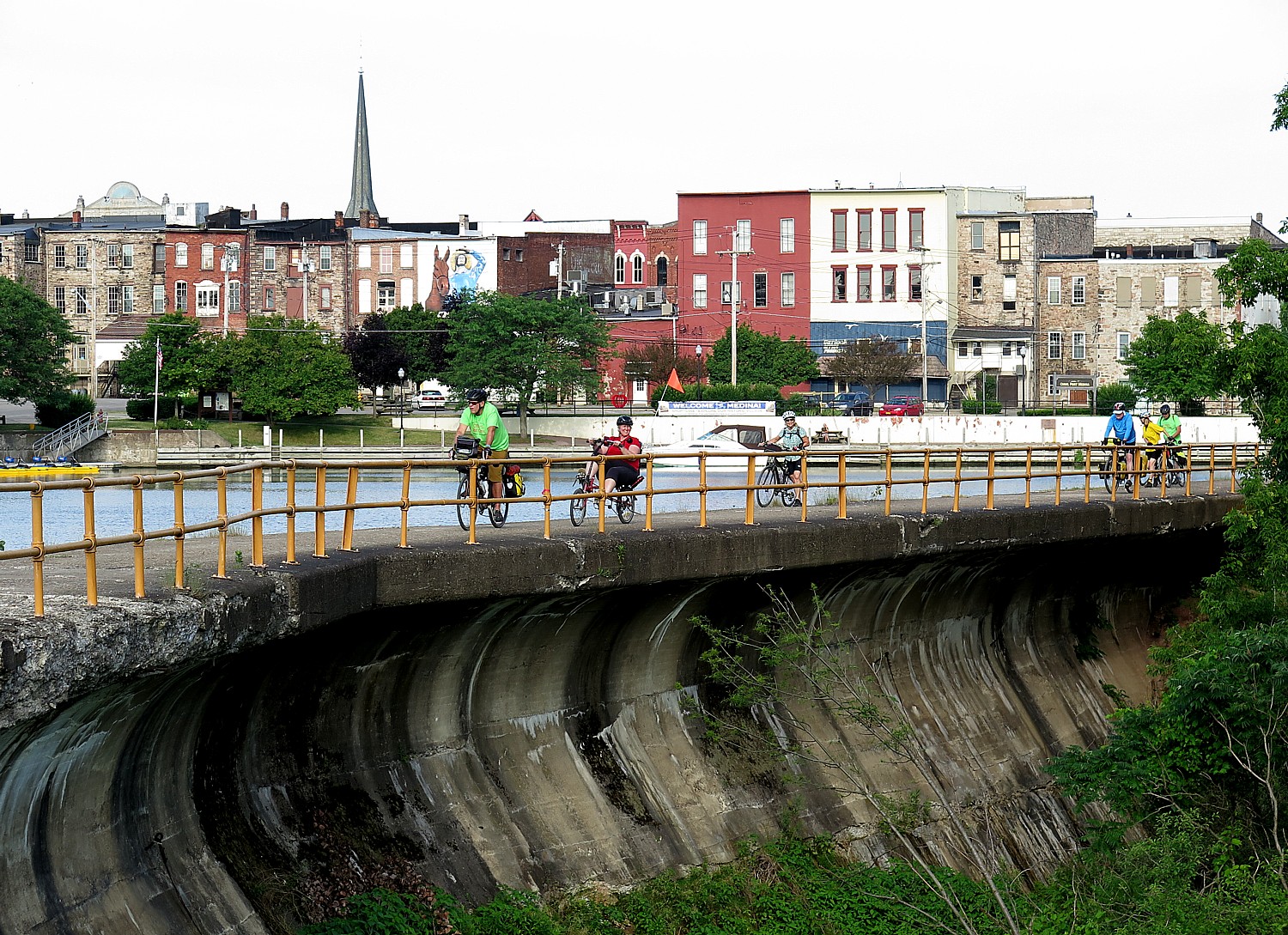
Just a little further is another remarkable feature of the Erie Canalway, the multi-use trail built mainly upon the original towpath that makes biking so pleasant: the culvert. We leave our bikes on the trail and climb down an embankment to where this tunnel has been cut under the canal. Here you can really appreciate just how shallow the Erie Canal is – really just a bathtub. This is the only place on the 353-mile long canal where a road is built under the canal – and is quite a dramatic scene.
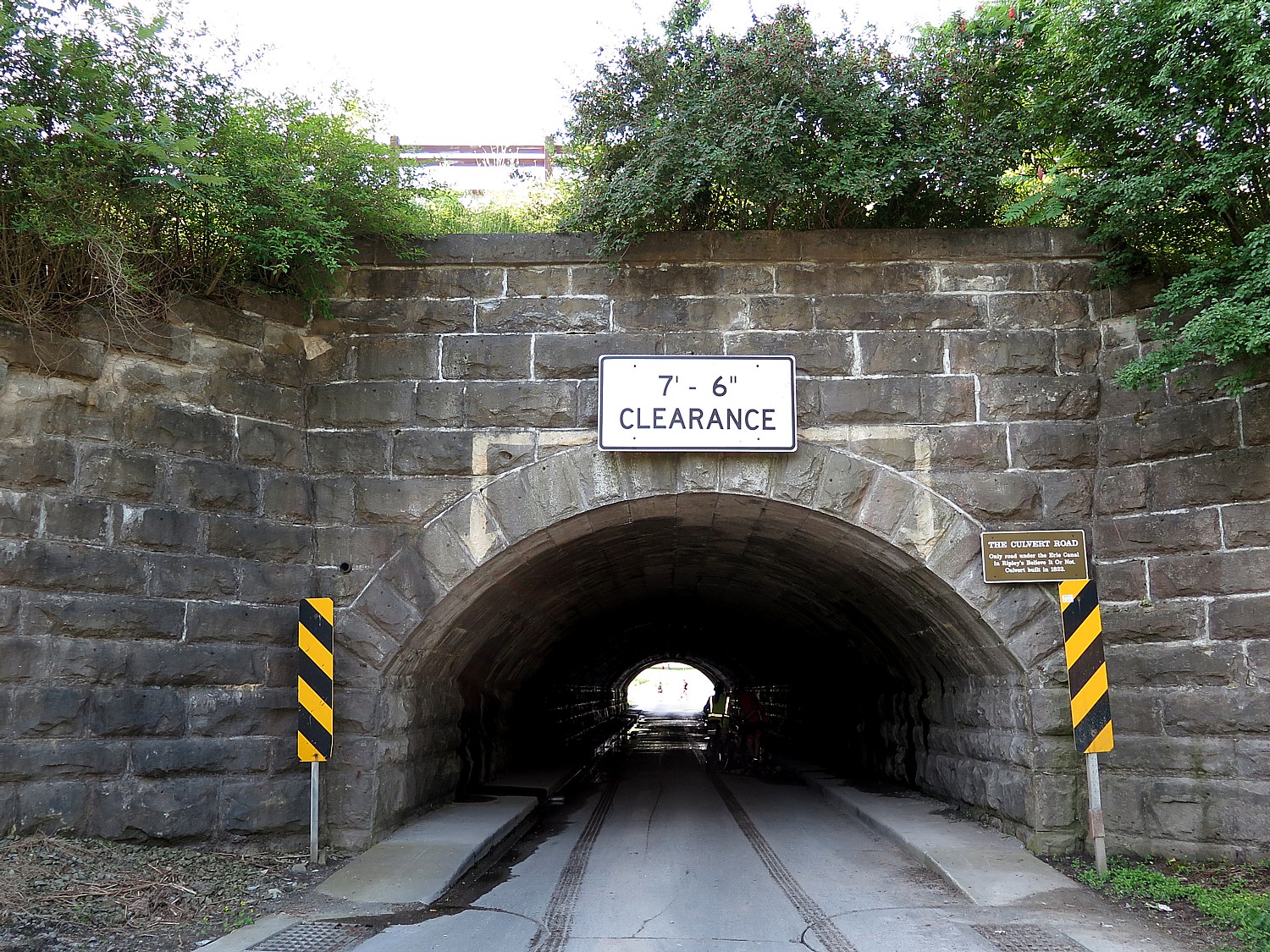
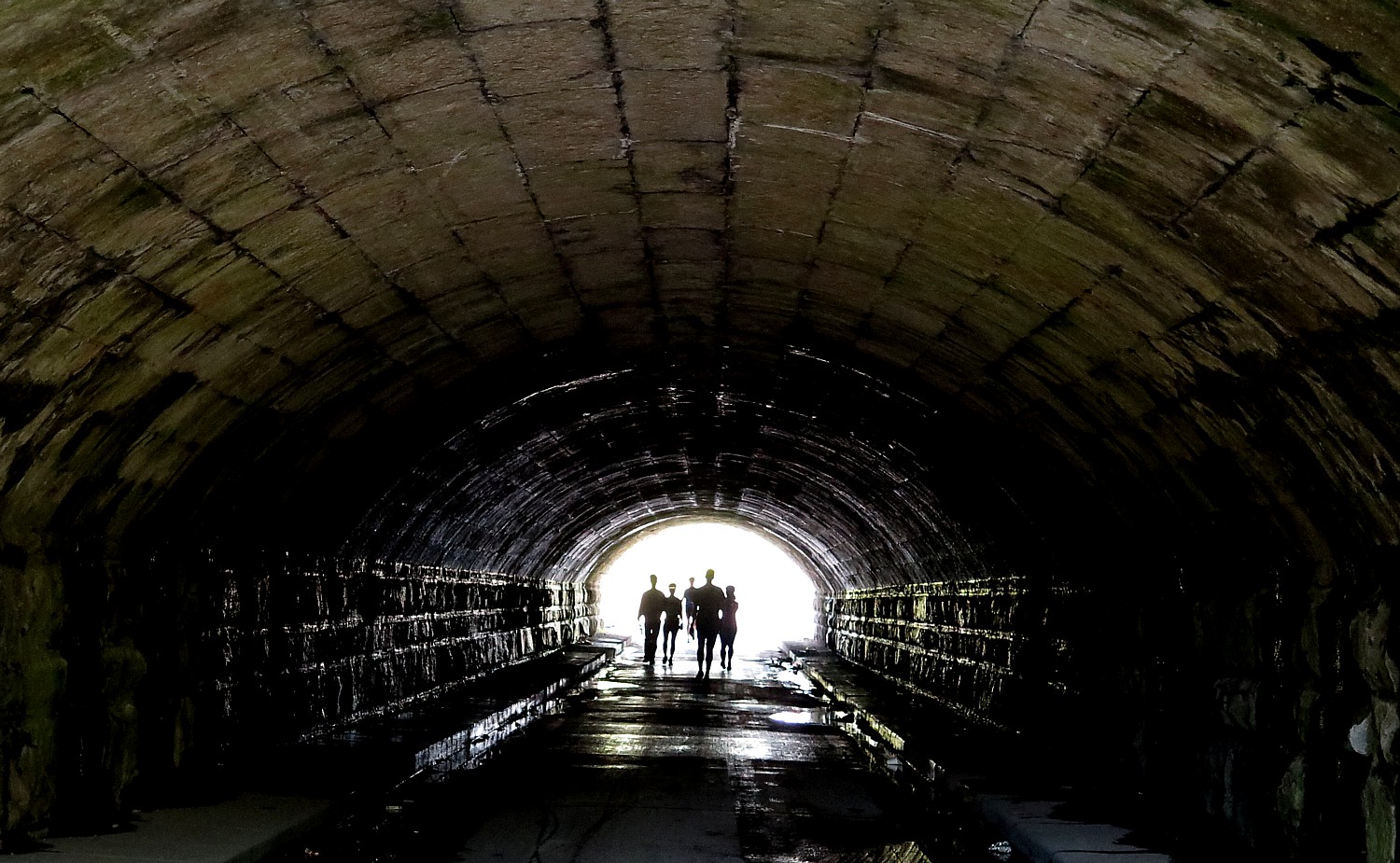
This is also one of the more scenic parts of the trail, at least to an urban Downstater like me: here we see sprawling farmland. I later learn that the Erie Canal does not just play a role in transportation (now more recreational than commercial), but in irrigation and flood control.
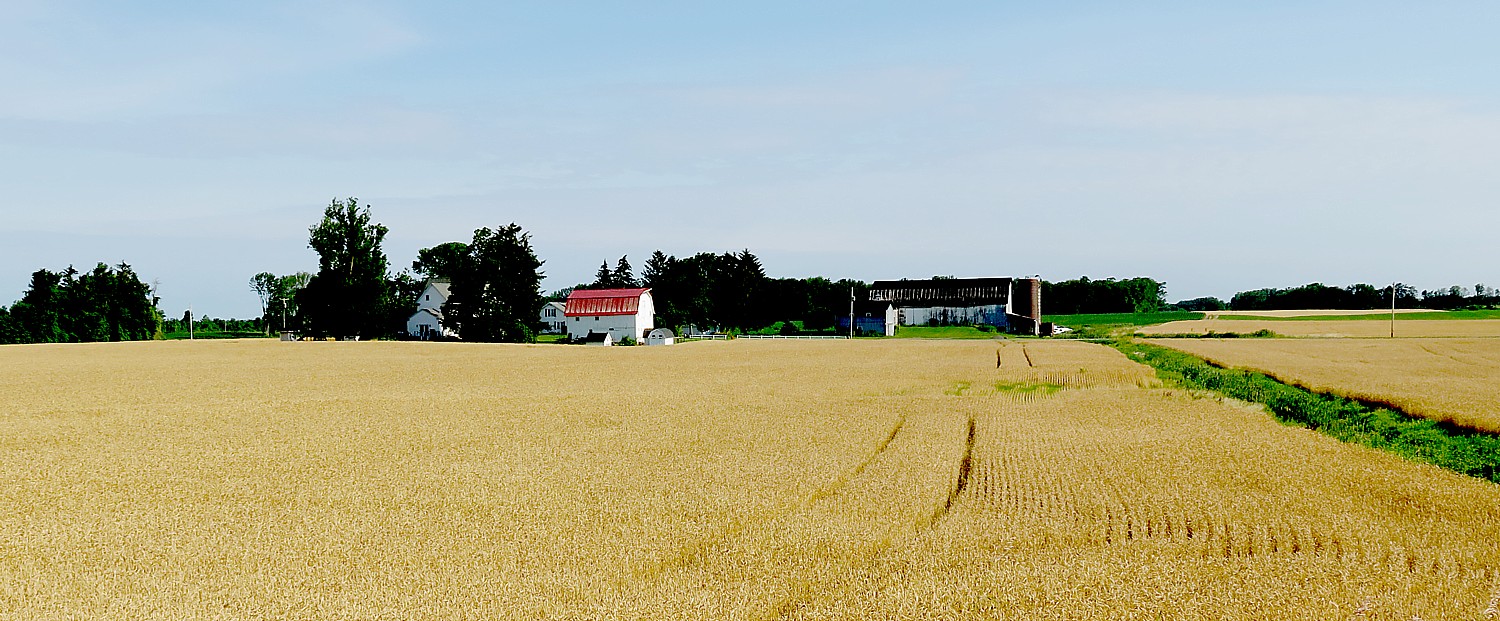
We come into Albion, one of the charming canaltowns we travel through, so rich in history, where you see in the stunning architecture, and the opulence that the canal and the Industrial Revolution created – civic buildings, churches, banks.
Because I had been here before, I knew to ride a short distance up Main Street from the canal where there are churches and a Town Hall on four corners.
One of the churches, Pullman Memorial, has drop-dead magnificent Tiffany stained glass windows. I meet Bill Lattin, a church volunteer, and here is one time that my tardiness in leaving our campsite is rewarded: he wasn’t informed (as usual) that the 750 Cycle the Erie riders (a record) were coming through this morning, so no one was at the church to open it up for visits, but as he was coming in to town, he saw us and opened the church just in time for my visit.

George M. Pullman (1831-1897), who made his fortune manufacturing the luxurious railroad sleeper cars, was born in Albion. He had long before moved away but remained close to people in his hometown and one of his friends, Charles A. Danolds, in 1890, convinced him to donate $67,000 to build the church.
Shanties were set up to house the stonecutters who managed to complete the building in less than a year’s time and the church was dedicated January 1895. Pullman’s daughter bequeathed $5,000 to maintain the exquisite stainless glass window of Jesus which was created in the Tiffany Studios in New York (look closely to see the Tiffany signature etched in a corner) – an early example of Art Nouveau. There is also a 1,248-pipe organ with pipes of gold leaf decorated by Tiffany Studios. Lattin tells me that there are only 30 people left in the congregation (Albion has a population of 5,000). (10 East Park St., Albion, NY `14411, 585-589-7181, PullmanMemorial.org).
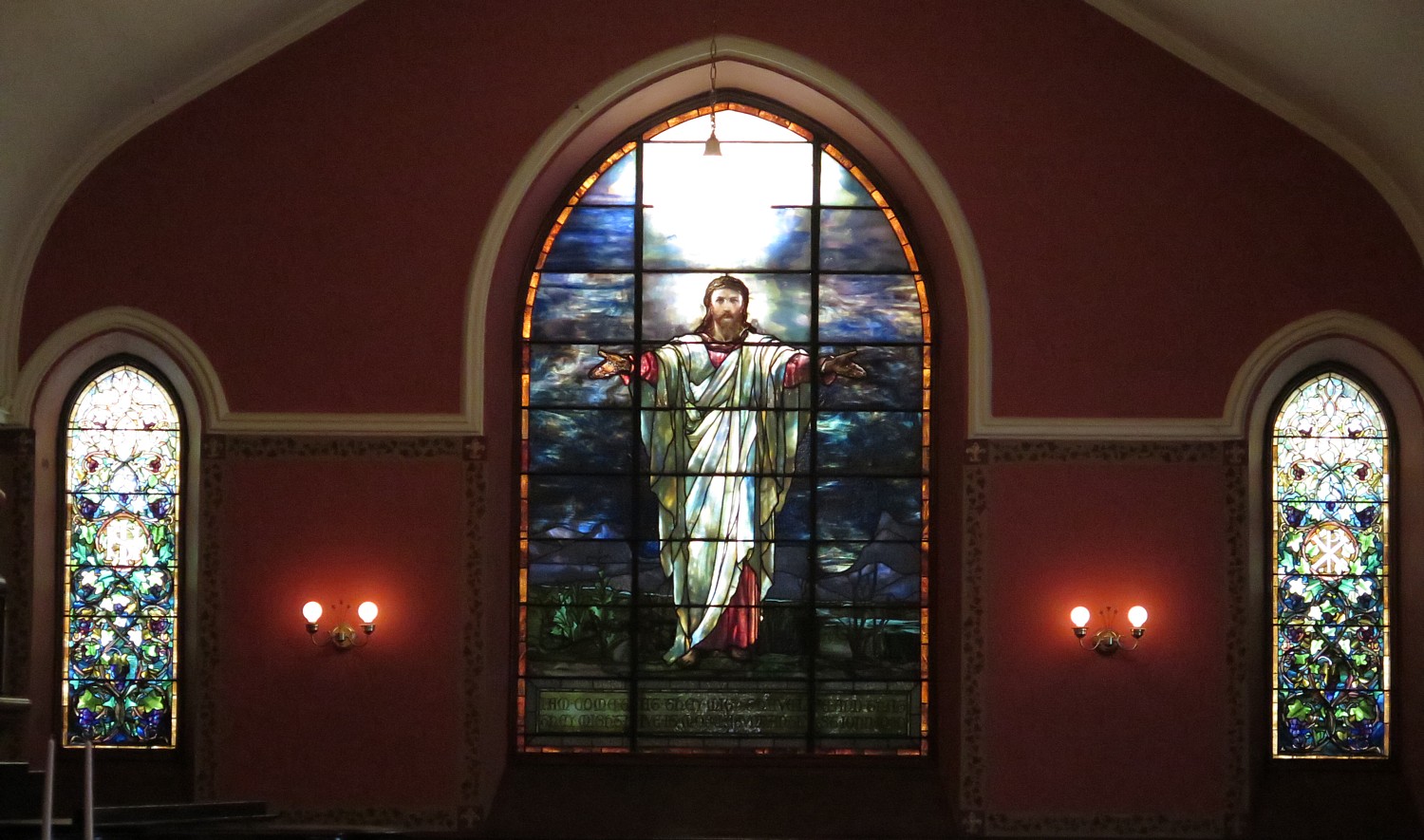
At Mile 21, we come to a small town of Holley, settled in 1812 and established on the original Erie Canal. Originally, this was an enormous and complicated loop that was straightened out when the canal, already hugely successful in its first several years, was expanded, putting the town a few blocks from the repositioned canal. The restored railroad depot (circa 1907) is now a museum. Holley was the center of a community of Italian immigrants who were brought over to work in Medina’s sandstone quarry (the sign says, “affectionately called, Podunk”).
As we ride into Brockport, where one of the State University of New York campuses is located as well as a prison, we are greeted with water, lemonade, and free stamped postcards. Brockport has a charming Main Street. Brockport, it turns out, was where Cyrus McCormick contracted a factory to manufacture his reapers (there is a marker near the dock), seeing that the reapers could be shipped on the canal to the Midwest where he was getting orders from the large farms.

We ride passed Adams Basin and Spencerport (recommended for our lunch stop), where a unique lift bridge carries Main Street over the canal.
The part of the ride that goes into Rochester is some of the toughest – a series of up-and-down hills and dales, twists and turns, but from the perches we can see how the canal was sheer-cut into high rock faces.
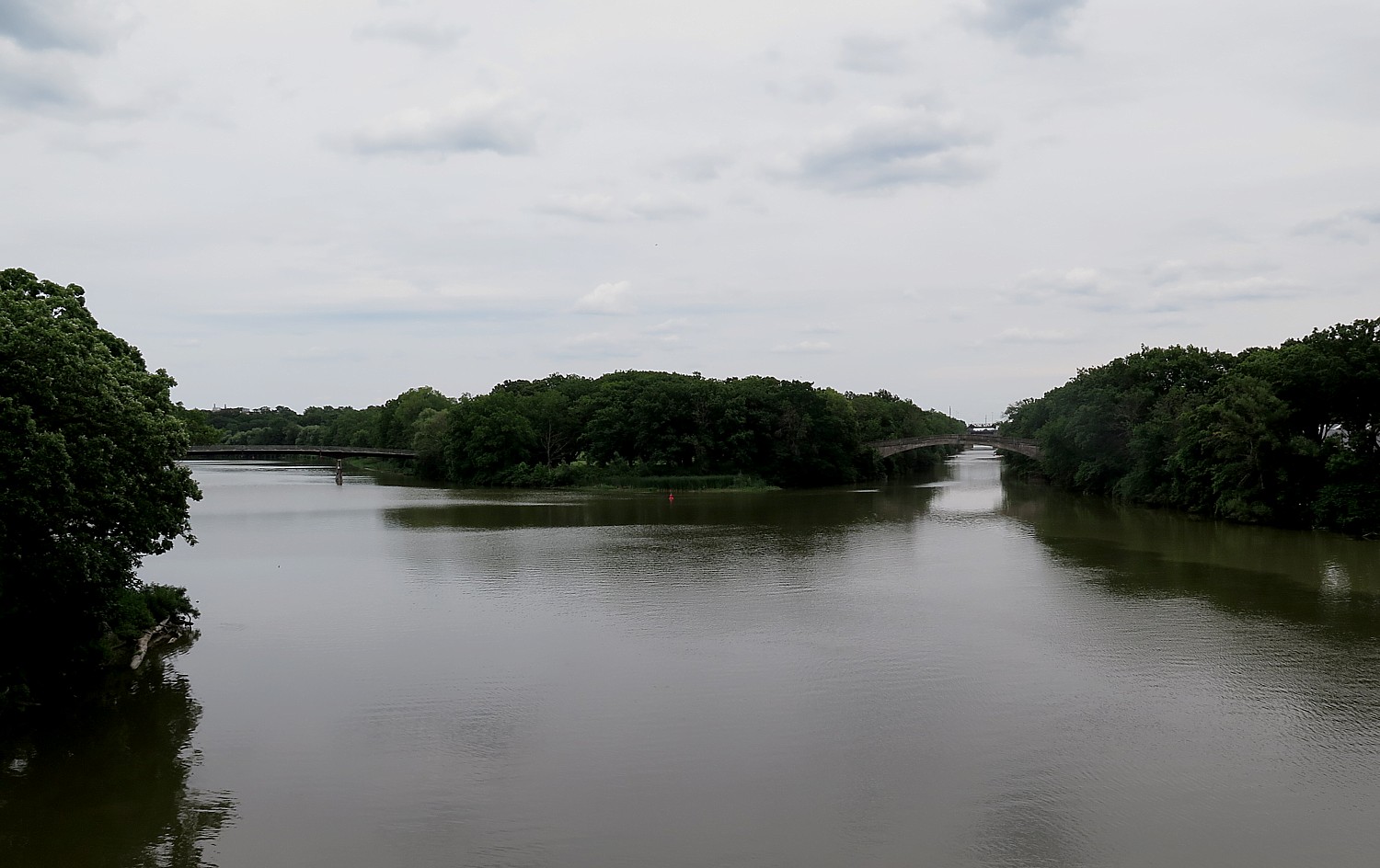
We ride over a bridge from which we can have a dramatic view of where the Erie Canal crosses the Oswego River. (I’ve done this by canalboat, a floating RV, which you can rent through Mid-Lakes Navigation, Skaneateles. So much fun to go through the canal locks, under the lift bridges, tying up where whimsy takes you. 800-545-4318, [email protected], midlakesnav.com.)
Our rest stop is here at Rochester (mile 45.8) is at a beautiful park along the Genesee Valley Waterway Center, where the organizers have arranged for us to go swimming, canoeing and kayaking, as well as for escorted bike rides to High Falls – a phenomenal sight – in downtown Rochester. REI has sponsored the stop, as well as bike repair.

The Erie Canal, known as “The Mother of Cities,” turned tiny Rochesterville into an American “boom town” and today, is the third largest city in New York State, the brochure says. The canal first went through the center of the city, across an 800-foot aqueduct over the Genesee River – a major engineering achievement at the time. A second, sturdier version, built in 1842 to replace the original aqueduct, can be seen at the base of the Broad Street ridge. Eventually, as Rochester was built up and the canal interfered with traffic, the canal was rerouted to bypass the city.
But as we leave Rochester, we see how the Erie Canal is still the “mother of communities” – along much of the trail, we see new housing developments that come right up to the Canalway.
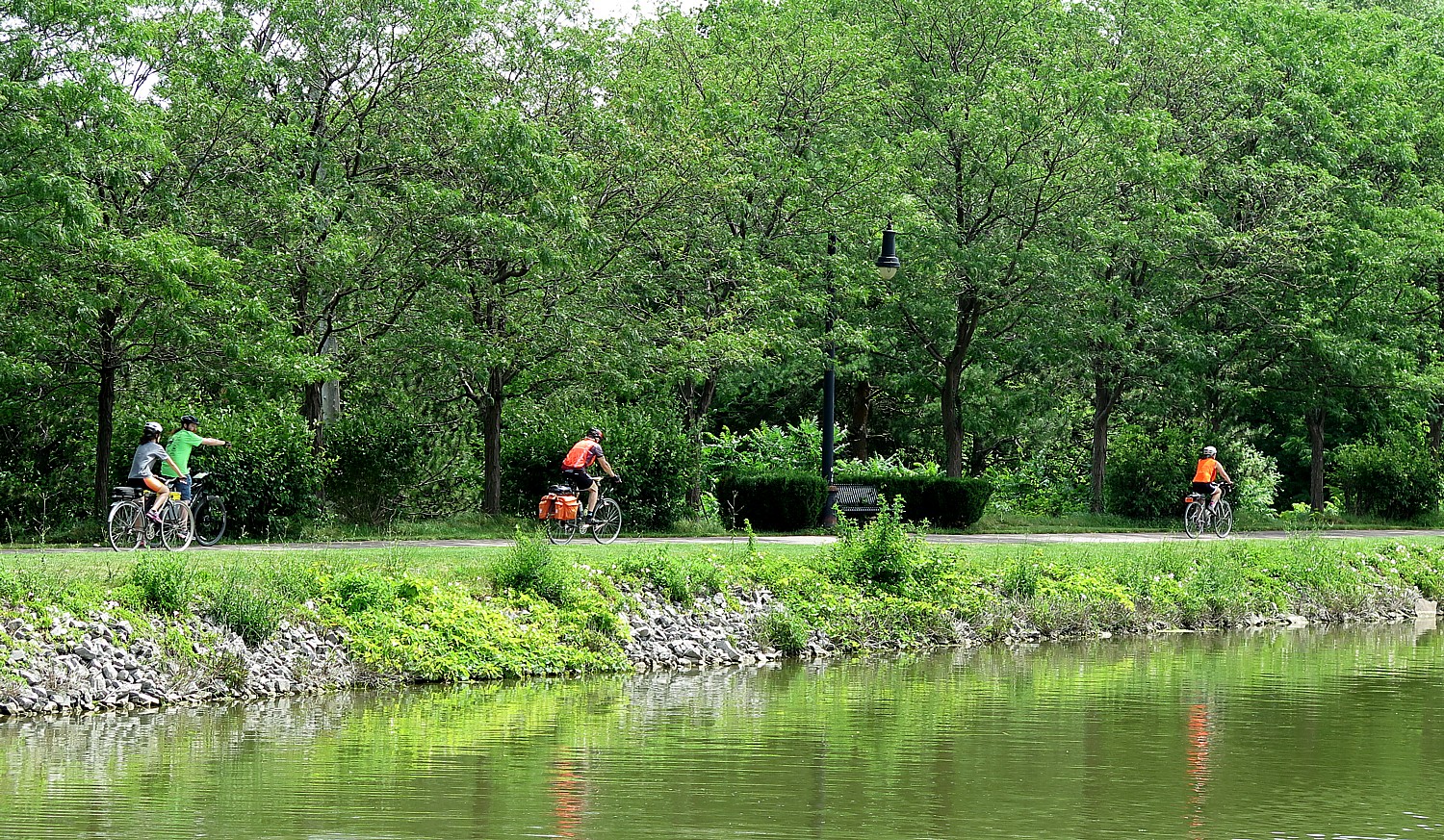
We now ride along the Great Embankment, yet another engineering marvel. At the evening lecture, we had learned that they actually had to move a creek and flood a town in order to straighten out the canal, but this required engineering that had not yet been invented.
“You can get a lot done when you don’t have to file environmental impact statements. They moved the canal, redirected the creek, to create the Great Embankment.”
They put in floors of concrete and the re-done canal opened in May, 1912. But just a few months later,, in September, there was a break at Bushnell’s Basin and it collapsed.
They managed to keep navigation flowing by creating 70-foot high stilts to support a wooden trough while they rebuilt the Great Embankment from the bottom up (quite literally a concrete bathtub). There is a photo from May 1918 of the men standing in it when it reopened.

This day’s route has us riding through a sequence of charming canaltowns – Spencerport, Brockport, Pittsford (one of my favorites), and finally, our destination for the night, Fairport (my favorite) – which are experiencing the most marvelous renaissance because of the repurposed Erie Canal: no longer a polluted cesspool of stinky commercial boats, foul water and even fouler boatmen, but pastoral scenes of non-intrusive recreational boats. Indeed, there are charming residential communities – among them, at Buffalo, Rochester, Pittsford and Fairport – that are sprouting up right along the canal. Some like in Rochester are a planned community of single-homes built around a recreation center, and others, like in Spencerport and Fairport, are townhomes that seem ideal for empty-nesters (or people escaping summer heat in Florida).
Pittsford and Fairport are the best examples of this renaissance. In Pittsford (where I tied up one summer in the canalboat to overnight), you can see what was a grain silo repurposed as an office tower, and other structures turned into charming restaurants and boutiques.
The lift bridges are themselves an attraction – Fairport’s lift bridge, which celebrated its centennial in 2014 is a particular attraction because it has no right angles.
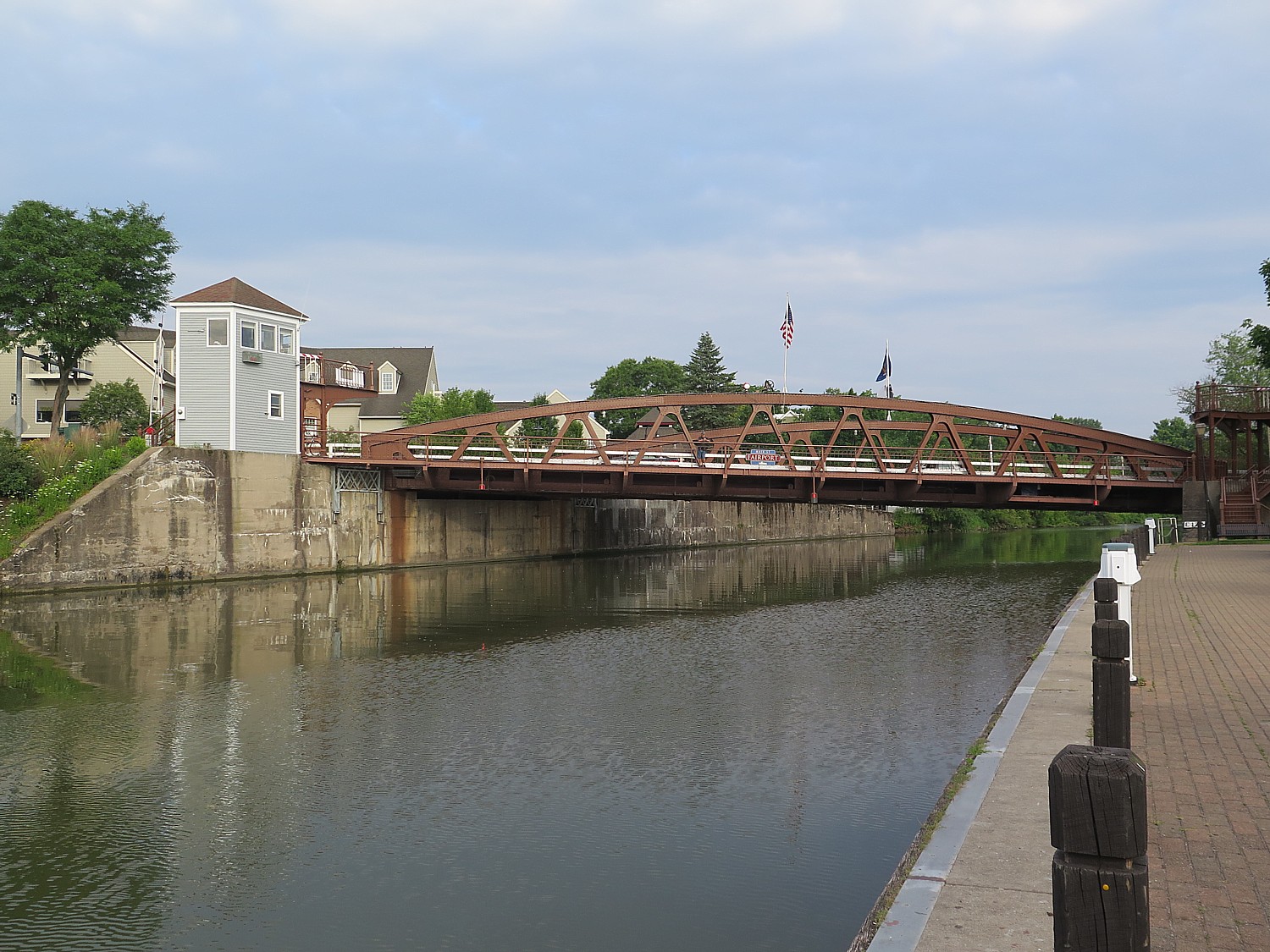
Our campsite tonight is at the Minerva DeLand School in Fairport, and they have arranged for shuttle buses to take us back into Fairport to enjoy the lovely restaurants and shops. But I don’t want to miss the talk by Andy Beers, director of the Empire State Trail about the Erie CanalwayTrail and New York State’s plans to build a new Empire State Trail – for a total of 750 miles of dedicated biking and walking trails. The plan is to complete the Erie Canalway from Buffalo to Albany (long the goal of Parks & Trails NY and this annual Cycle the Erie ride), and also to link and build new trails that will extend from the tip of New York City (the Hudson River trail) north to the Canadian border, making the longest state ‘shared use’ trail in the nation.
Day 3: Fairport to Waterloo/Seneca Falls, 62 Miles
This is my second time doing the Cycle the Erie ride, and I am attuned to the things I did not get to do the first time. So, leaving Fairport to start Day 3’s ride, I am alert to stopping off the trail (crossing over the canal) to visit Macedon, where you follow a nature trail to the end and come to a point where you can see where all three canals – the original 1825 canal, the expanded canal, and the Modern Barge canal – converge together.
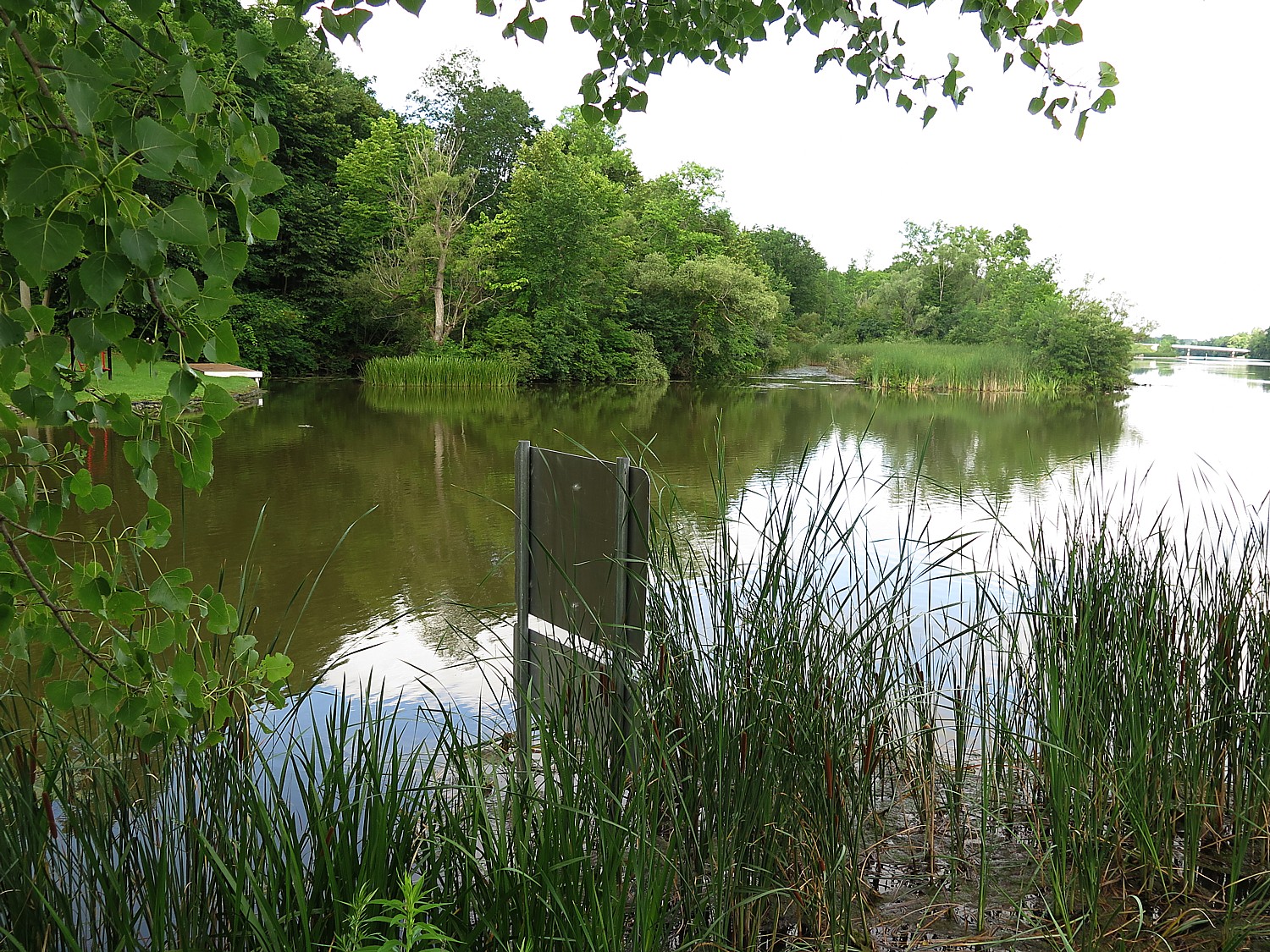
Our rest stop is in Palmyra, a 19th century village which predates the Erie Canal (that’s why it isn’t called Palmyraport), which has 200 buildings on the Historic Register in one square mile, and where Joseph Smith founded the Mormon religion (you can visit his farmhouse). I take time to ride through Palmyra, which I had visited more extensively on a prior trip, by Mid Lakes Navigation canalboat (like an RV on the water) to enjoy its architecture. (www.palmyrany.com, 315-597-4849).
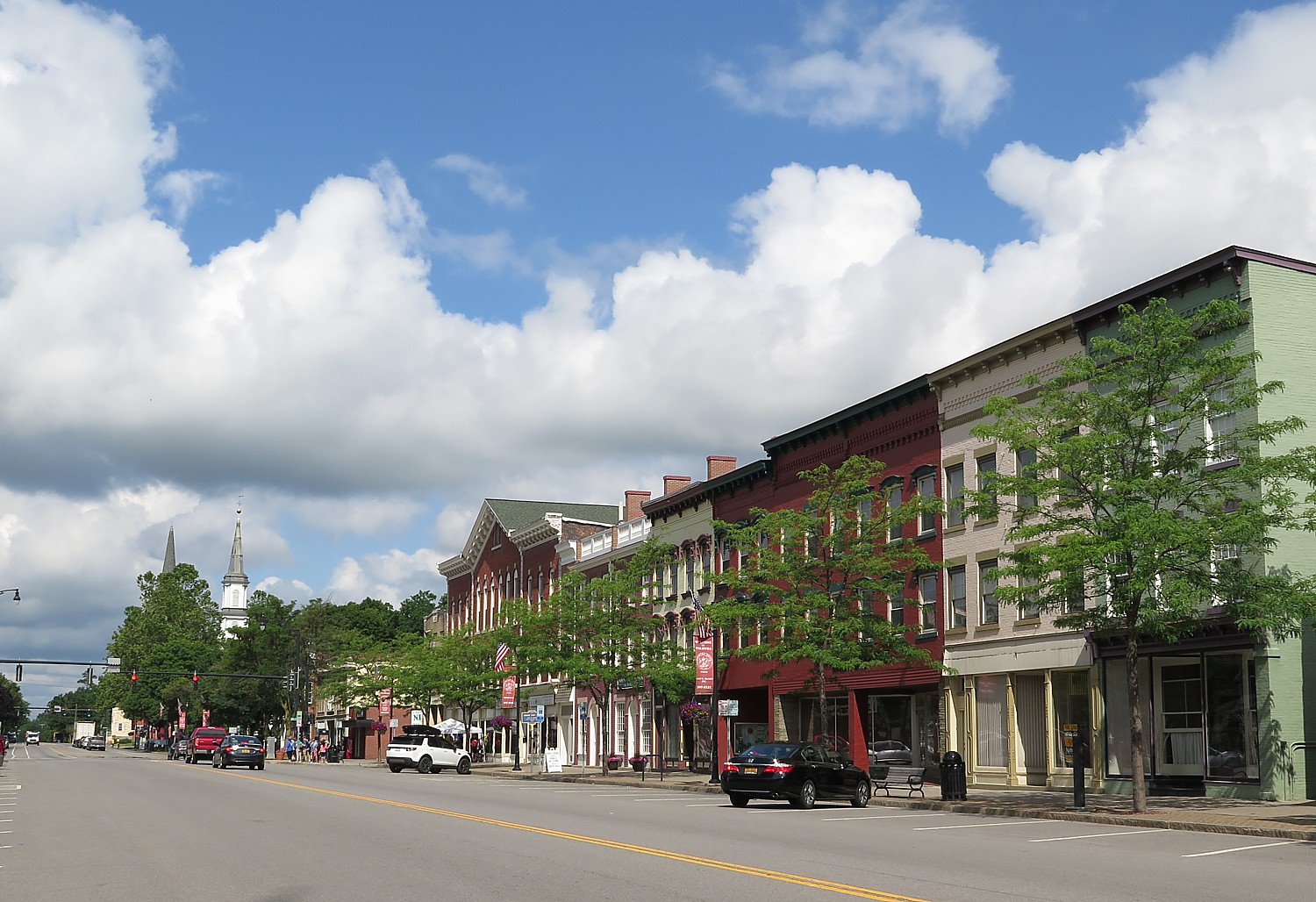
There is an unexpected treat at Newark, where the community has set up a welcome table for us at the canal park. You walk down to the canalside walkway (excellent rest facilities) and there are the most magnificent murals painted on the base of the bridge that tell the story of life for canalers on the Erie Canal with reflections on the Civil War era, some of which can only be fully appreciated if you come by boat.
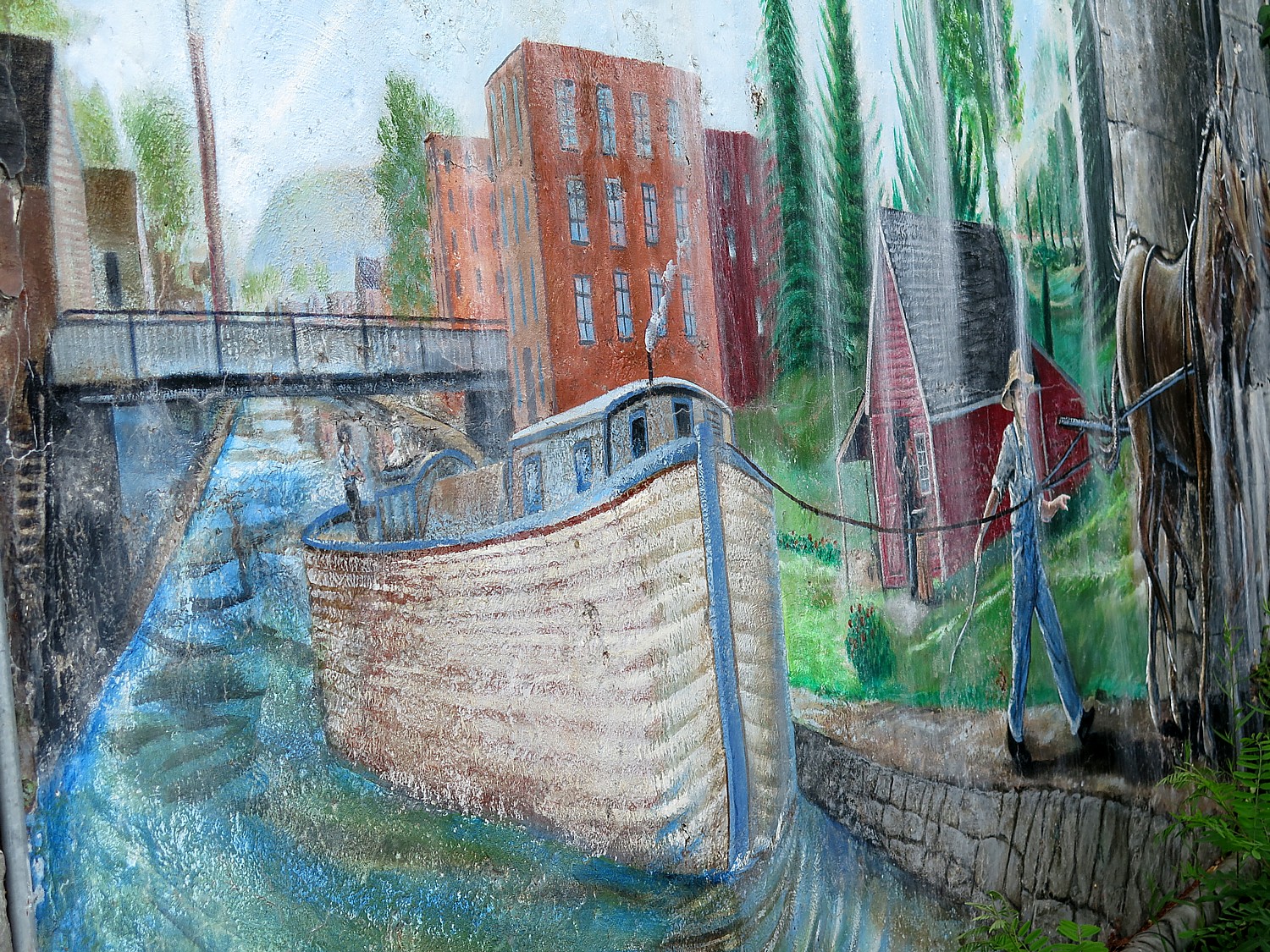
Peppermint Museum
On my first Cycle the Erie ride, because I was in a hurry to get ahead of the rain (it didn’t work), I missed the Peppermint Museum in Lyons, where a clever food scientist (not sure that is what he was known as), H.G. Hotchkiss, revolutionized the use of peppermint oil, so I was intent to visit this time. Once again, this is a tiny site that you might miss except if you were looking for it, and it proves fascinating in ways you never expected.
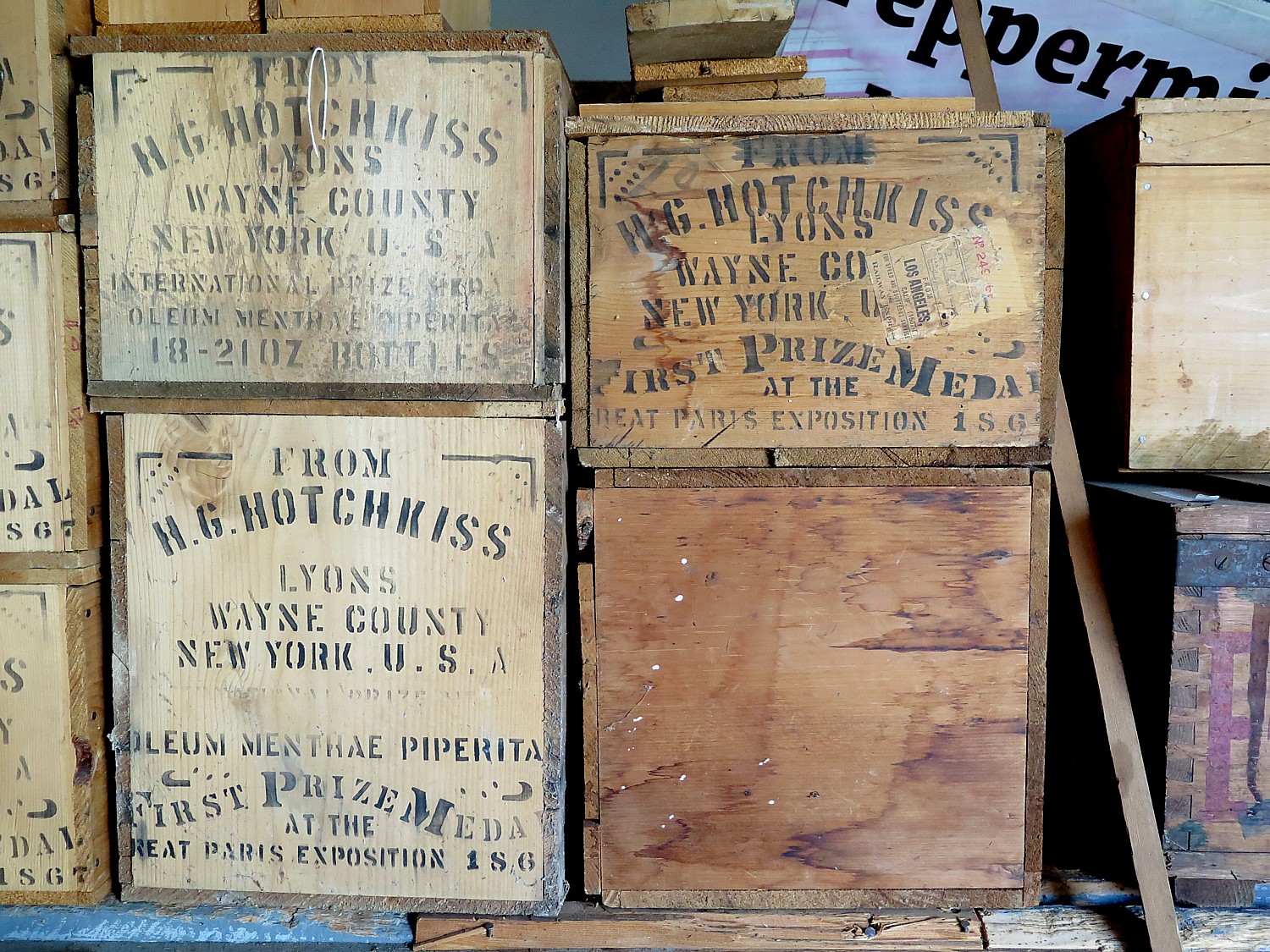
The Erie Canal is what brought Hiram Hotchkiss to Lyons in 1841. Indeed, there was an oversupply of peppermint oil, an herb that was grown extensively in fields around Lyons. But because of the Erie Canal, Hotchkiss had the idea to export the peppermint oil to Europe. Europe already had its own peppermint oil and his product was at first met with skepticism. But Hotchkiss perfected the process and his product won medals. The long success of H.G. Hotchkiss Company in peppermint and other essential oils made Lyons, New York, the Peppermint Capital of the world for many years. Indeed, at one time, Hotchkiss was responsible for half the annual production of peppermint oil in the United States. Canallers would say they could tell when they were approaching the village by the smell.

Until Hotchkiss, peppermint oil was used for medicinal purposes and to make tea. But Hotchkiss expanded its use – Beech-Nut (which has a factory in Canajoharie, another town where we will stay) first started using peppermint in candy and gum.
Hotchkiss, who was brilliant at branding and packaging in gorgeous blue glass bottles manufactured at the Clyde Glassworks (another town we visit) became a millionaire. He had a 42-room home a few blocks up the hill, which a couple from New York City purchased.
We get to visit Hotchkiss’ laboratory and warehouse; the parlor offers an exhibit honoring suffragettes. Indeed, we learn that Lissat Hotchkiss Parshall (1840-1913),one of Hotchkiss’ seven daughters, was a suffragette and Anne Hotchkiss (1914-2010),was the company’s fourth president (1963-1984), and one of the first women to become president of a company. This is most fitting because we will wind up this day in Seneca Falls, the birthplace of Women’s Rights.

Gradually, though, Lyons farmers started planting apples and switched to dairy production; and the peppermint factory closed in 1990. The town just about forgot about its peppermint past and locals didn’t know what the building was until the Lyons Heritage Society reopened it as a museum.
(The Peppermint Museum, an absolute jewel, is open by appointment only; you can arrange a tour by calling Patty Alena at the Lyons Heritage Society, 315-946-4596; 95 Water Street, Lyons, NY 14489, www.lyonsheritagesociety.com).
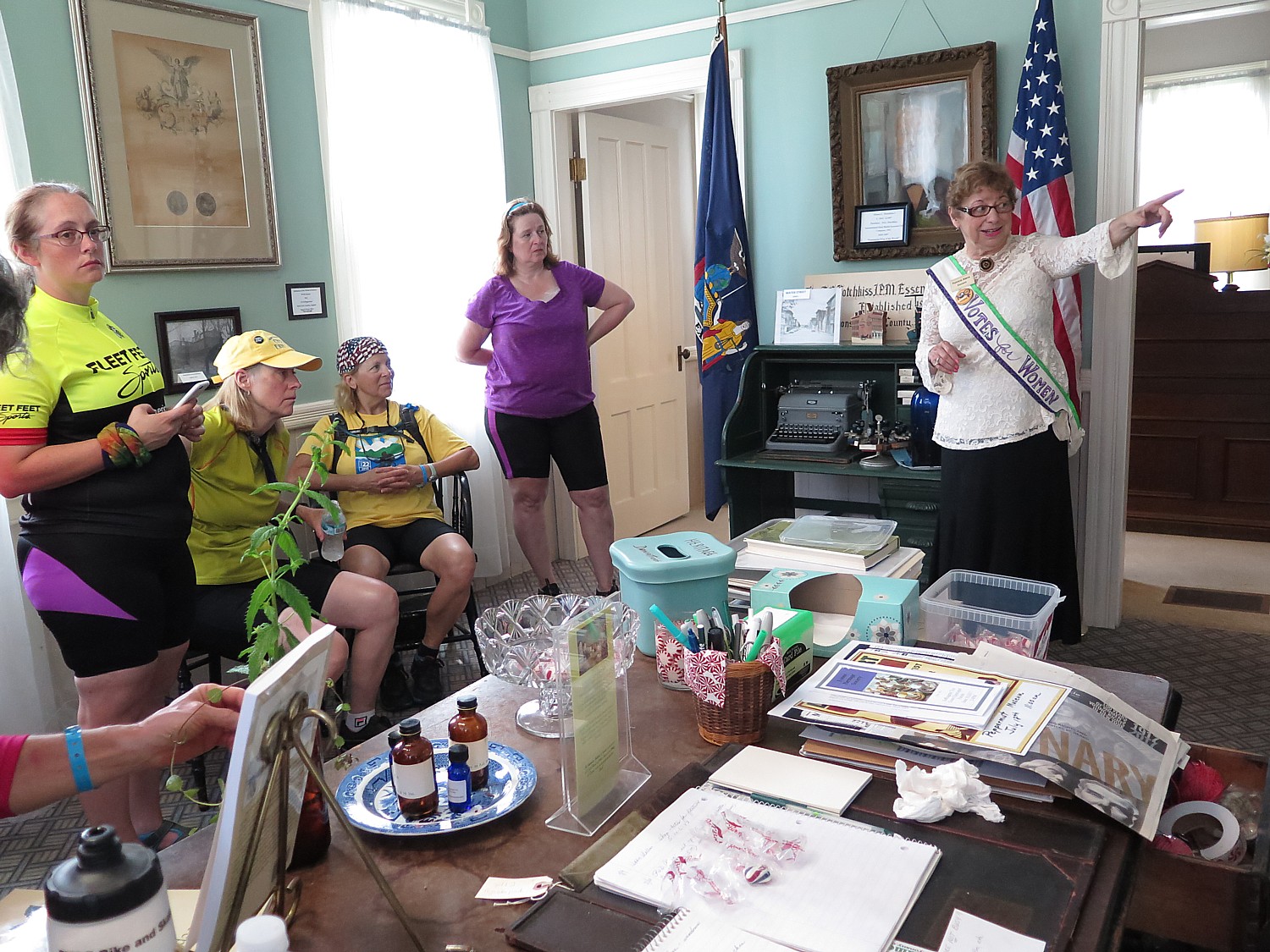
I ride up to the Lyons town square and get some feel of the community before continuing on the trail.
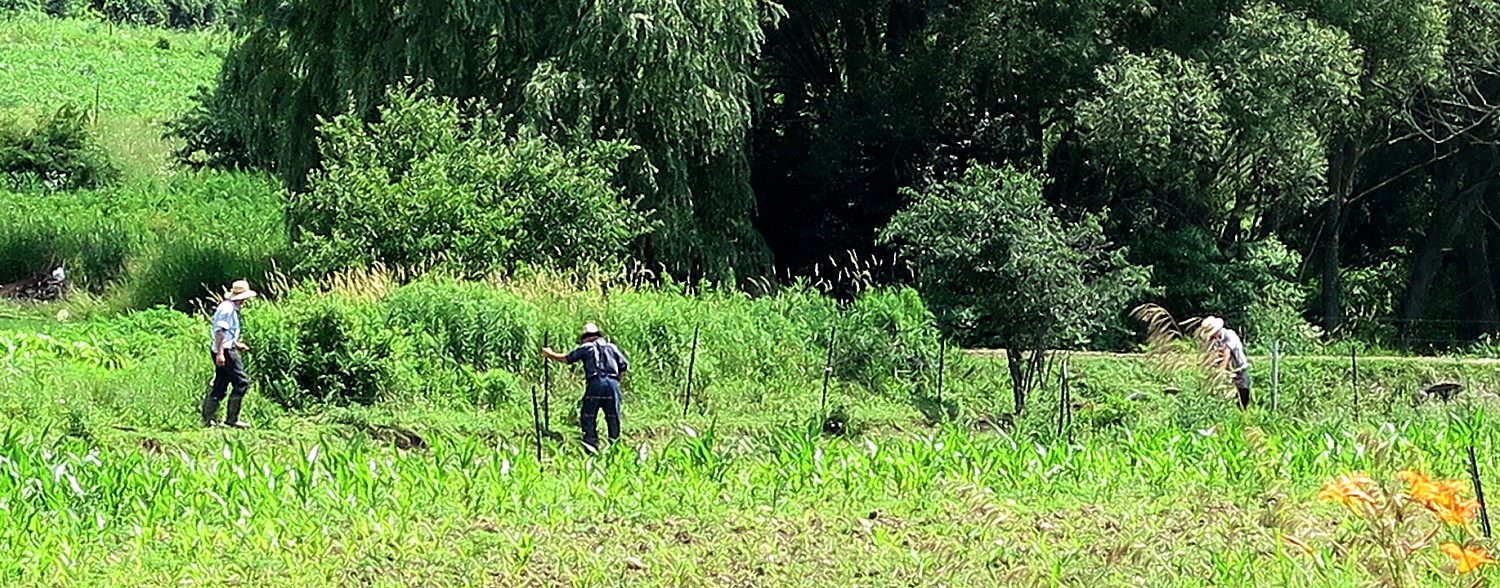
We have our afternoon rest stop in Clyde (the townspeople have gone all out on the Village Green with music and ice cream for us) and then go off the Canalway trail onto country roads through Amish Country (who knew there was an Amish country in New York State?), some of the prettiest farmland anywhere. On my last visit, it started pouring immediately as we left Clyde, and I was unable to capture these exquisite scenes that evoke Currier & Ives, in photos. This time, I am lucky because it is sunny and some of the farmers are out. I pass the barn where last time we took shelter from lightening.
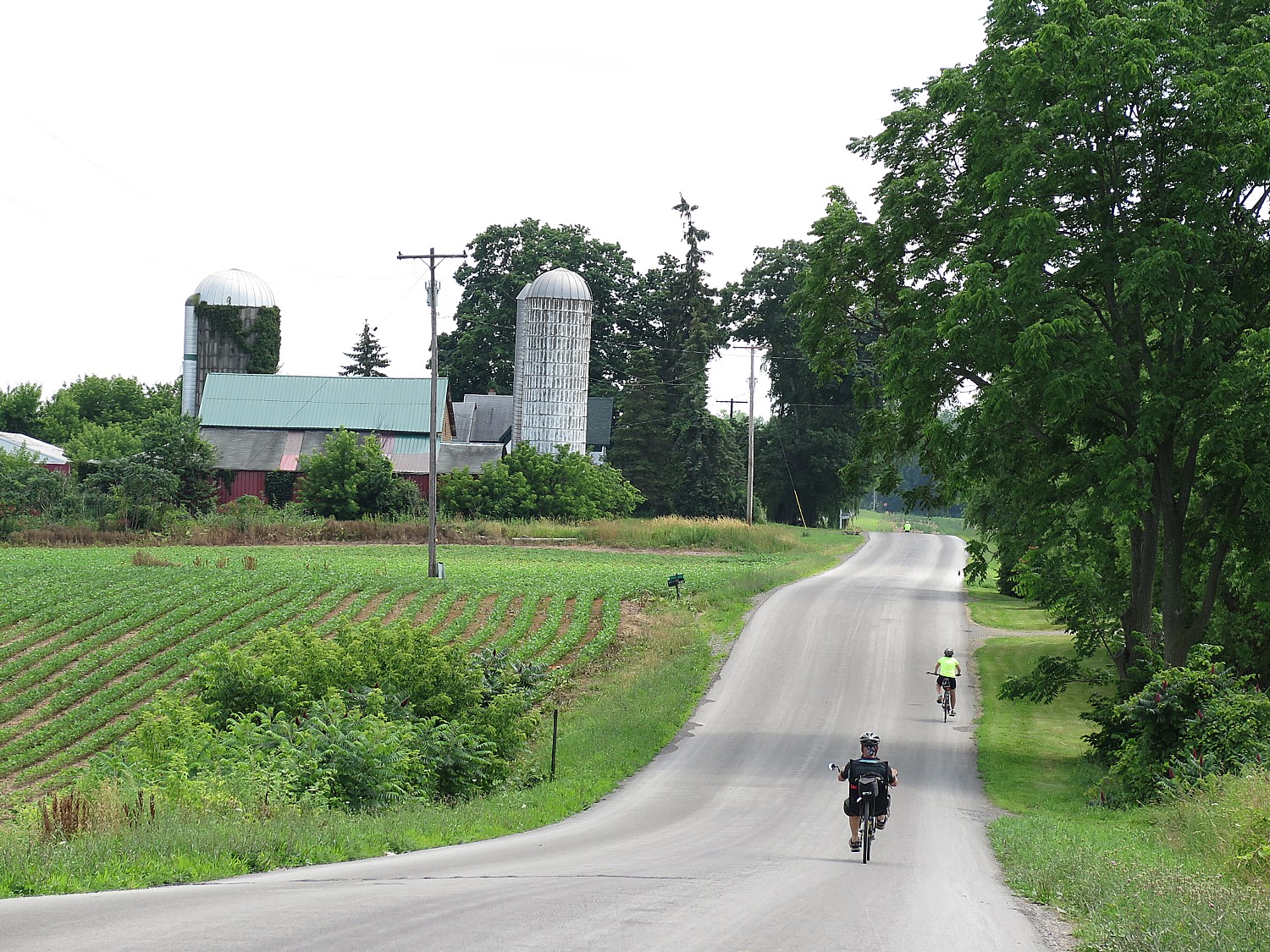
Our 51-mile ride ends Day 3 of our 8-day, 400-mile Cycle the Erie biketour at another stunning school campus, Mynderse Academy in Seneca Falls.
Because I want to have as much time as possible in Seneca Falls, where the Women’s Rights National Park and other sites are staying open until 8 pm for us, I drop my things in the school gymnasium for “indoor camping,” (the school even has a TV where we get to watch the All-Stars baseball game at night) and rush out to the school bus which is shuttling us into town. Tonight is one of the two during our eight-day trip where we are on our own for dinner, but I occupy my time touring the attractions dedicated to Women’s Suffrage (New York State is making a big deal of the centennial of the 19th Amendment that is coming in 2020) and exploring Seneca Falls.
The 20th Annual Cycle the Erie Canal ride is scheduled July 8 – 15, 2018 (www.ptny.org/canaltour). In the meantime, you can cycle the trail on your own – detailed info and interactive map is at the ptny.org site (www.ptny.org/bikecanal), including suggested lodgings. For more information on Cycle the Erie Canal, contact Parks & Trails New York at 518-434-1583 or visit www.ptny.org.
Information is also available from the Erie Canalway National Heritage Corridor, Waterford, NY 12188, 518-237-7000, www.eriecanalway.org.
More information about traveling on the Erie Canal is available from New York State Canal Corporation, www.canals.ny.gov.
Next: Seneca Falls Hails its Role in Birthing Women’s Rights
See also:
Cycle the Erie: 400 Miles & 400 Years of History Flow By on Canalway Bike Tour Across New York State
_____________________________
© 2018 Travel Features Syndicate, a division of Workstyles, Inc. All rights reserved. Visit goingplacesfarandnear.com, www.huffingtonpost.com/author/karen-rubin , and travelwritersmagazine.com/TravelFeaturesSyndicate/. Blogging at goingplacesnearandfar.wordpress.com and moralcompasstravel.info. Send comments or questions to [email protected]. Tweet @TravelFeatures. ‘Like’ us at facebook.com/NewsPhotoFeatures


